Spain 2023 Part Three: Seville (Day Two)
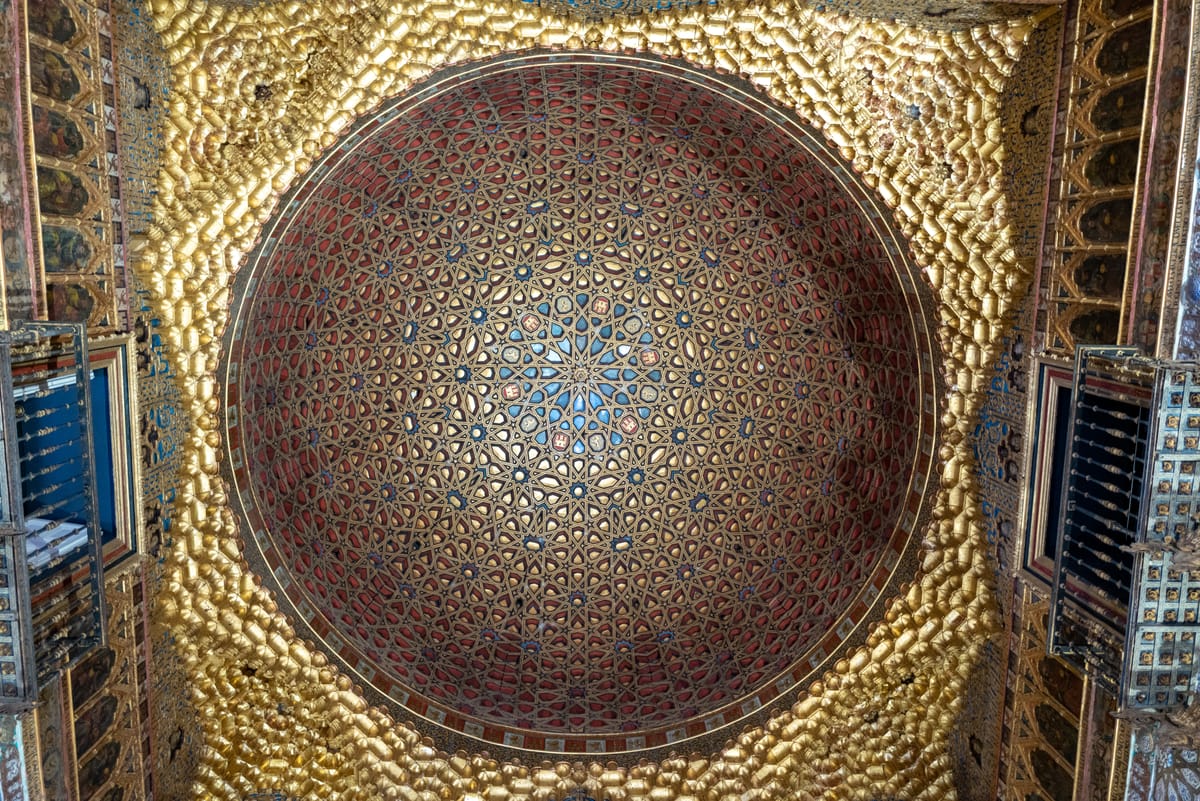
This is part three in a series documenting our trip to Spain in 2023.
Spain 2023 Part One: Our trip plan and our first two days in Madrid.
Spain 2023 Part Two: Seville (Day One): Our first day in Seville.
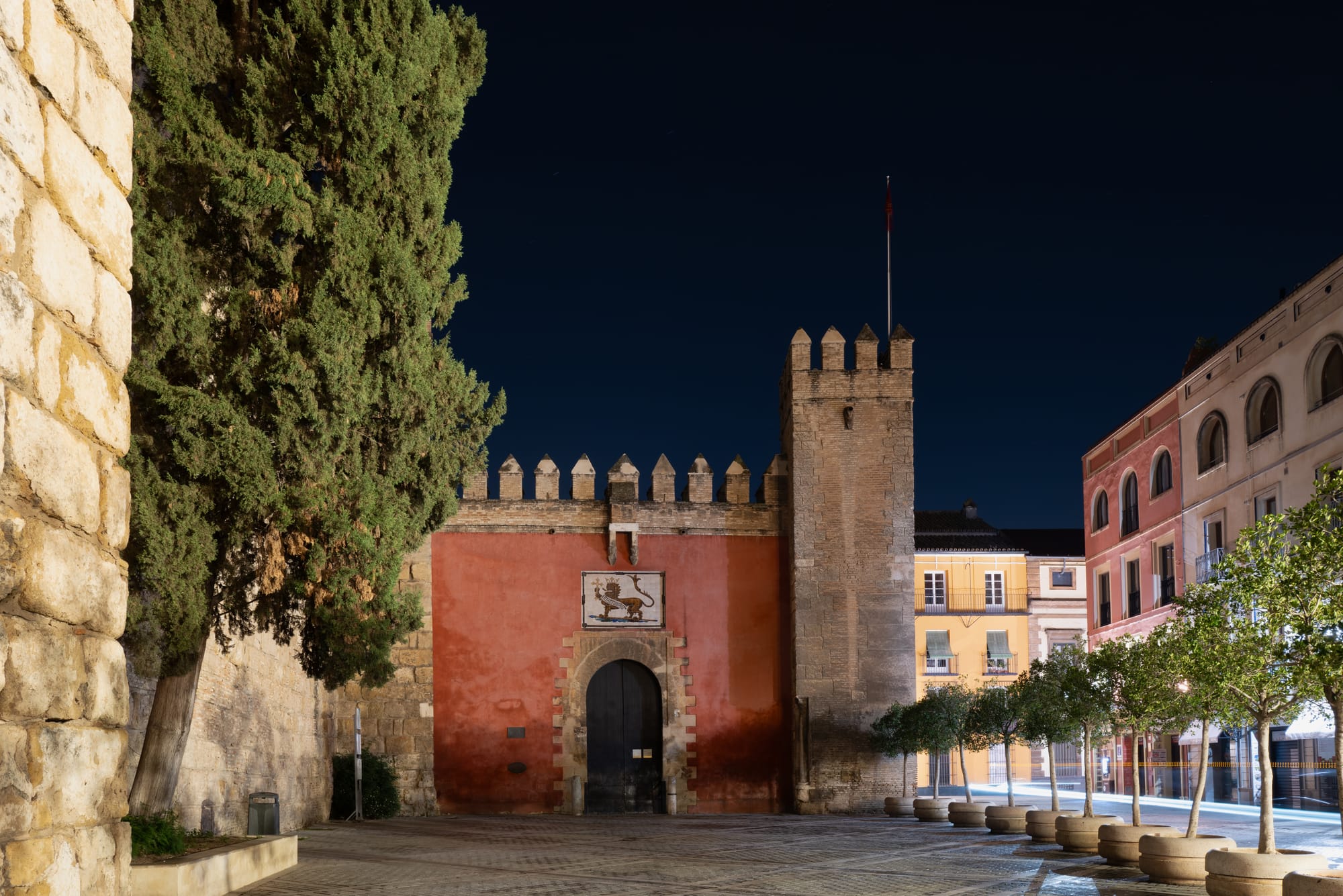
On our second day in Seville, I woke long before sunrise, still struggling a bit with the time change, so I went out and shot some long exposures, pre-dawn. The streets were completely deserted. Spain doesn't really wake up until well after 9:00am. Not a single store or cafe was open to get coffee, until about 8:00am when the employees at Starbucks grudgingly unbolted their doors to a very tired looking middle-age American. It's against every fiber of my being to go to a Starbucks (or any other American chain that's made it's way overseas, really) while traveling abroad, but exceptions will be made when it's literally the only option for coffee other than waiting longer.
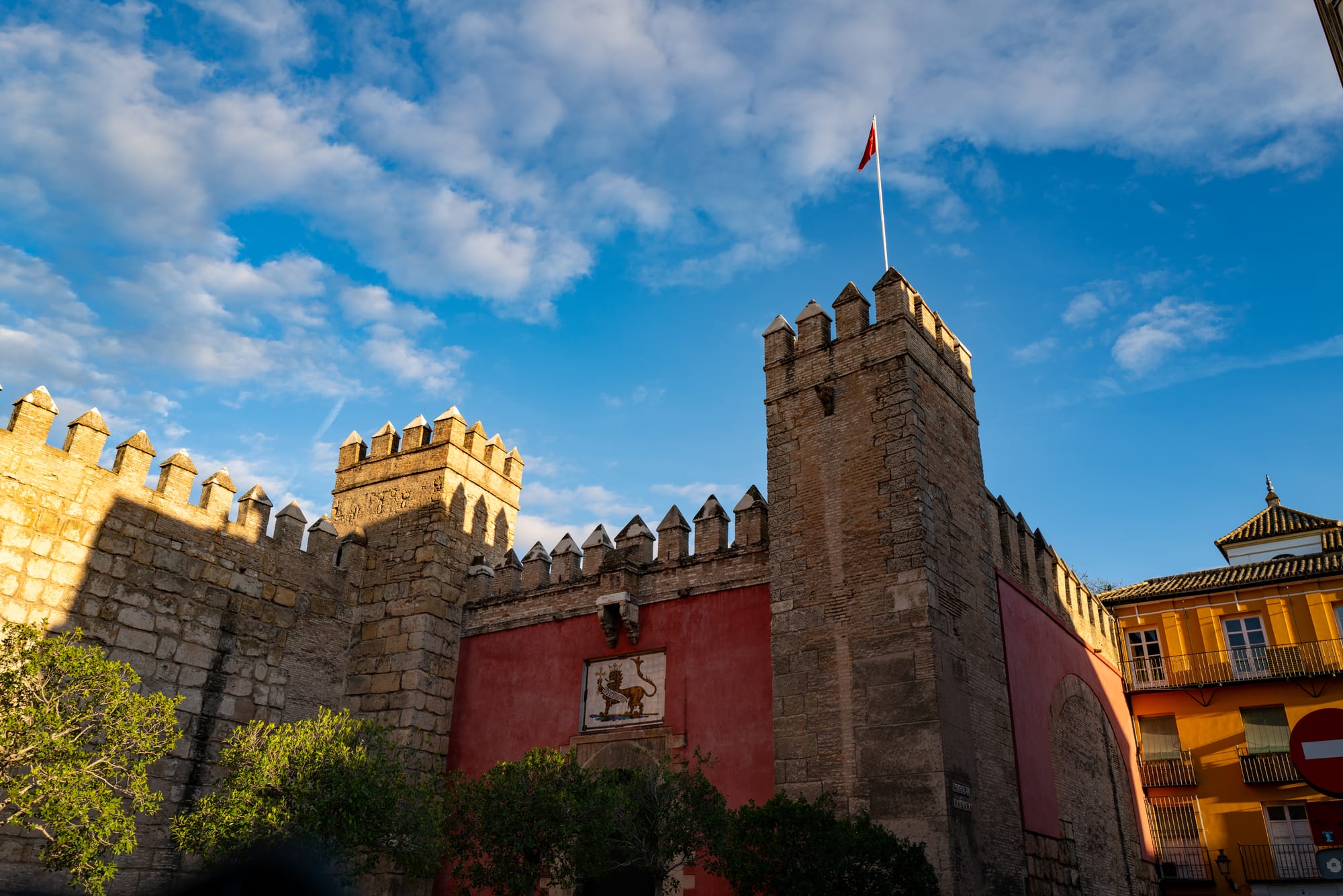
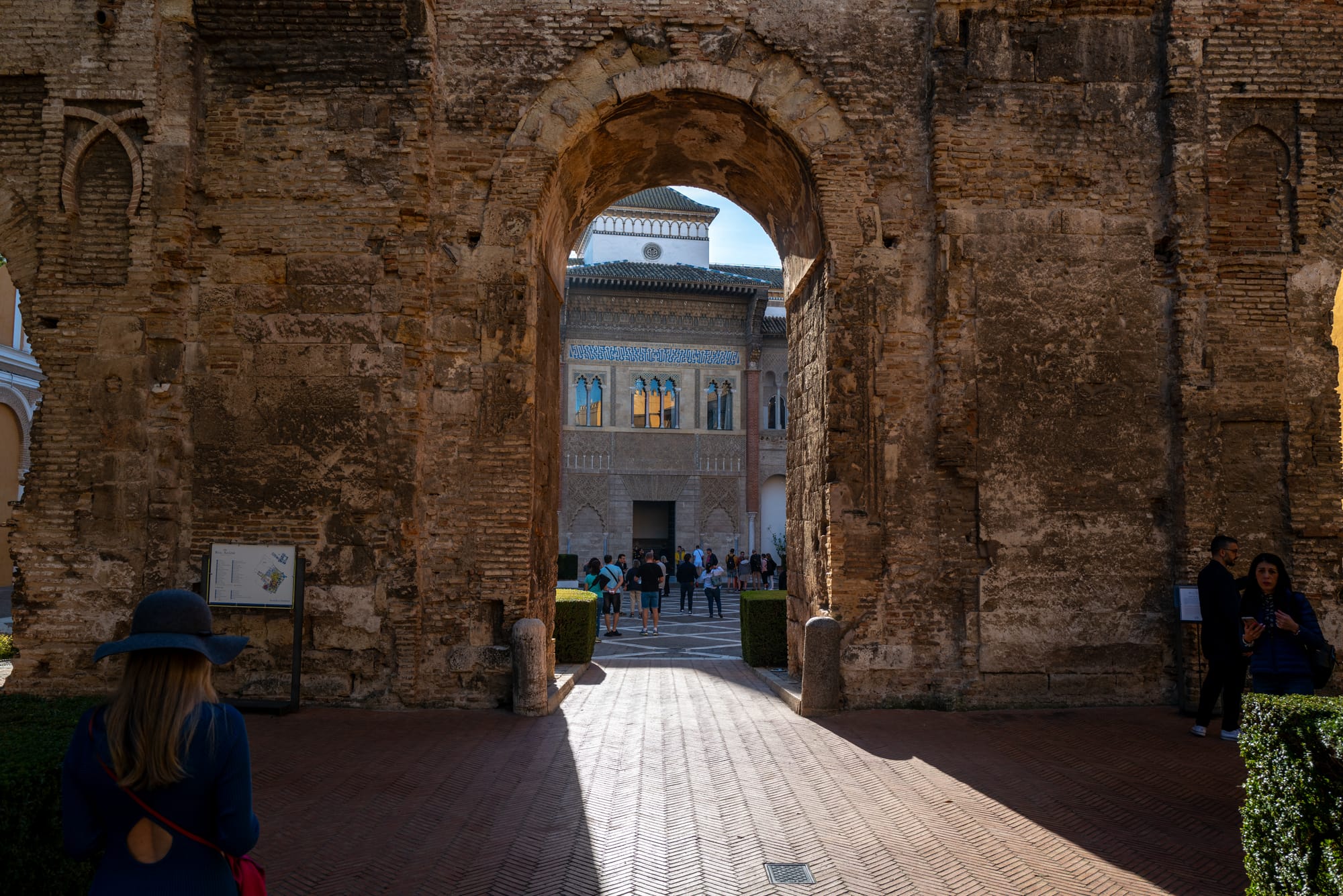
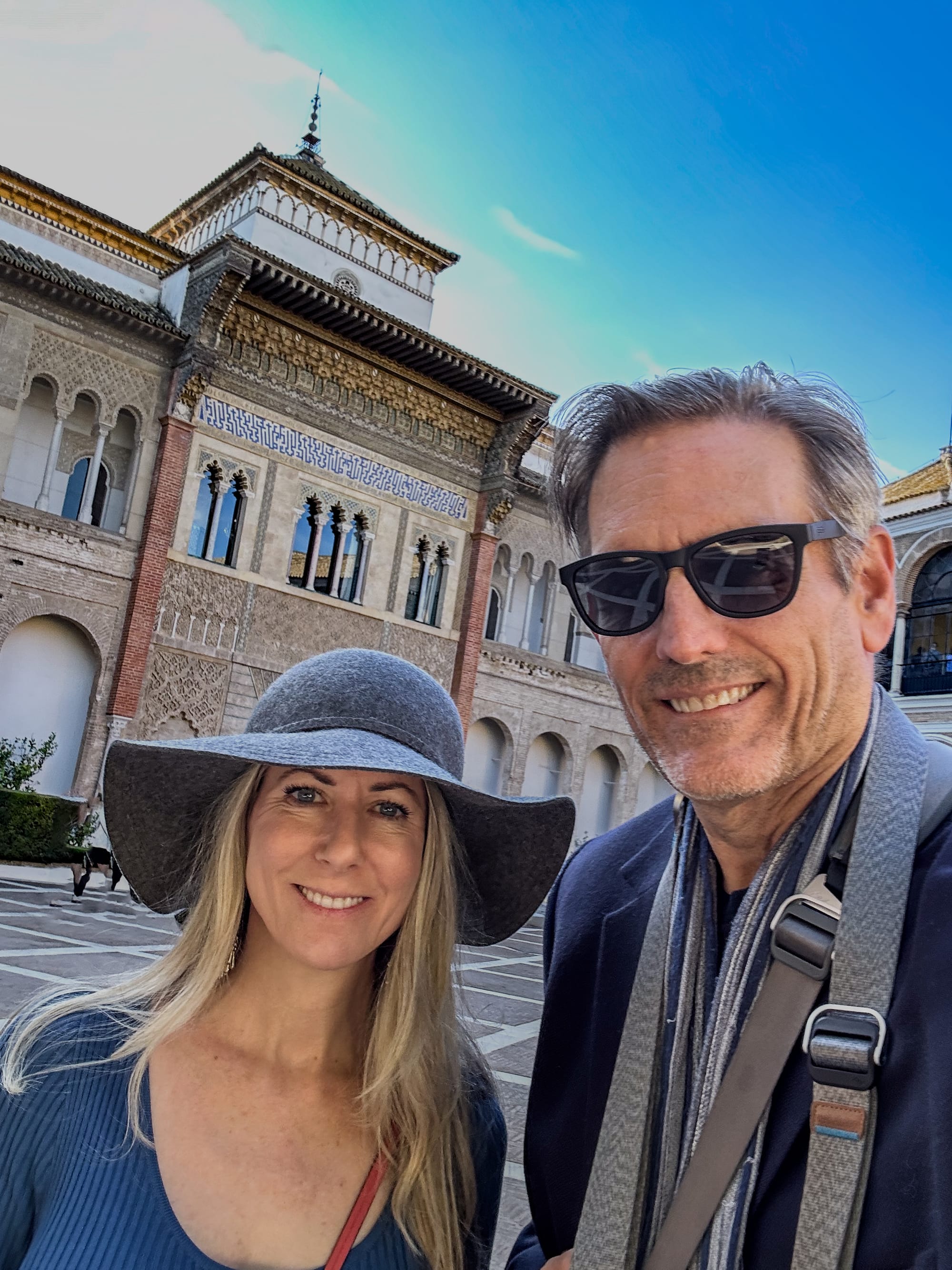
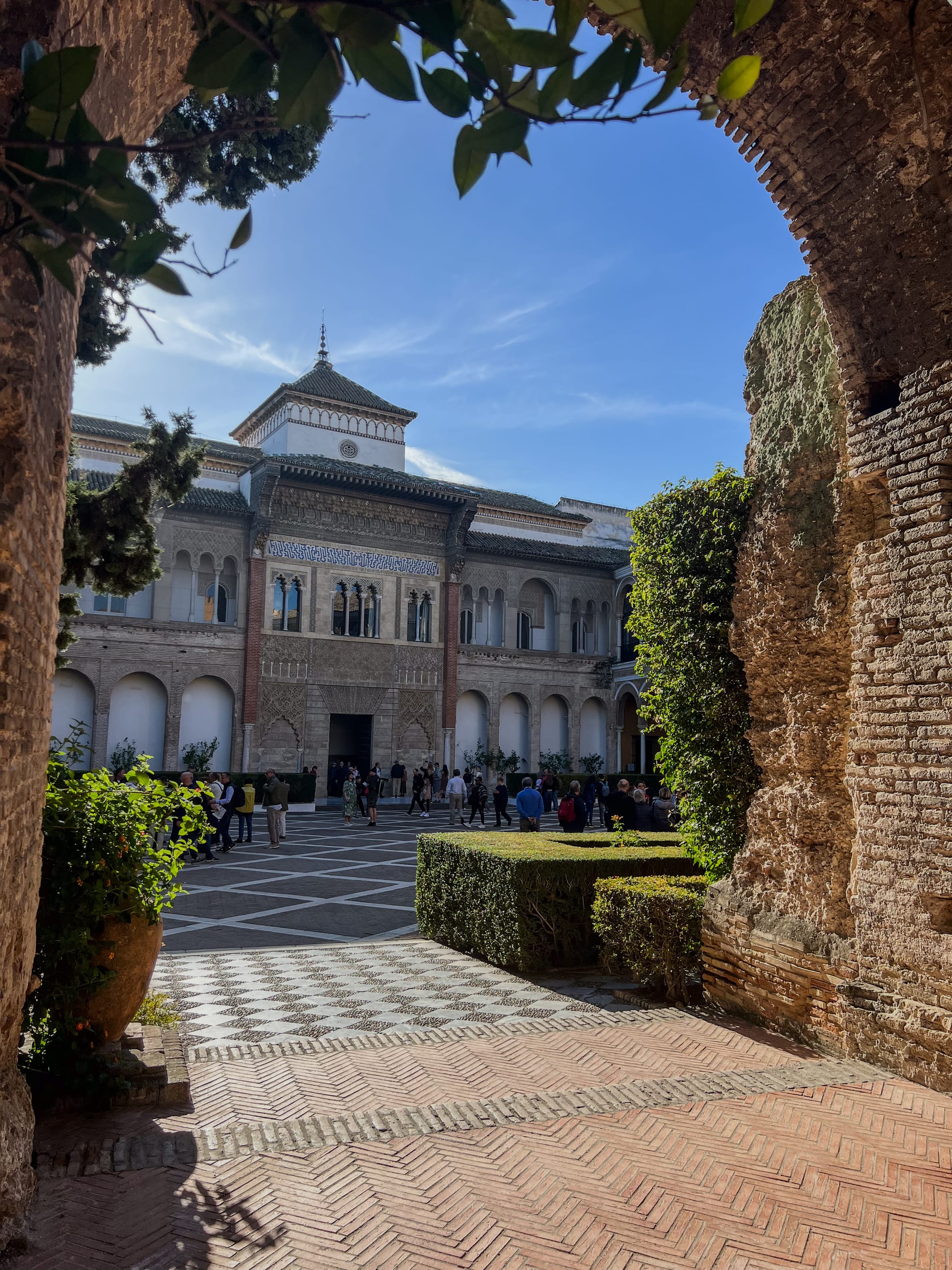
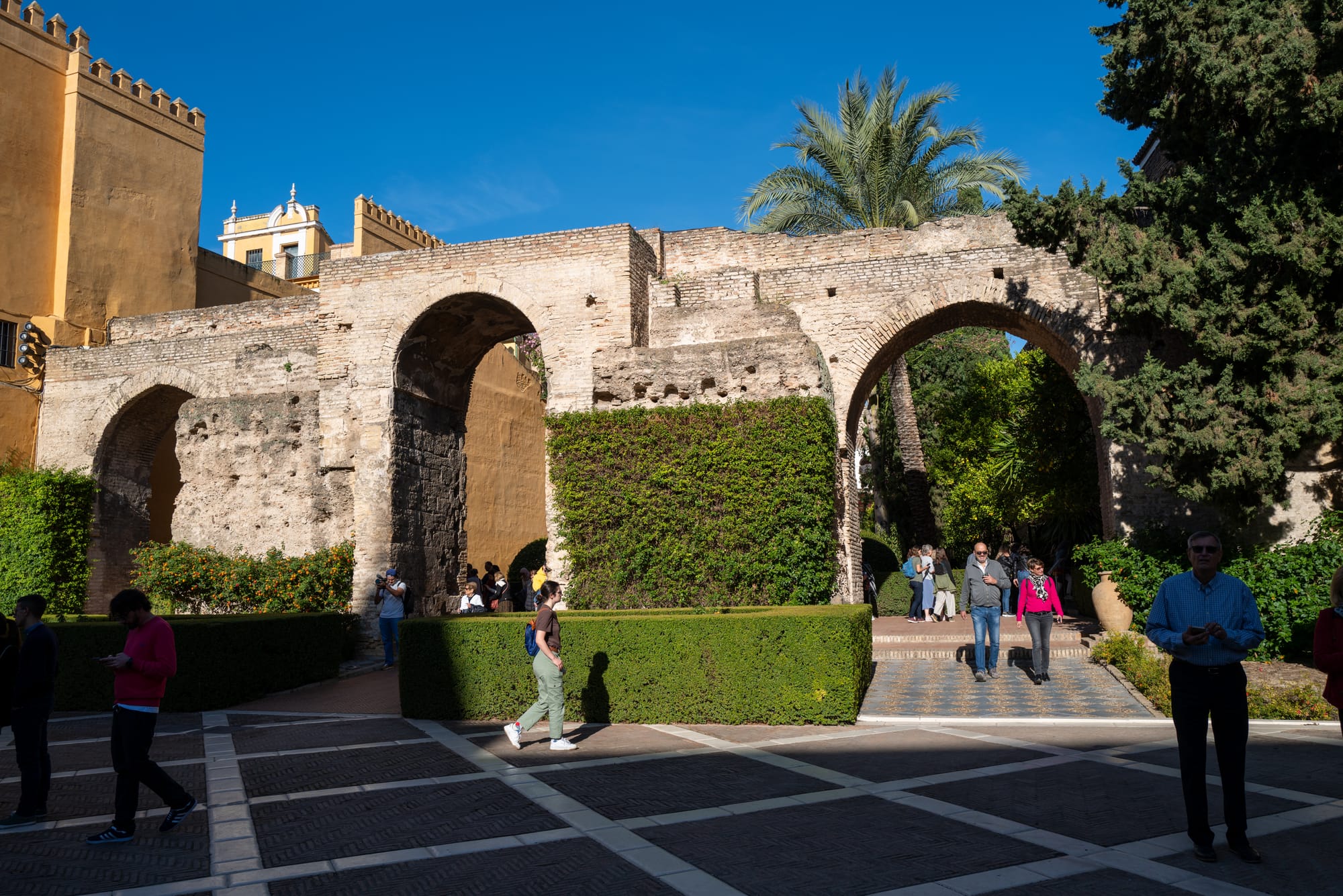
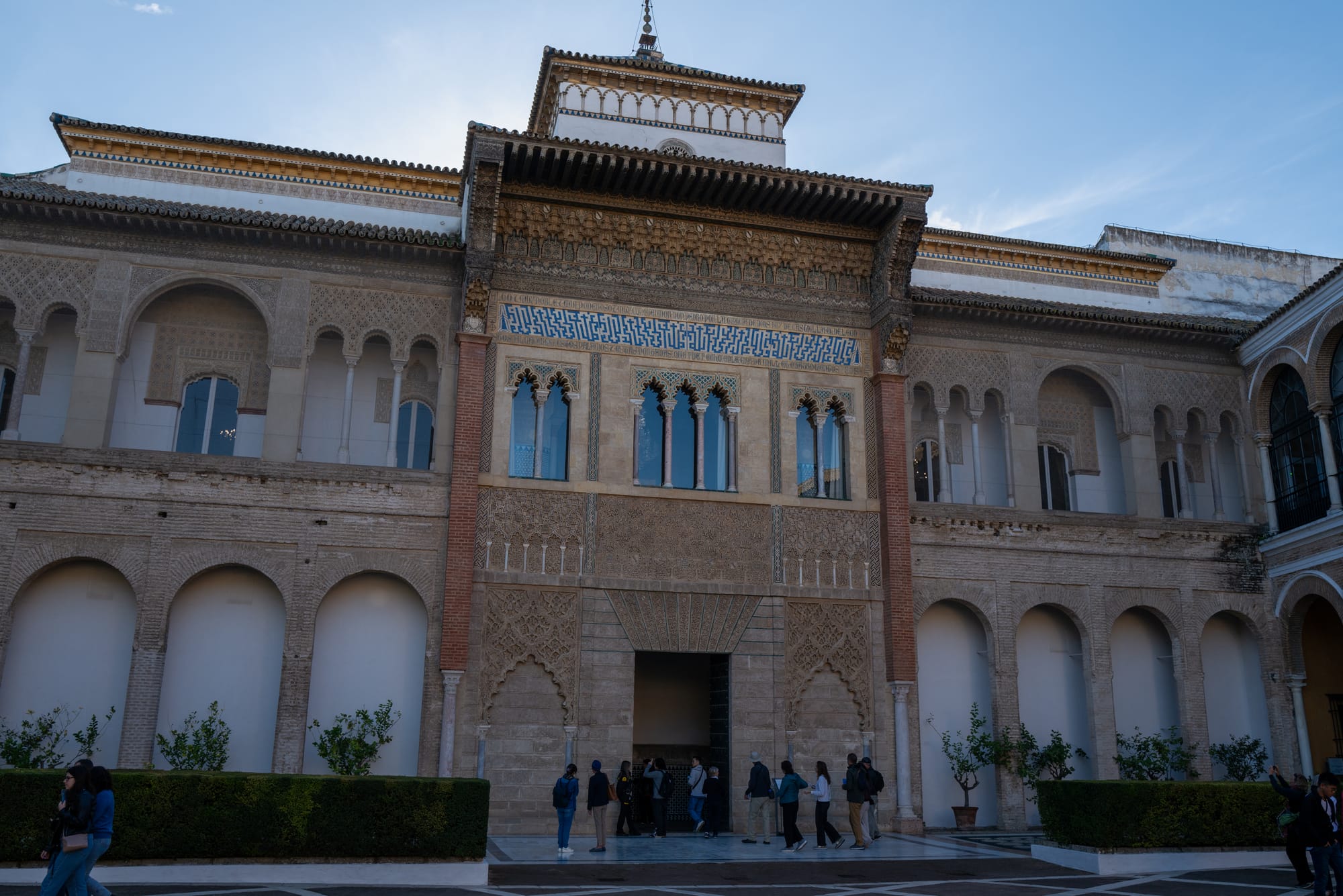
After having administered the appropriate levels of caffeine for our day, we headed to Puerta del León for our timed entry ticket to see the Royal Alcázar of Seville (Side note: Advanced tickets to many of the historic sites in Spain are an absolute MUST. Some of them, like the Alhambra in Granada - coming soon in a subsequent post - sell out MONTHS in advance, particularly during high season).
The Alcázar originated in the 10th century as the Islamic-era citadel of the city and developed into a larger palace and garden complex over several centuries, under Islamic, Castilian, and finally, Spanish rule. It is the premiere example of a Mudéjar-style palace in the Iberian Peninsula and it also includes Gothic and Renaissance influences from its metamorphosis over the years.
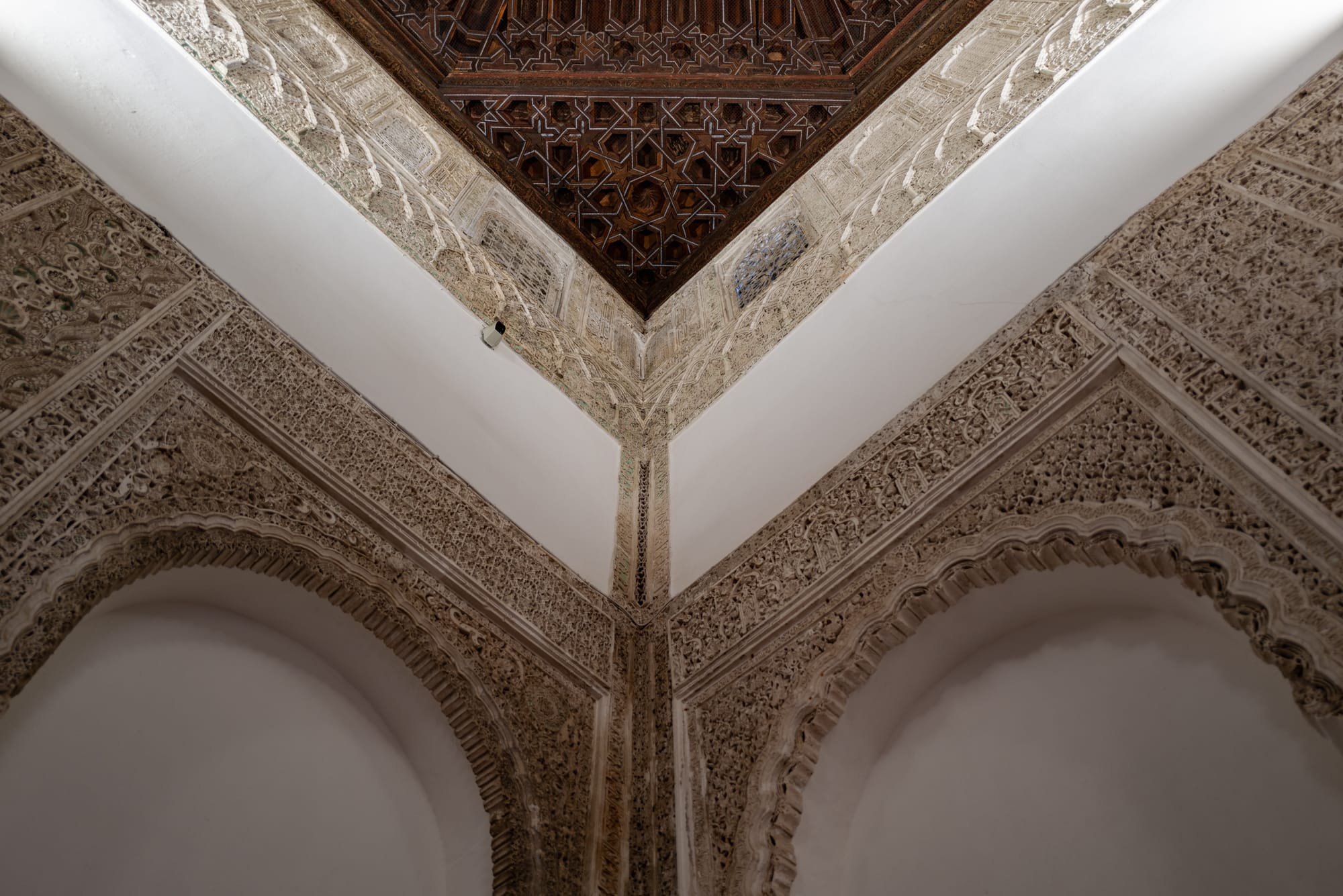
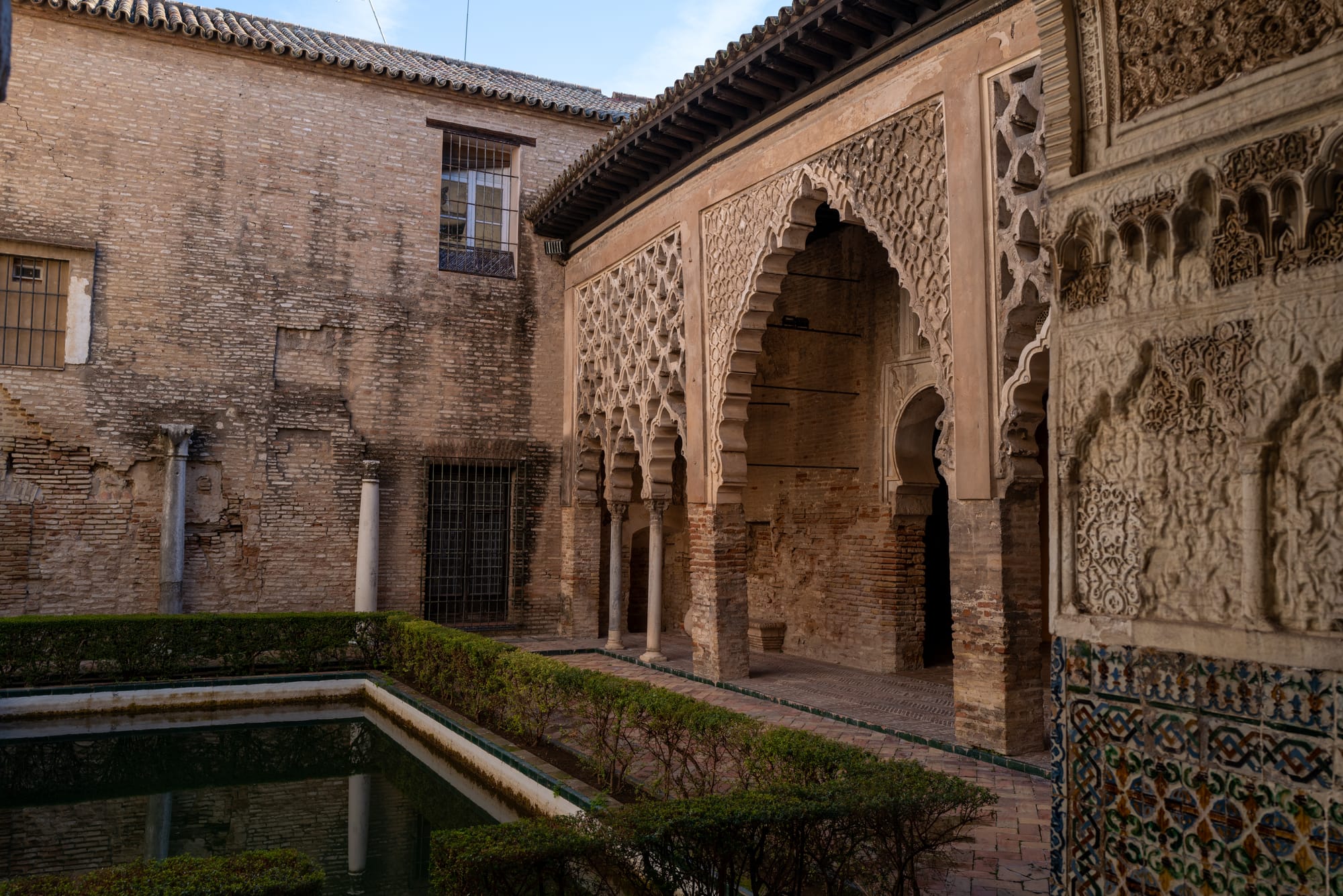
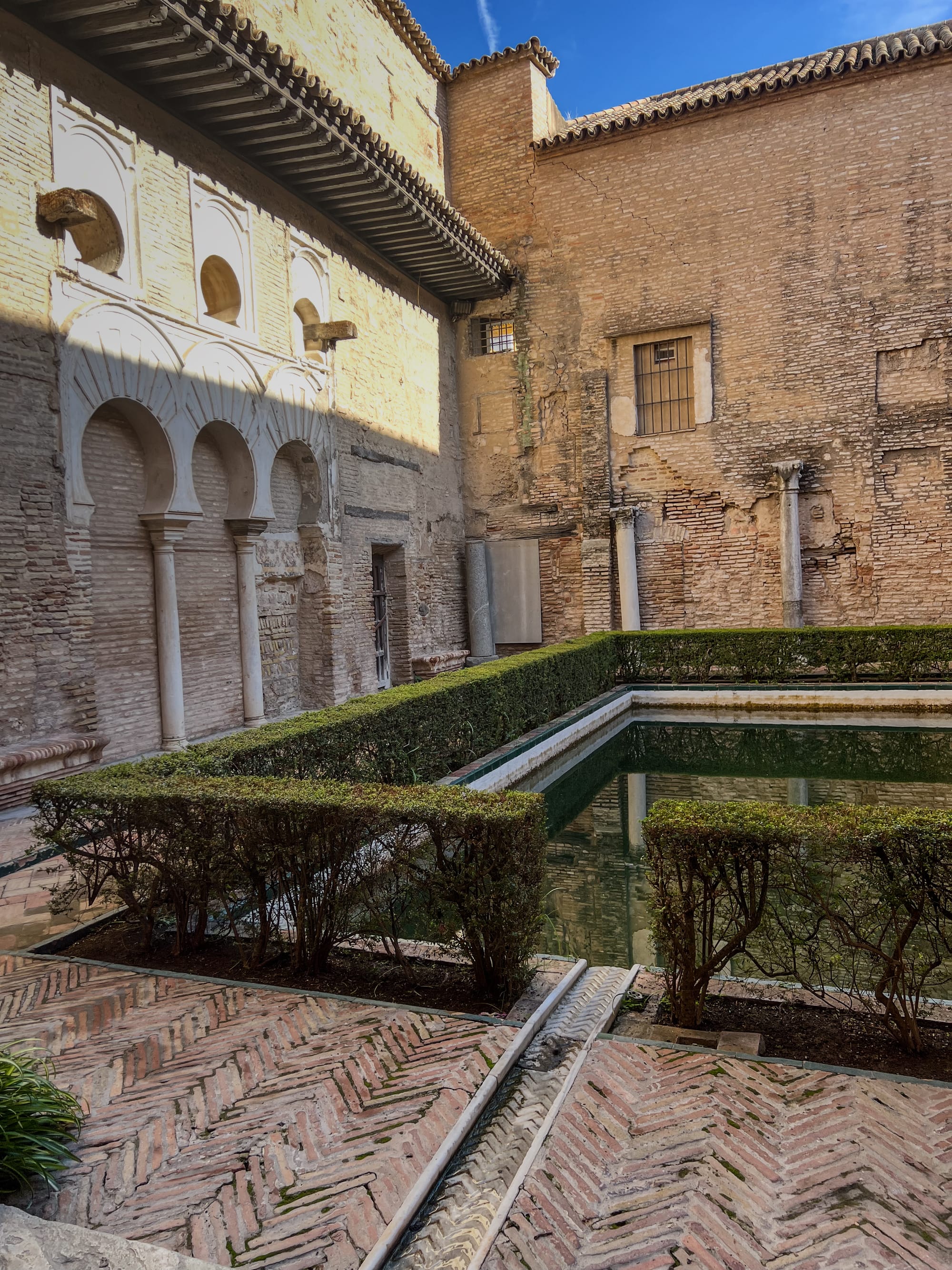
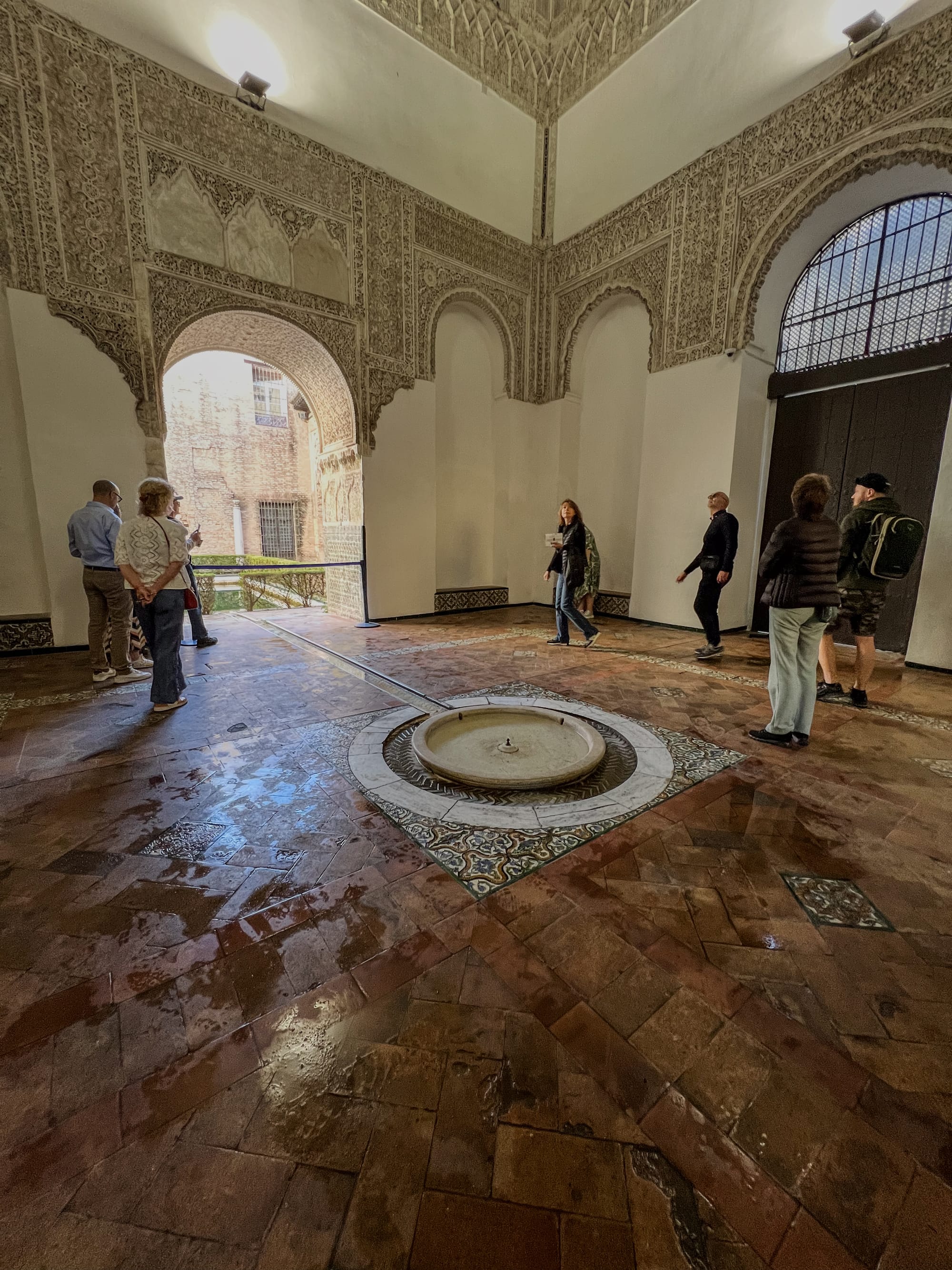
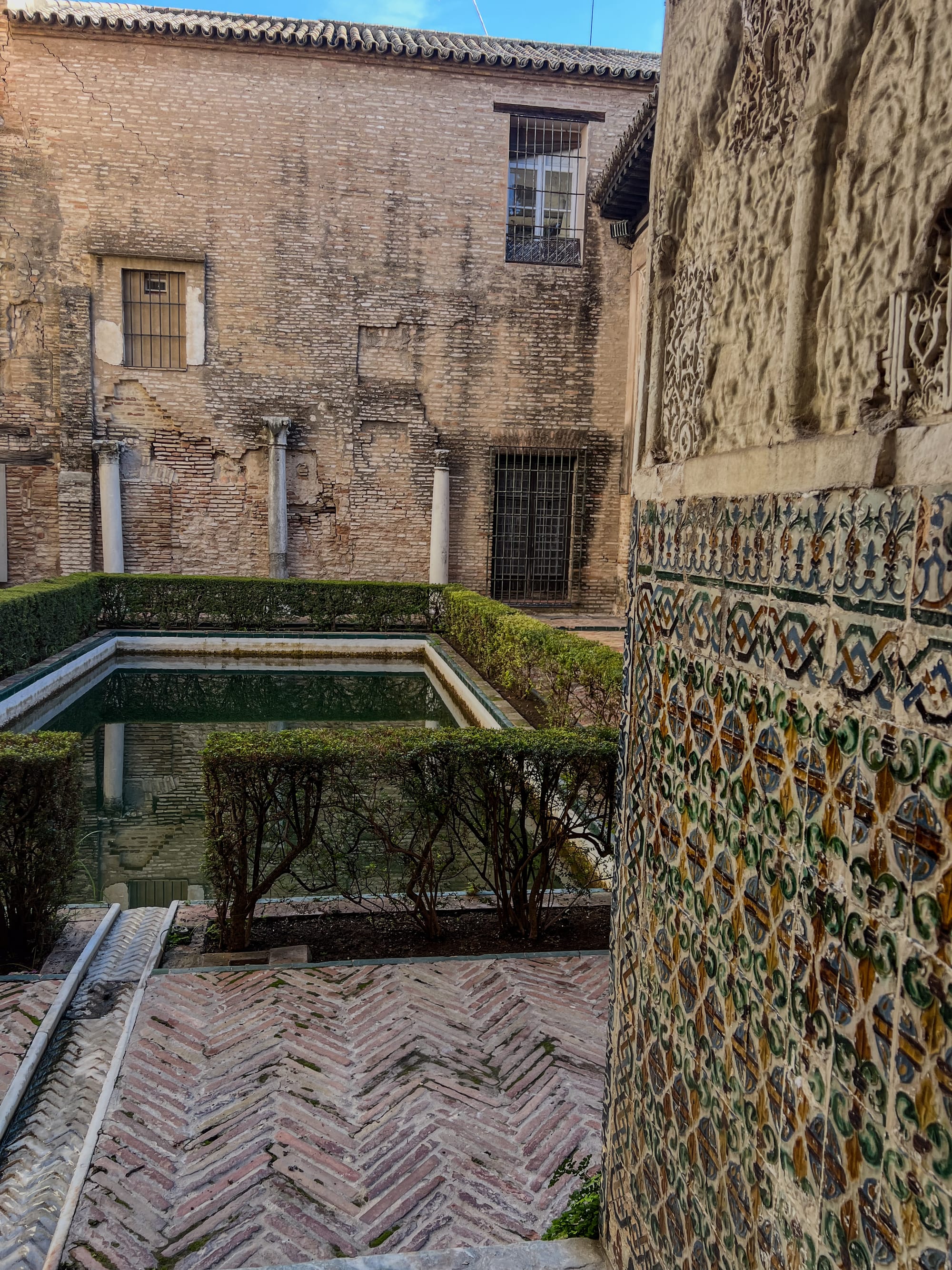
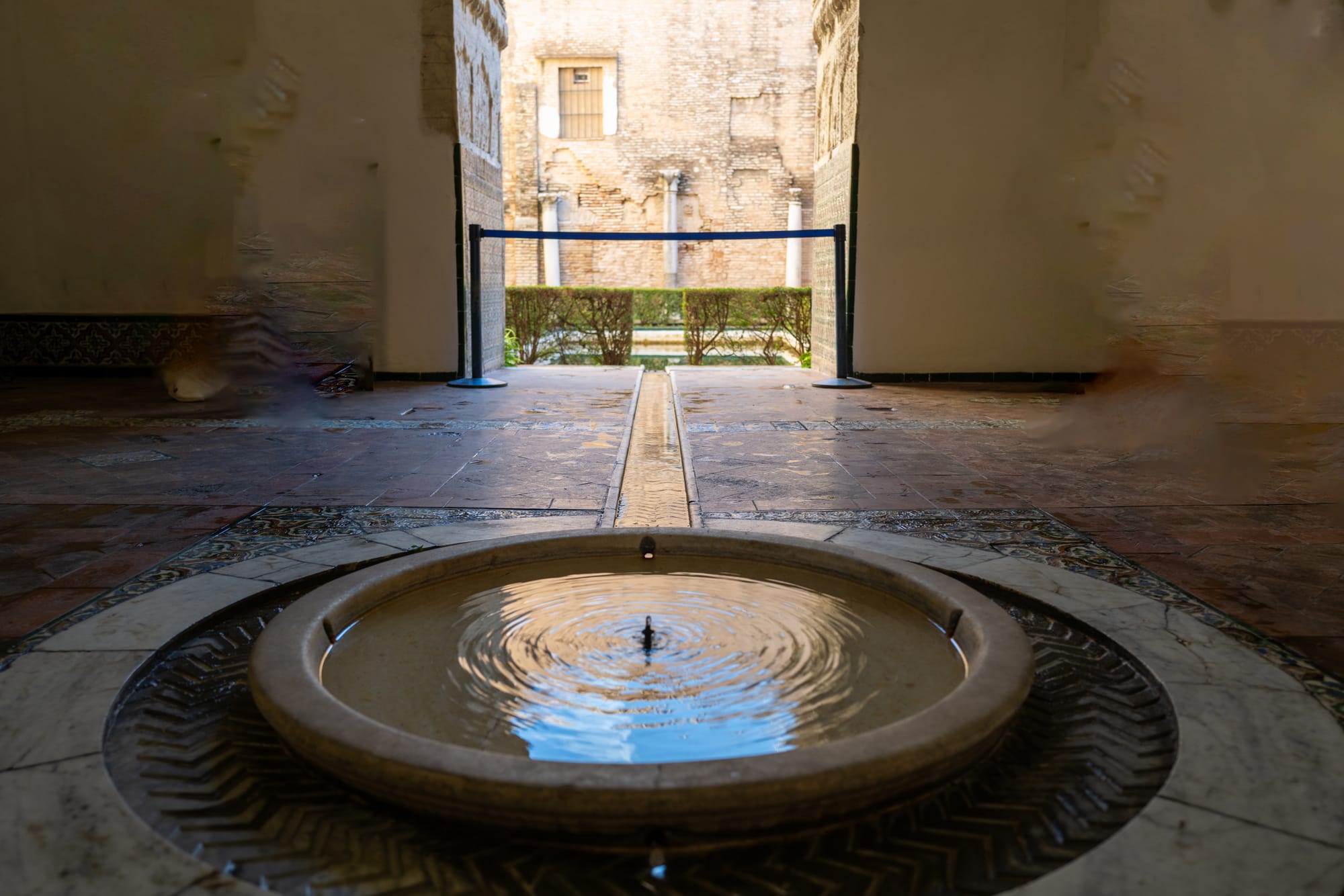
The Sala de Justicia (courtroom of Justice) and Patio del Yeso
Probably the most impressive interior space of the Royal Alcázar of Seville was the Salón de los Embajadores, or Hall of the Ambassadors, which dates from the 14th century when King Pedro I of Castille made it the centerpiece of his new royal palace. The hall has a square shape and is covered by a dome, analogical to the qubba-type structures of Islamic architecture.
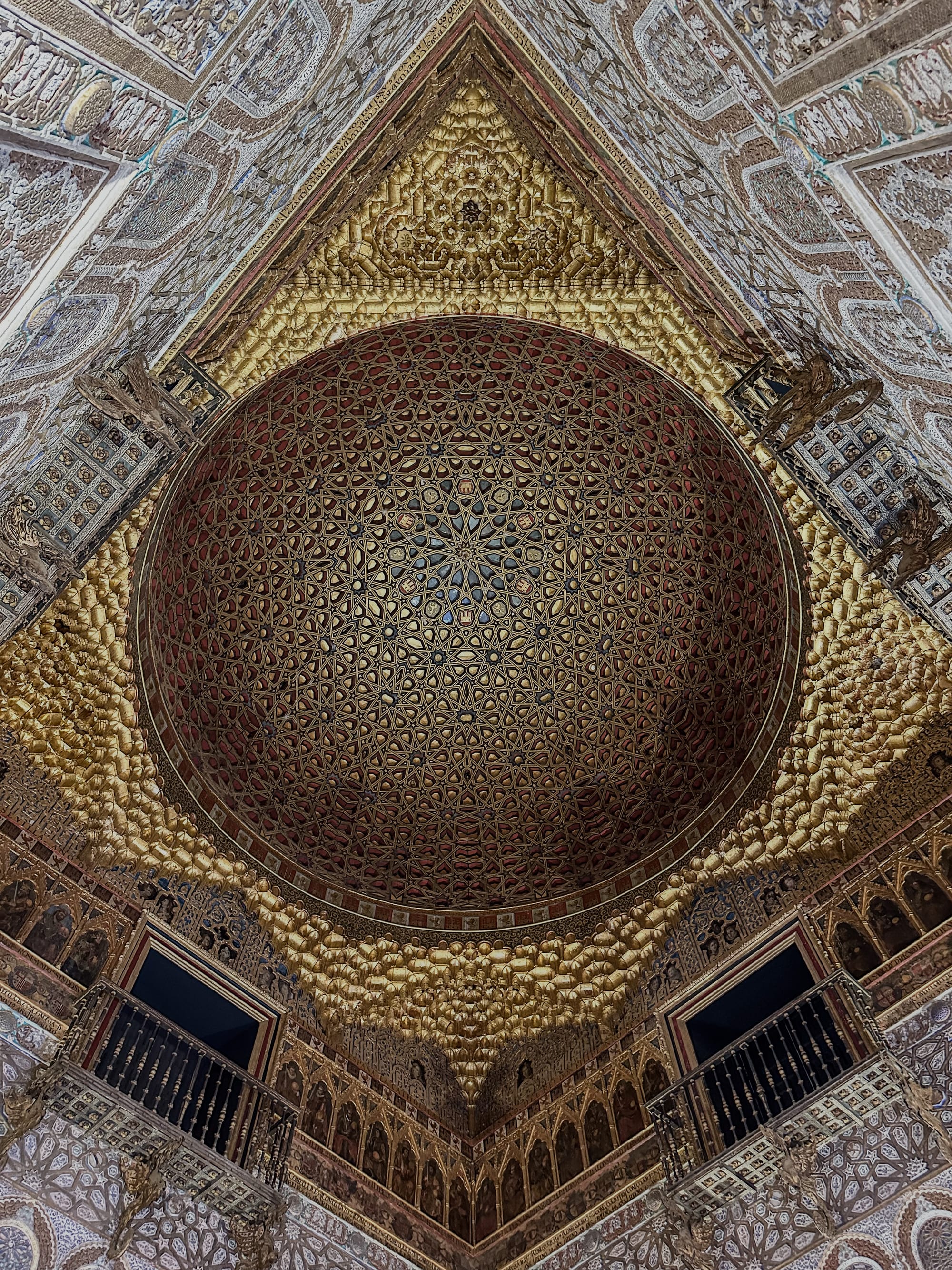
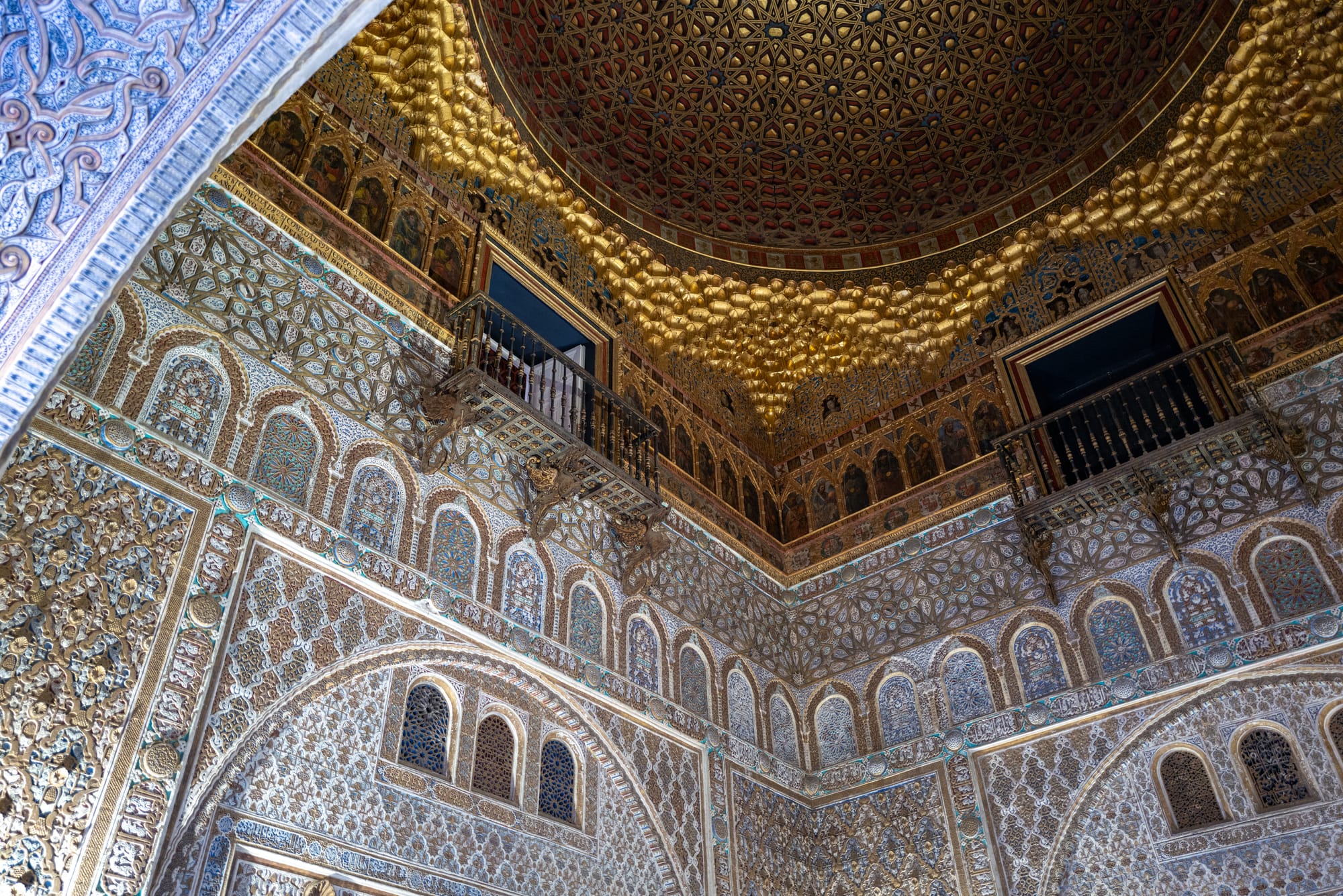
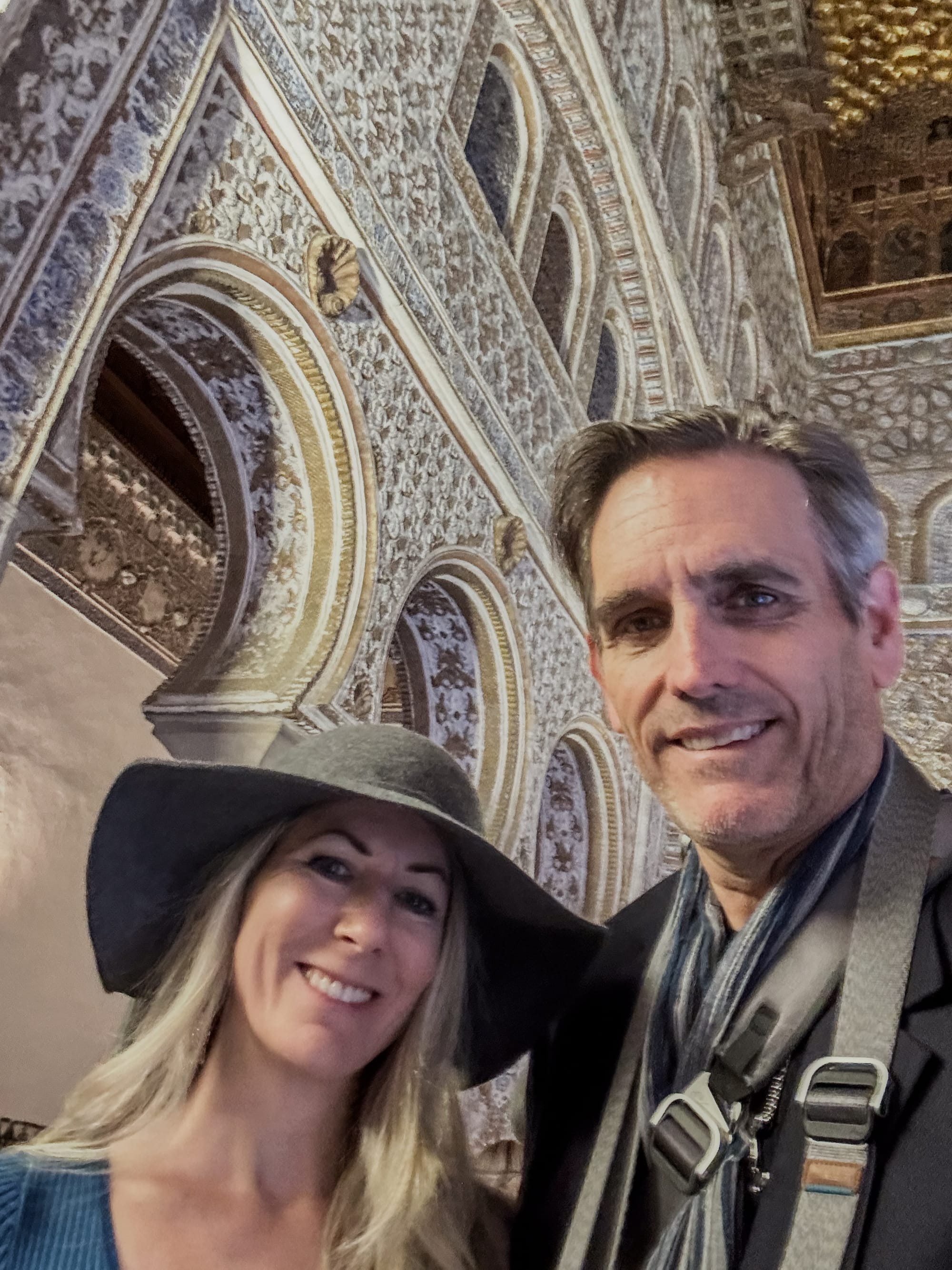
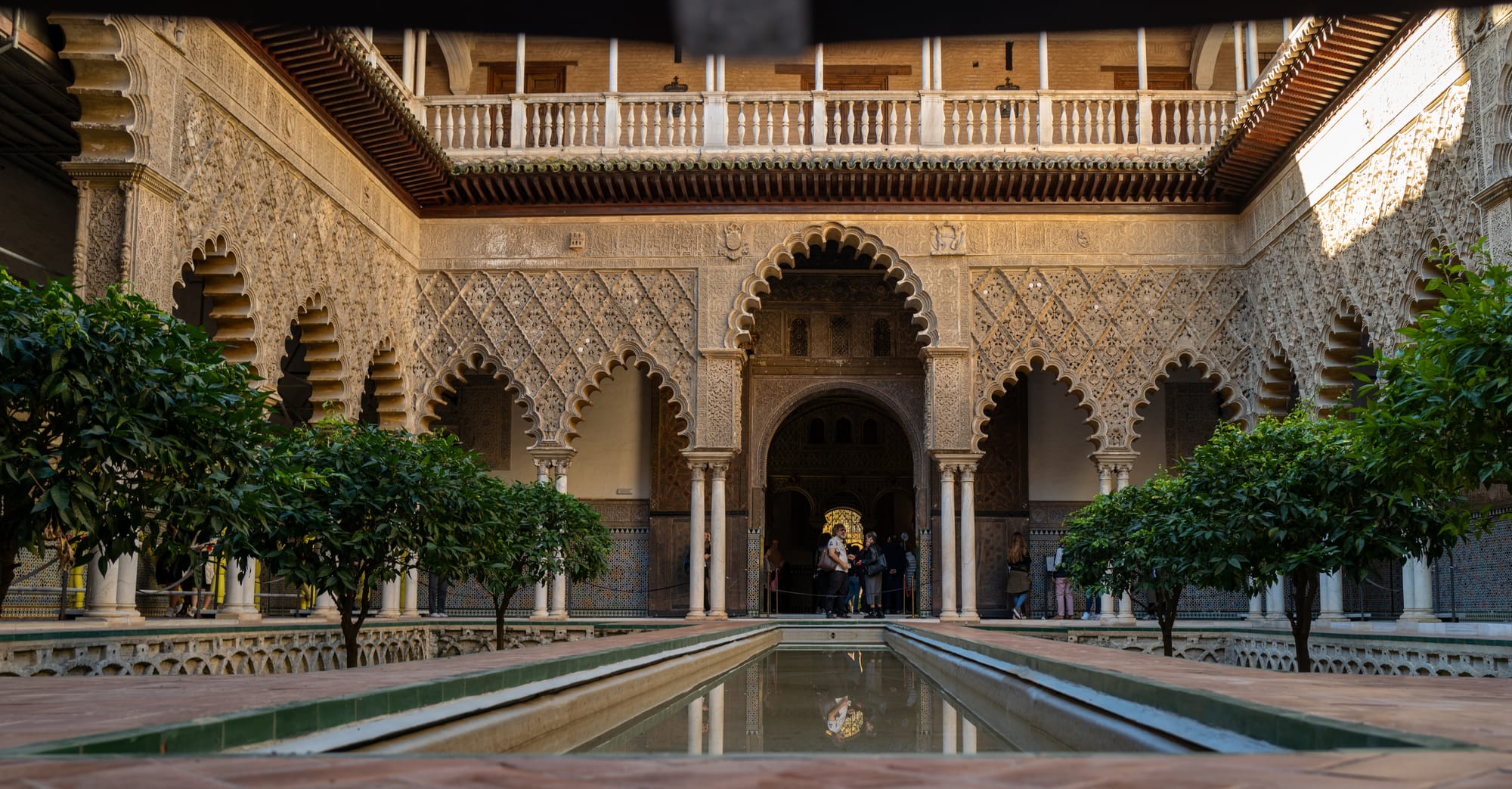
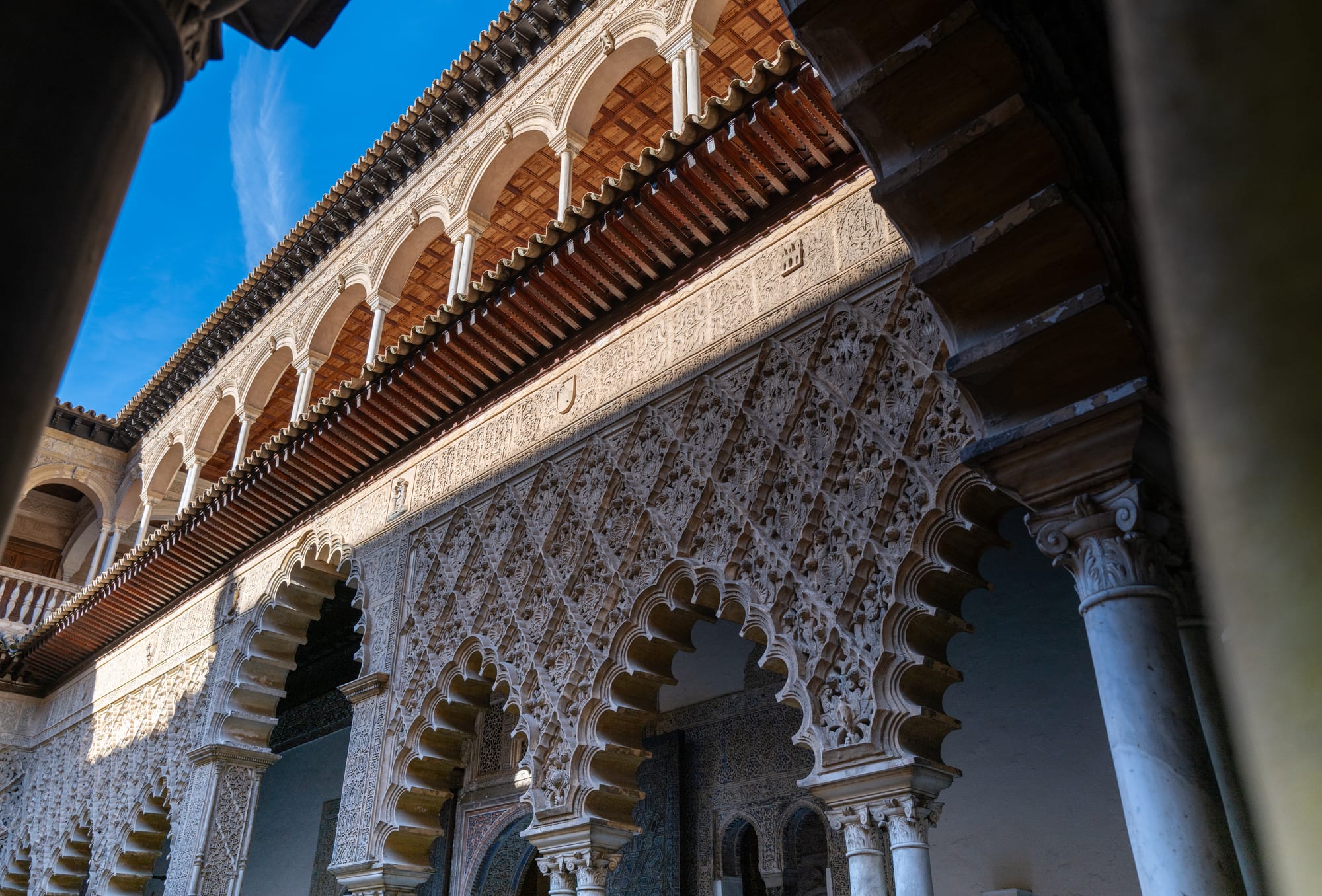
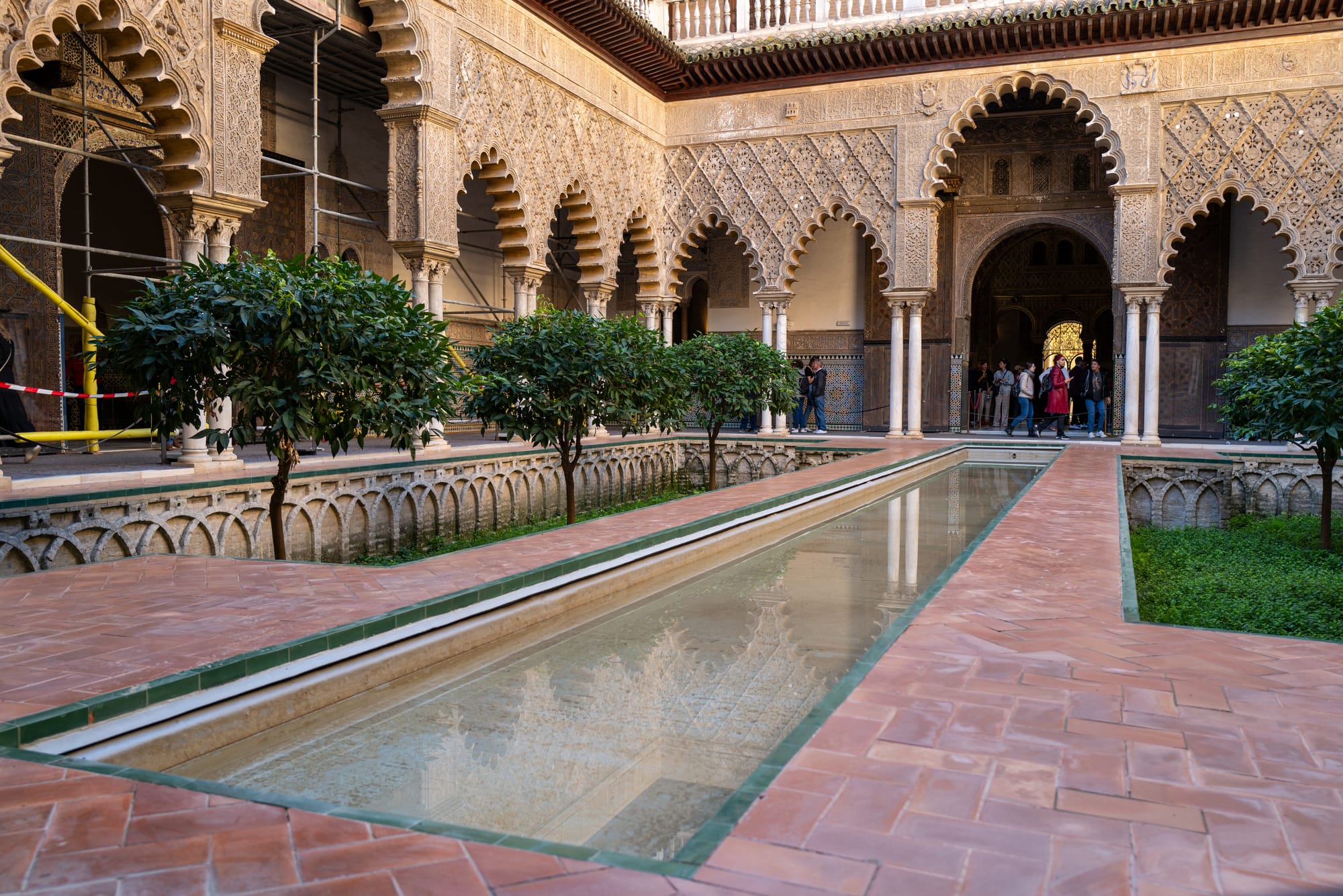
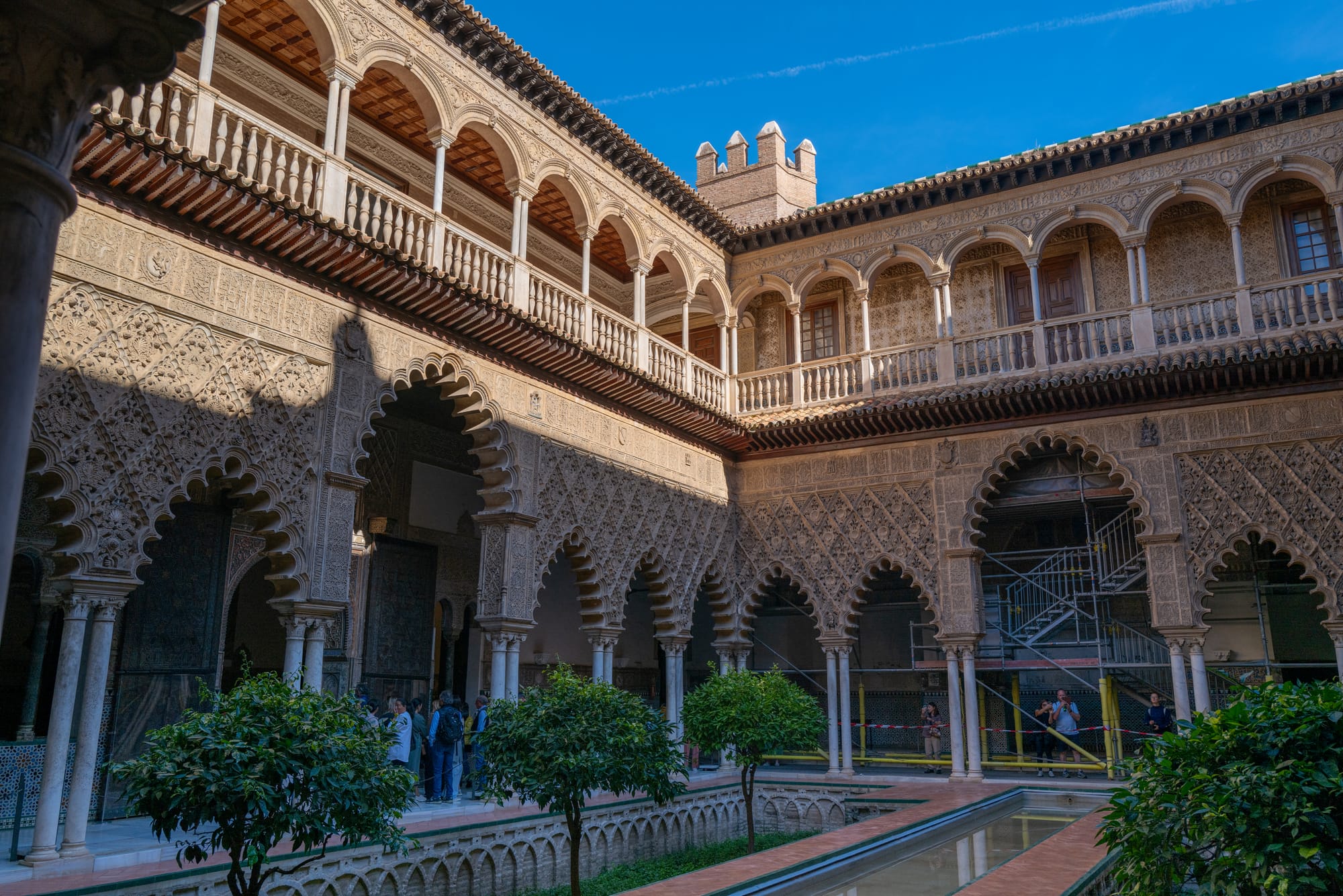
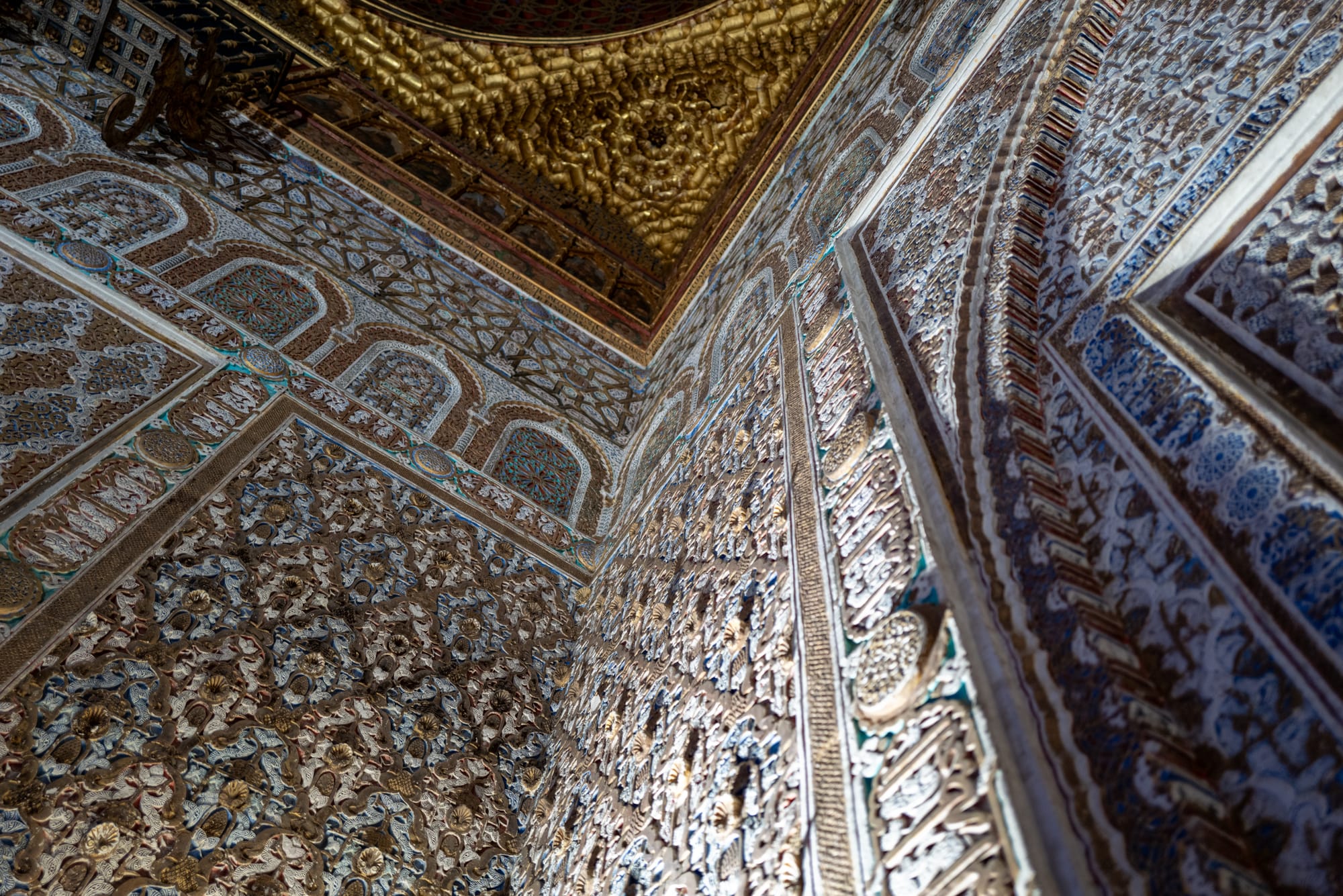
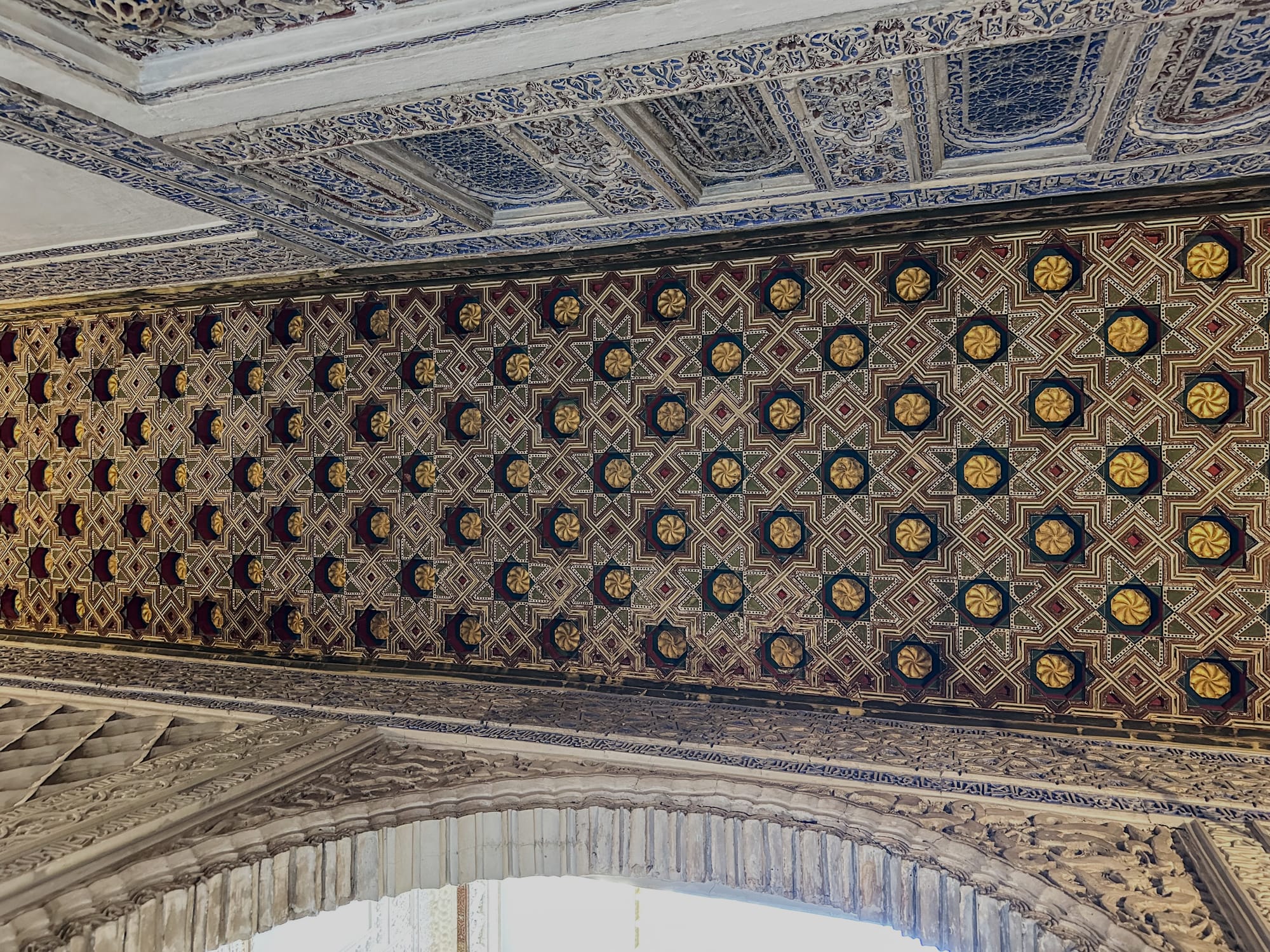
Salón de los Embajadores and Patio de las Doncellas
Many of the scenes representing the Dornish Kingdom in Game of Thrones were shot right here in the Royal Alcázar of Seville, including this sample of scenes shot in the Salón de los Embajadores and also with the Patio de las Doncellas (Courtyard of the Maidens) as a backdrop.
Scenes shot at The Royal The Alcázar of Seville in Game of Thrones
As impressive as the interior spaces and patios of the Alcázar were, eventually you spill out into the gardens, of which there are several, including the Garden of the Poets, the Pavilion of Charles V, the Gallery of the Grottoesque, and the Portal of the Privilege.
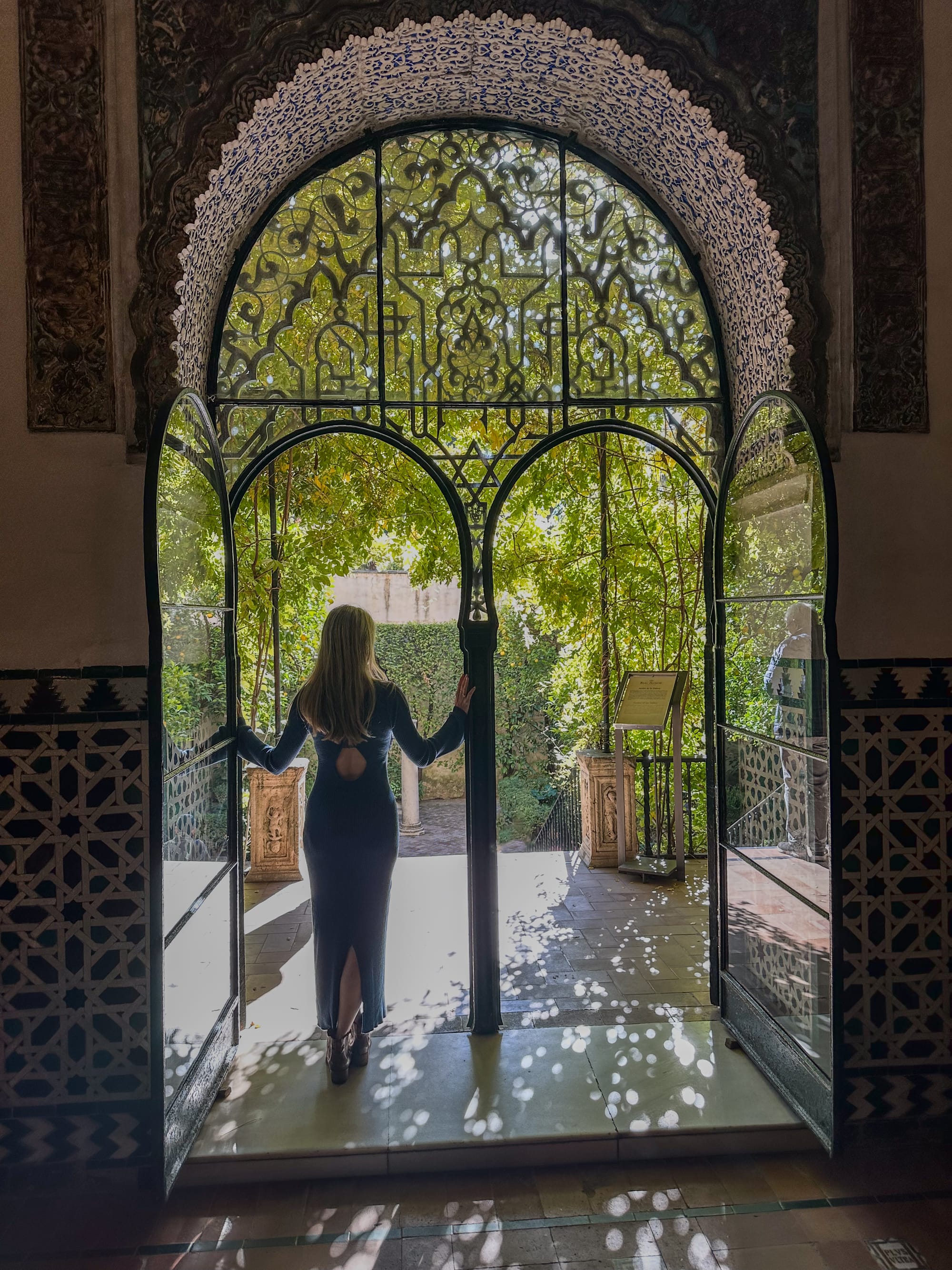
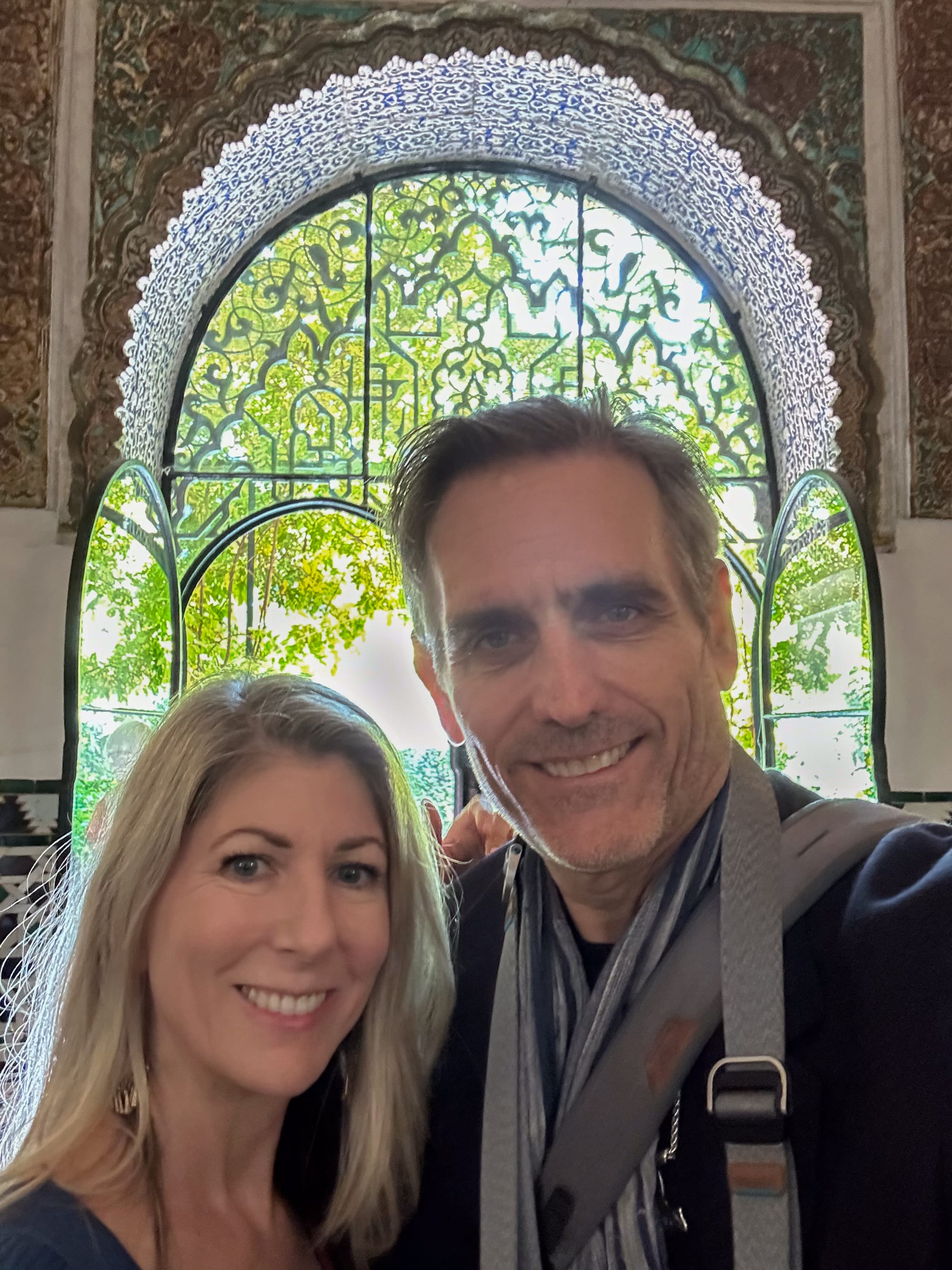
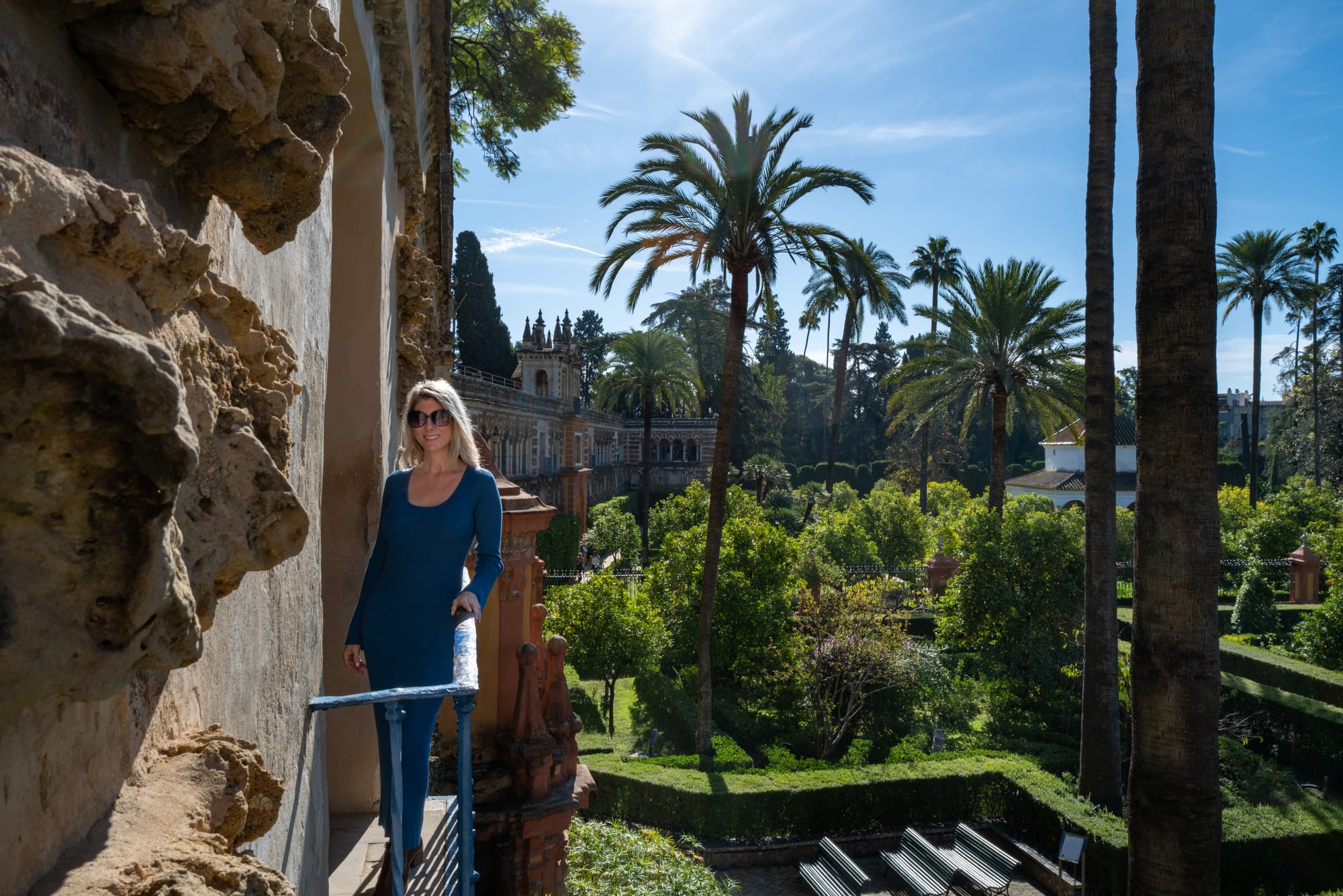
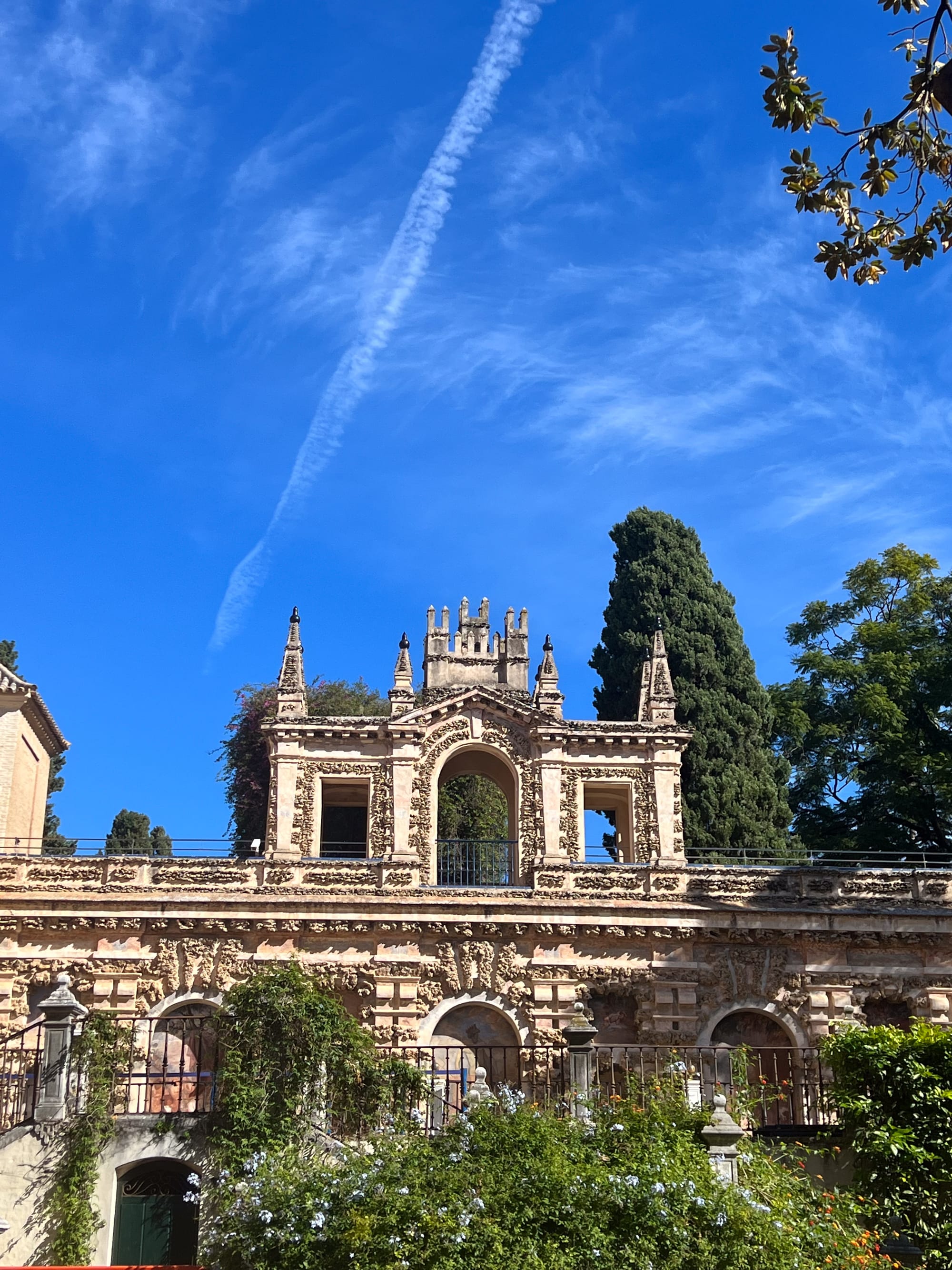
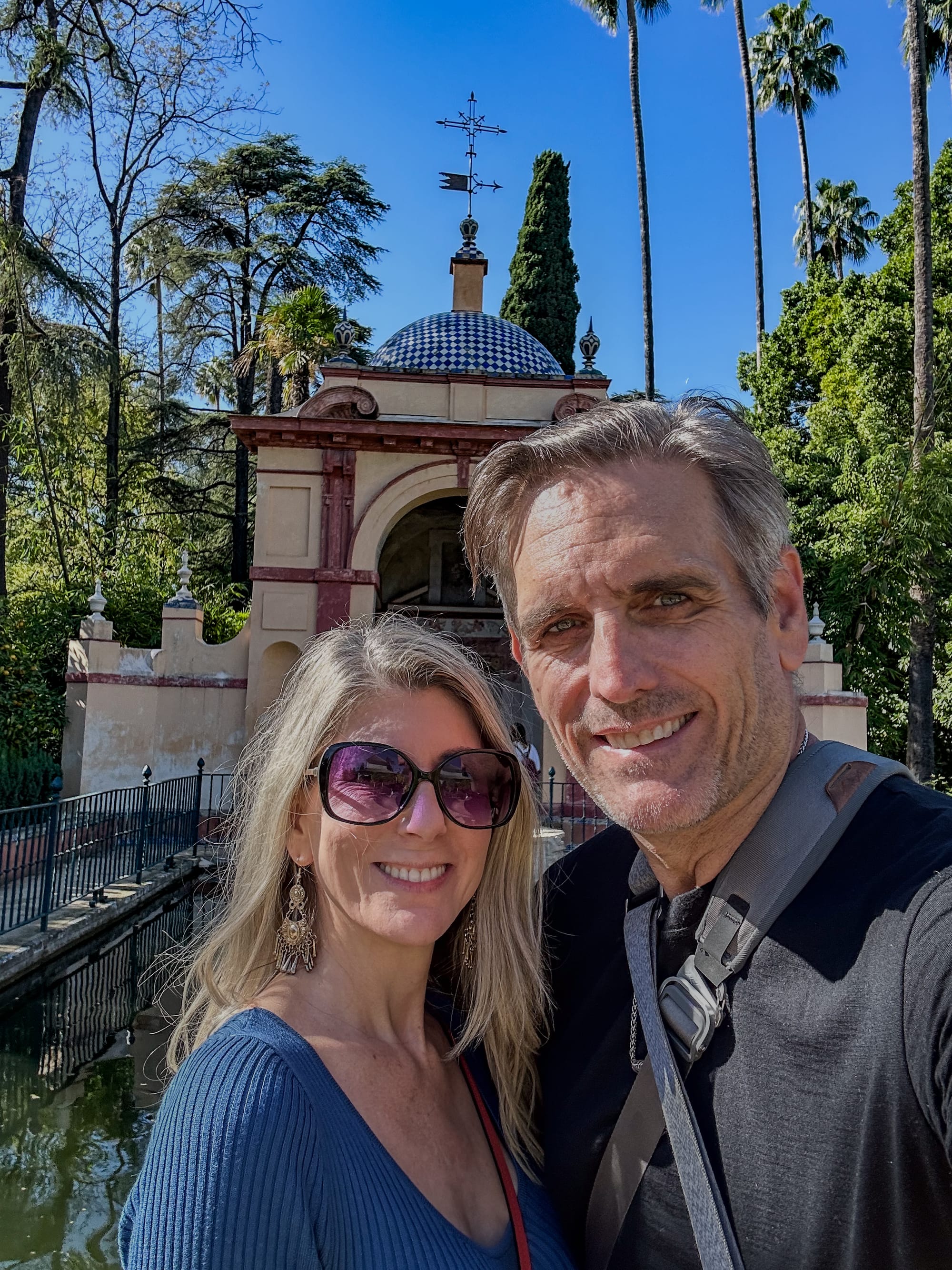
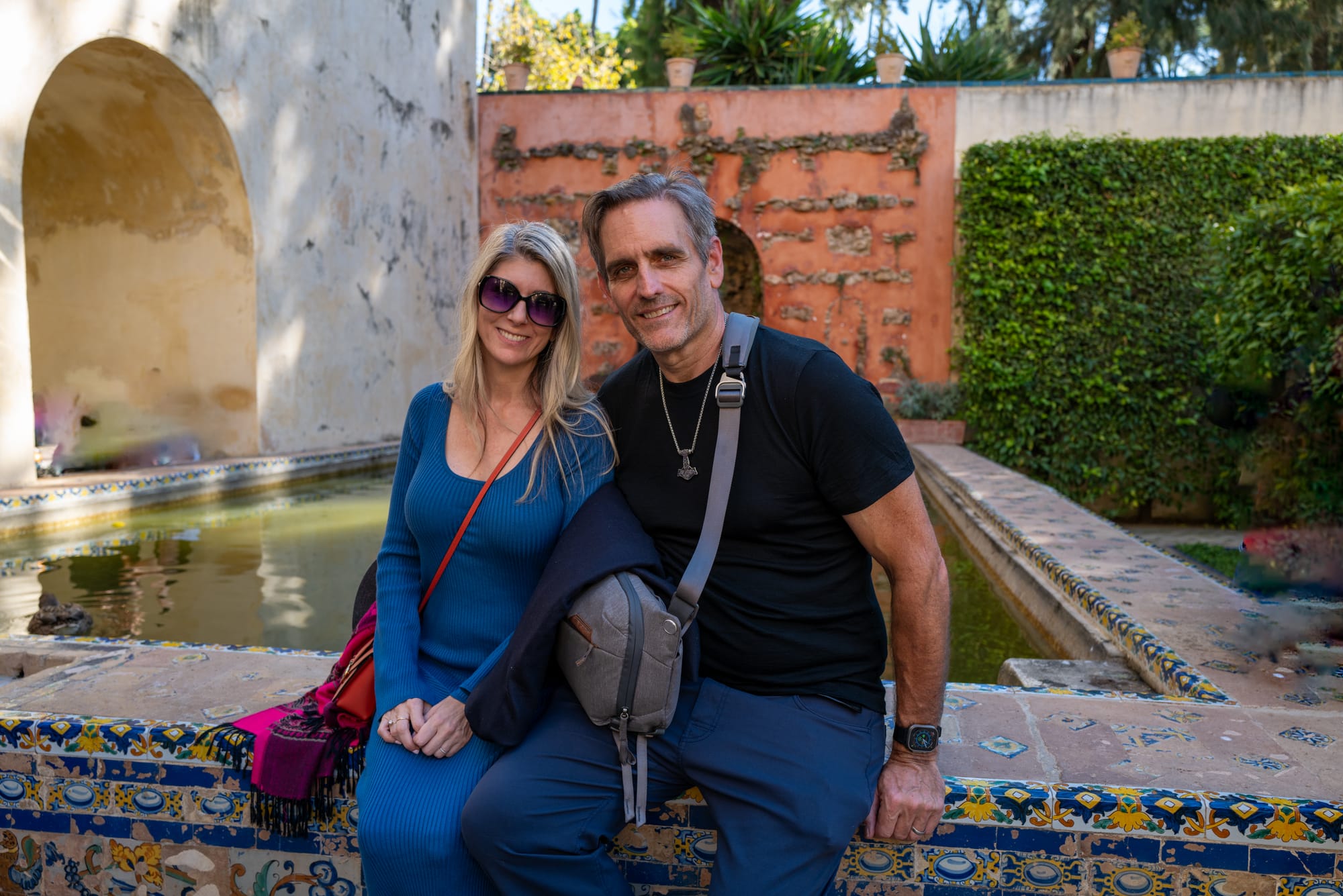
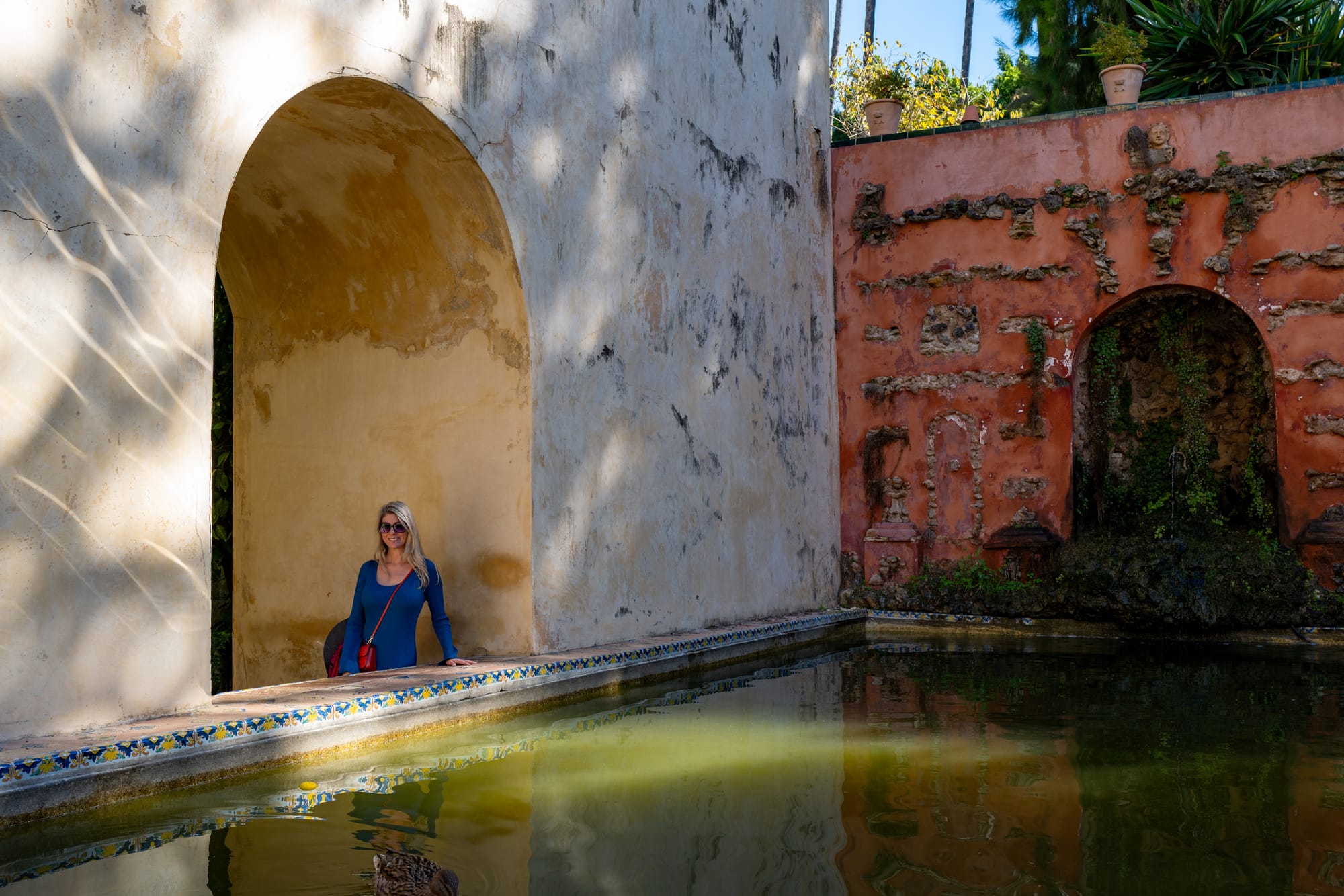
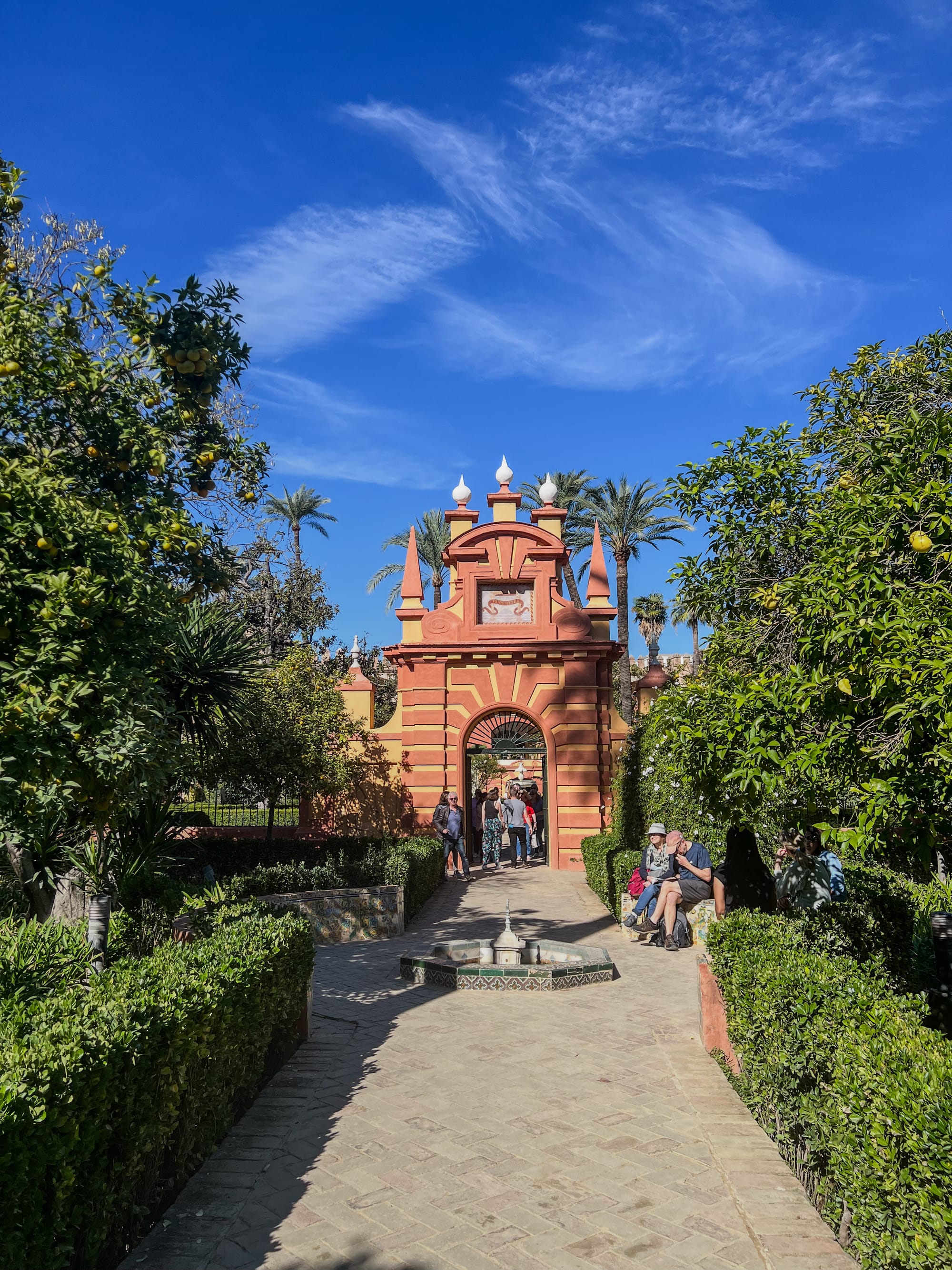
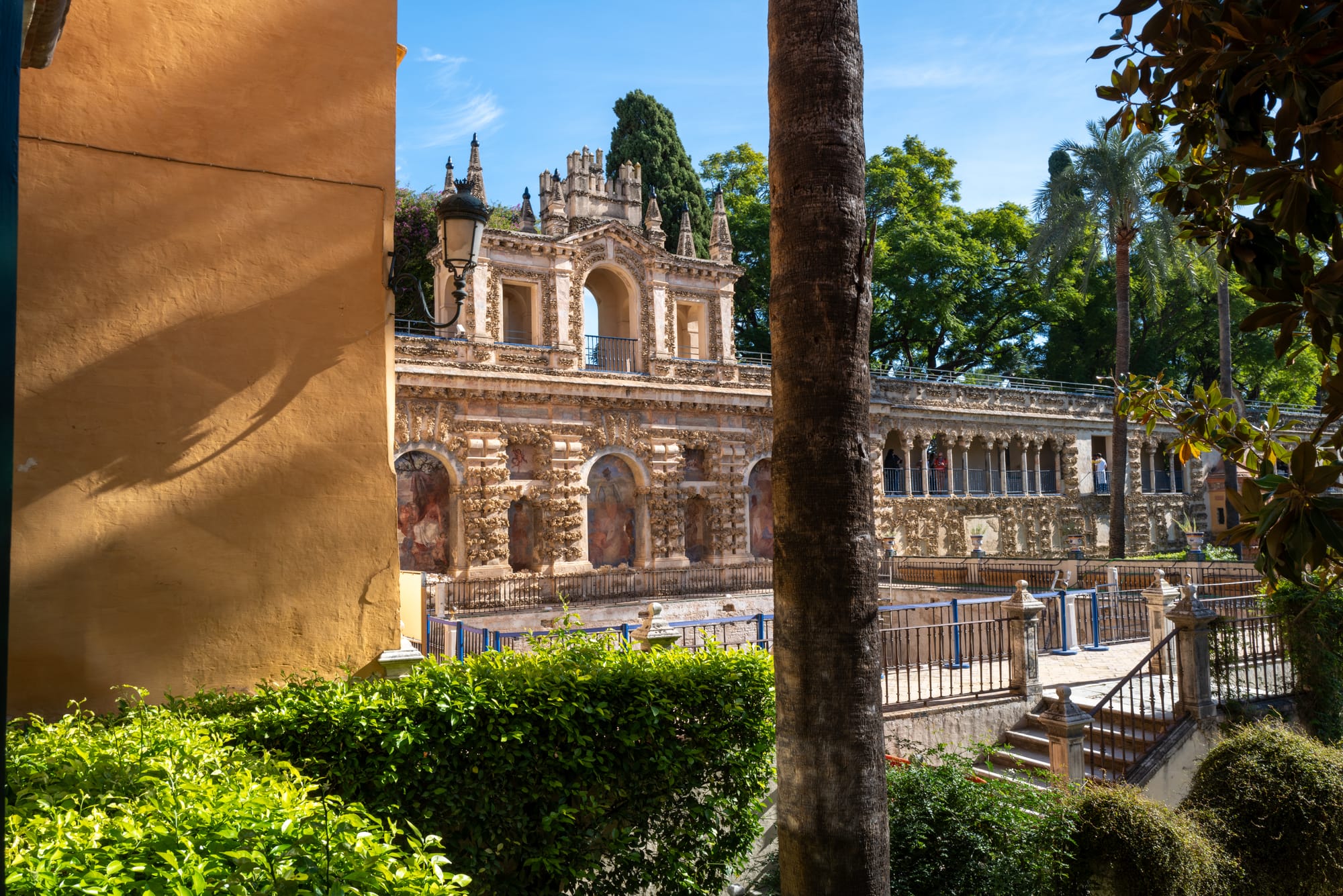
The Royal Alcázar Gardens
You may also recognize some of these garden photos from Game of Thrones, as they represented the Dornish - and aptly named - "Water Gardens" in the series. Typical of Islamic architecture, water was ever-present in the form of pools, irrigation canals, fountains, jets, and runnels.
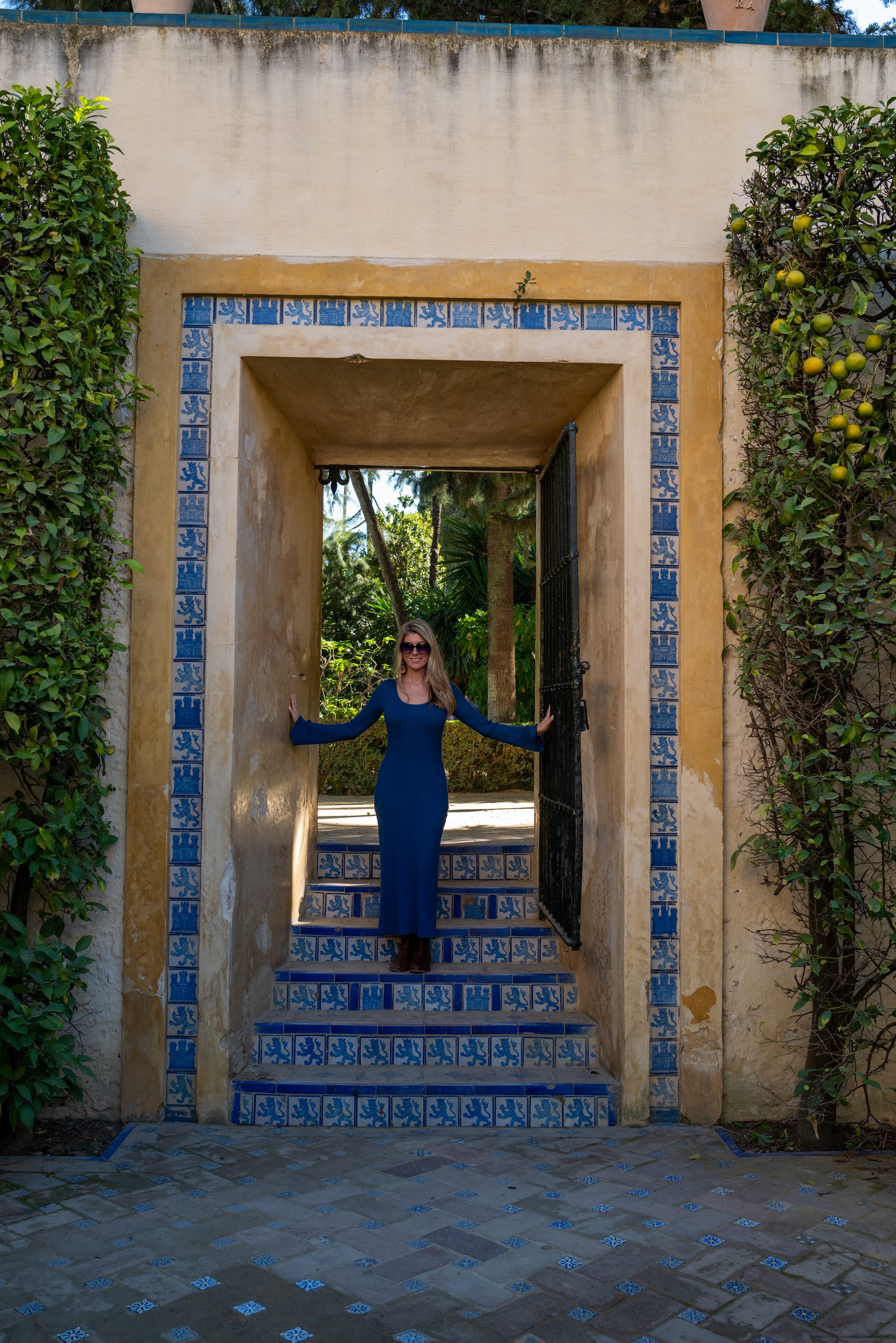
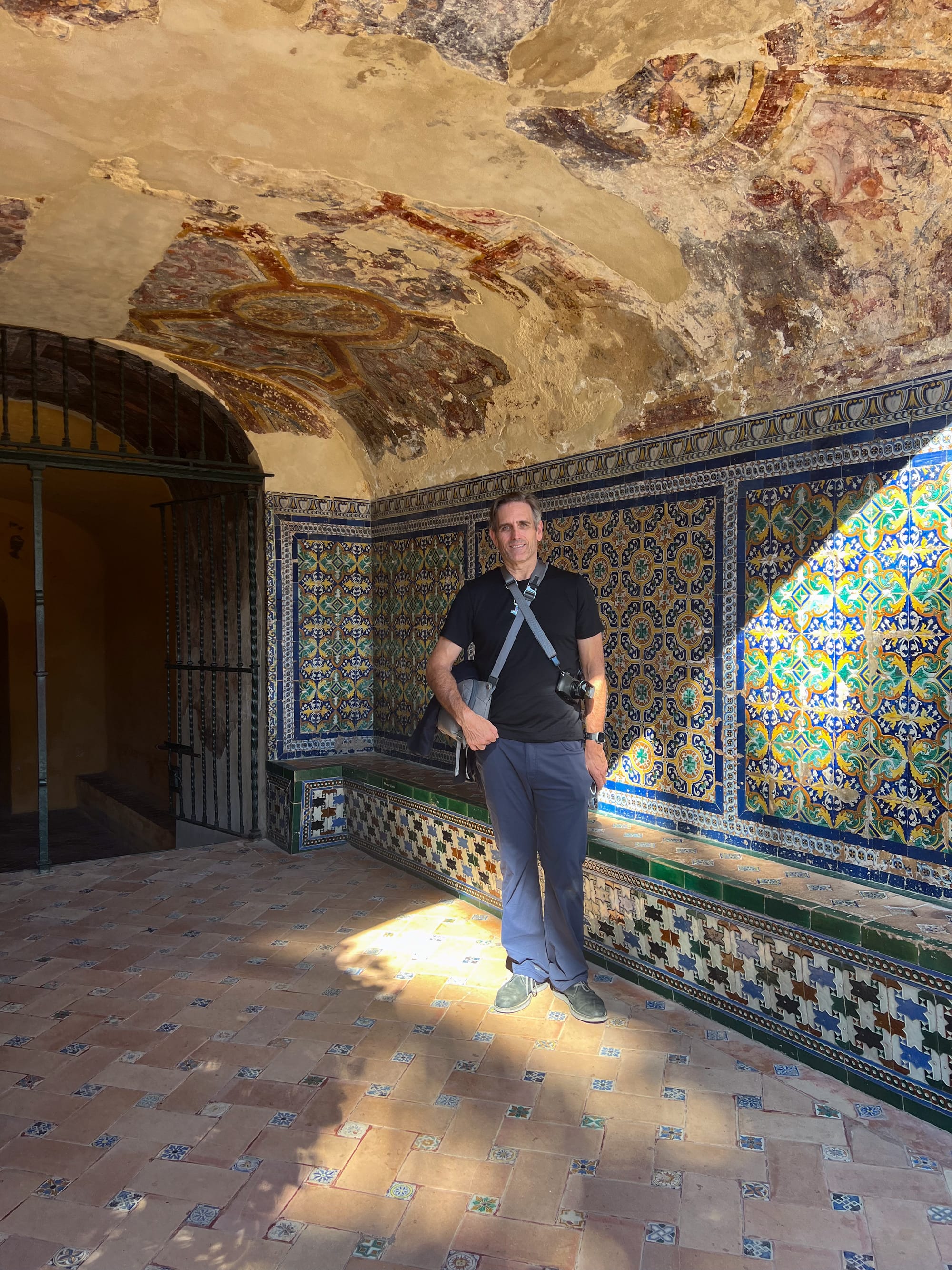
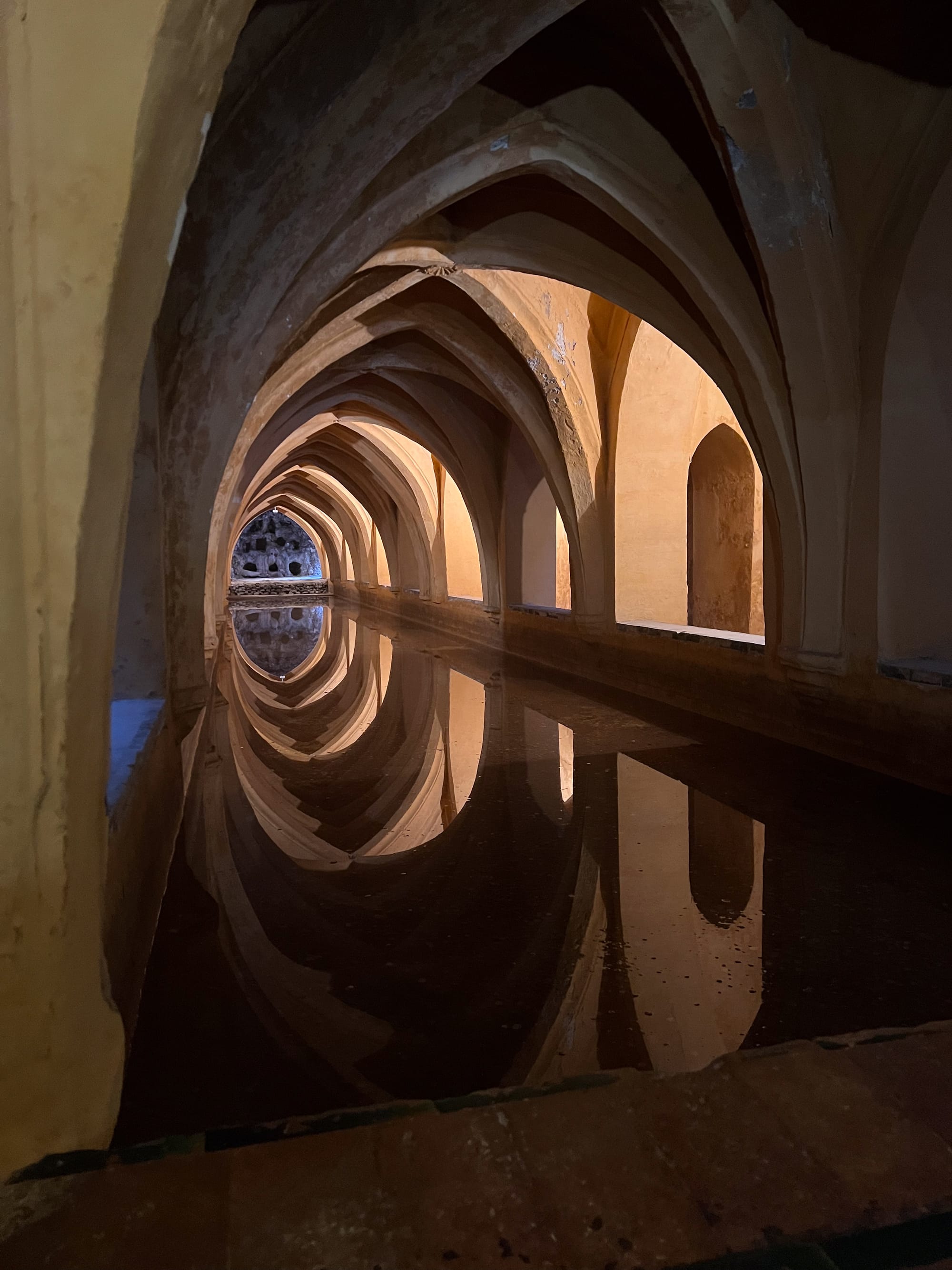
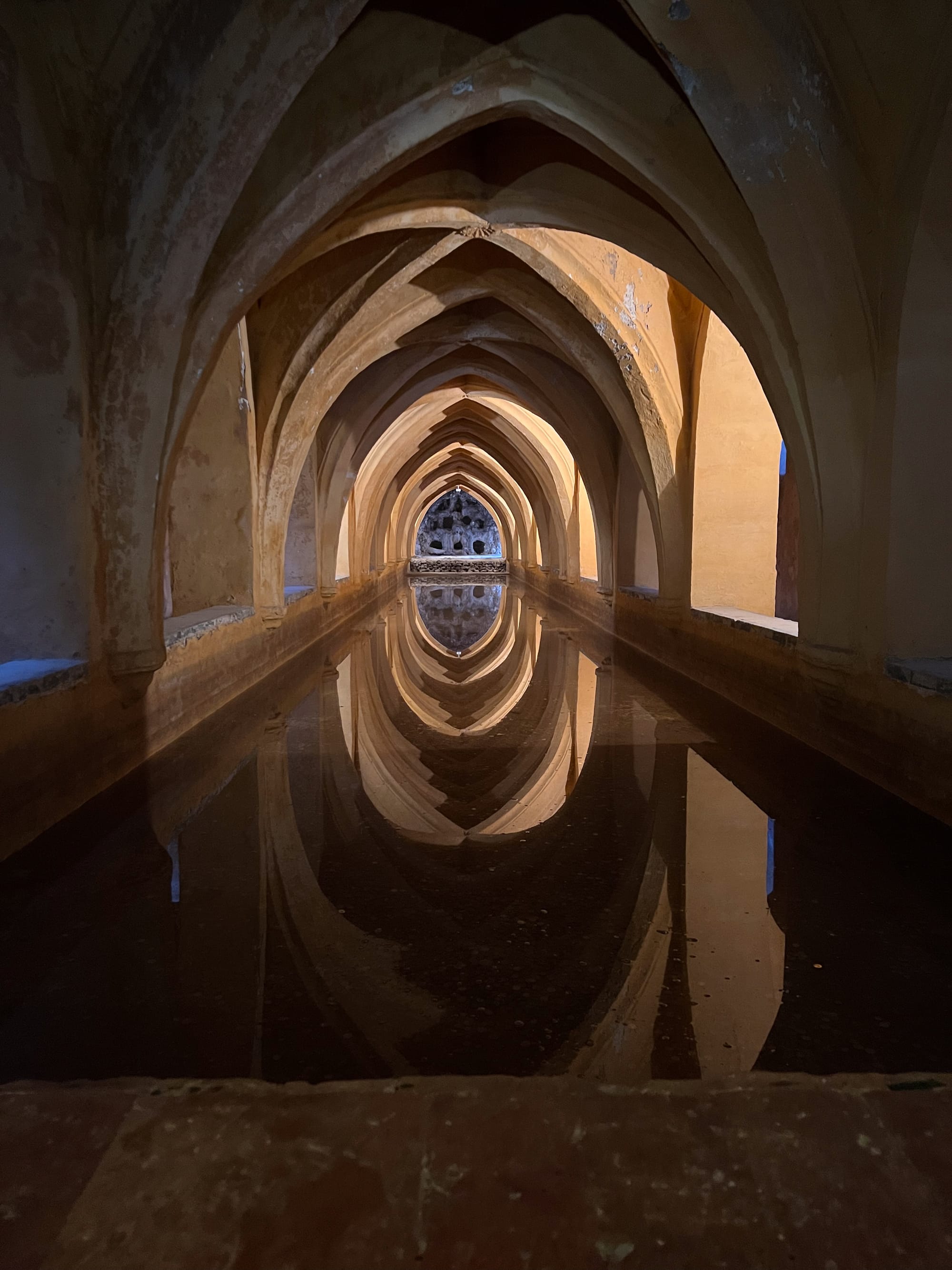
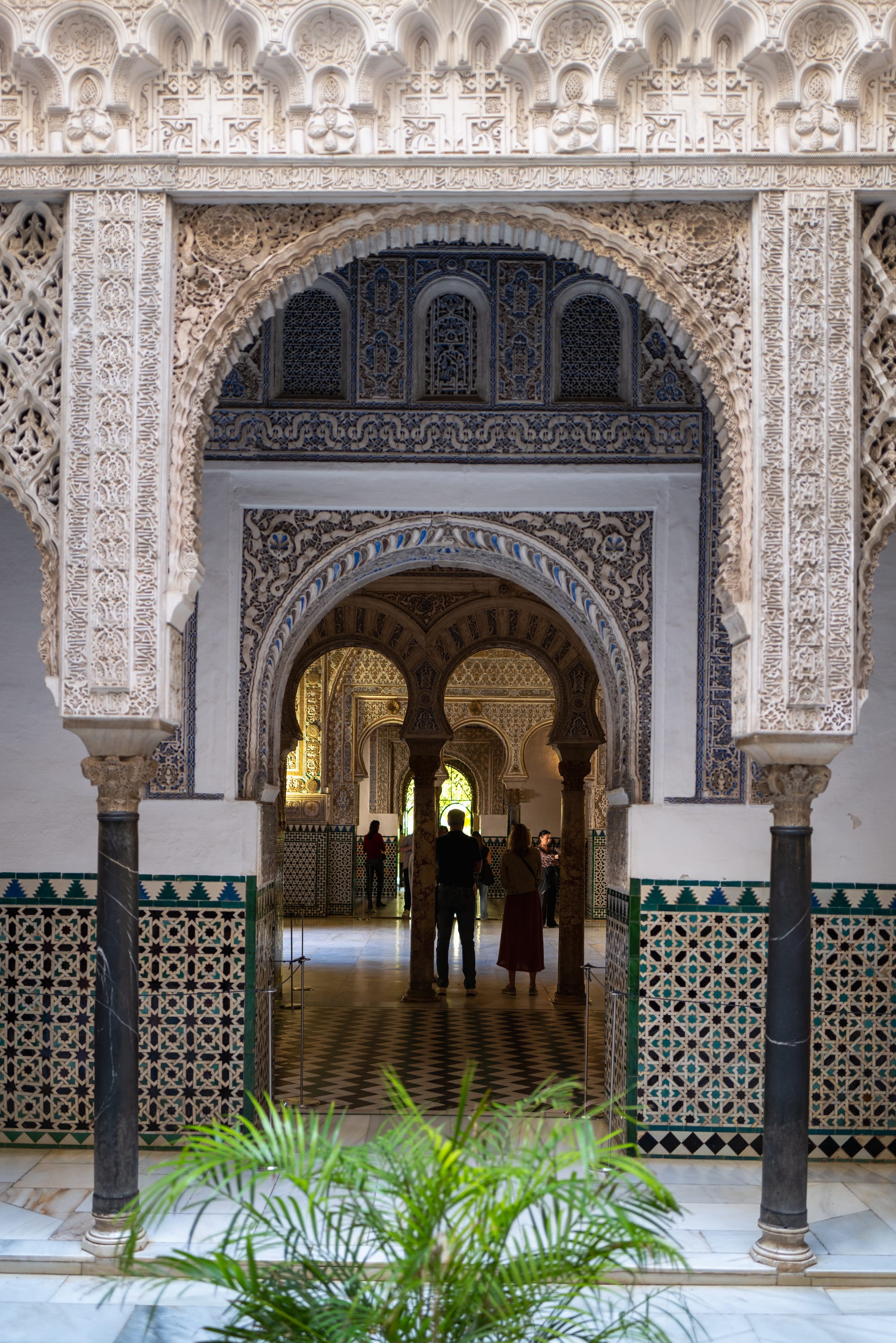
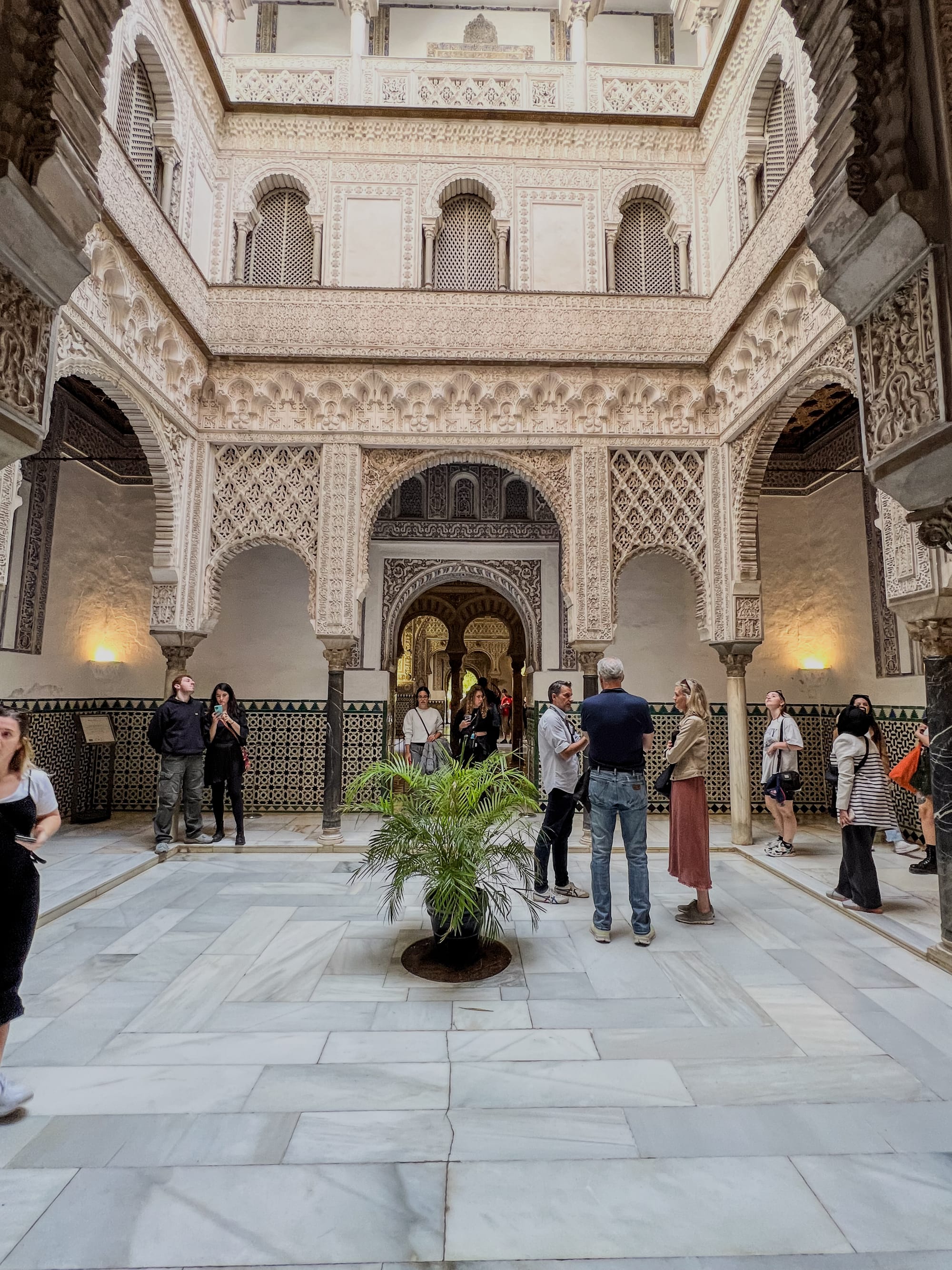
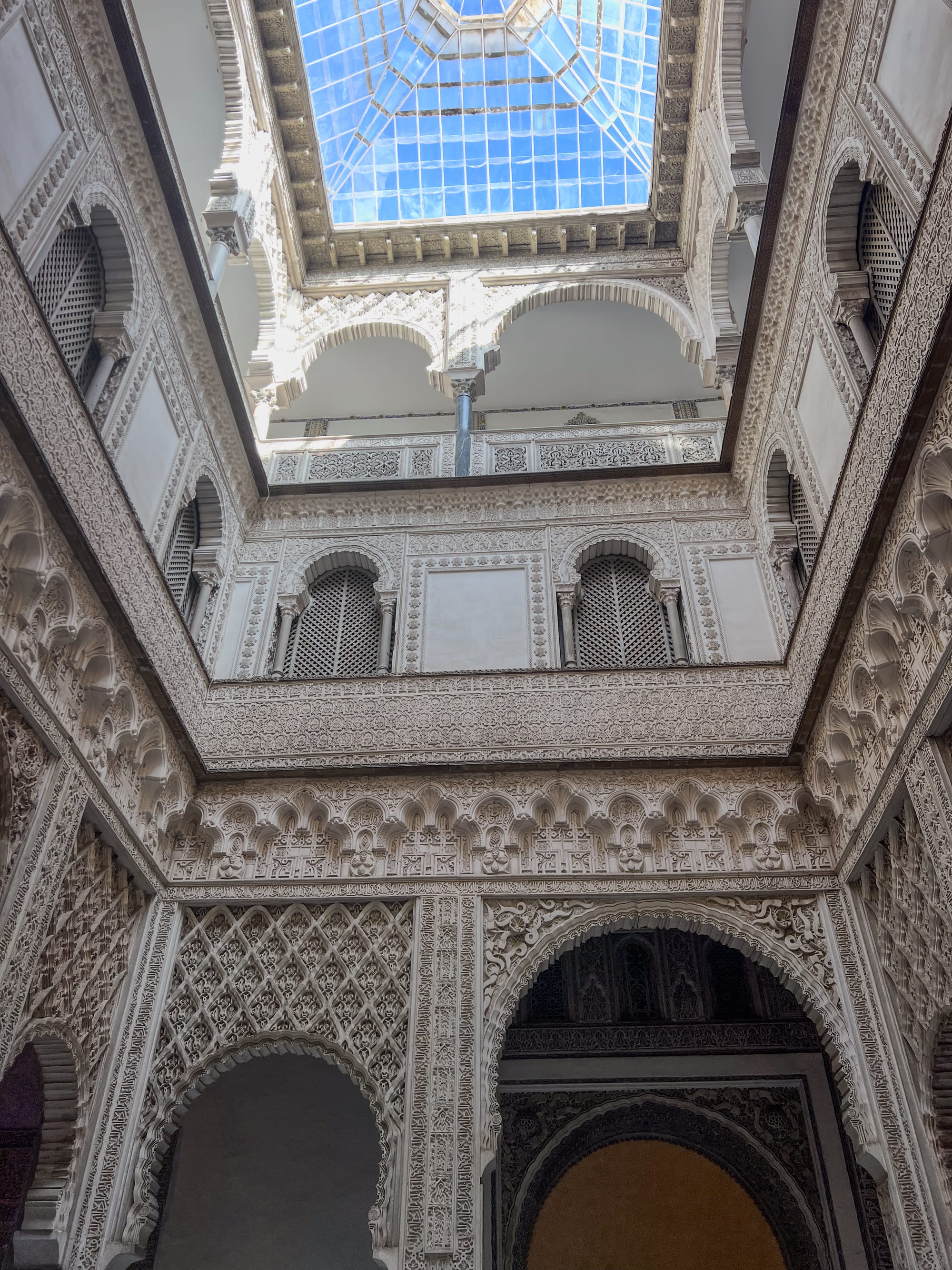
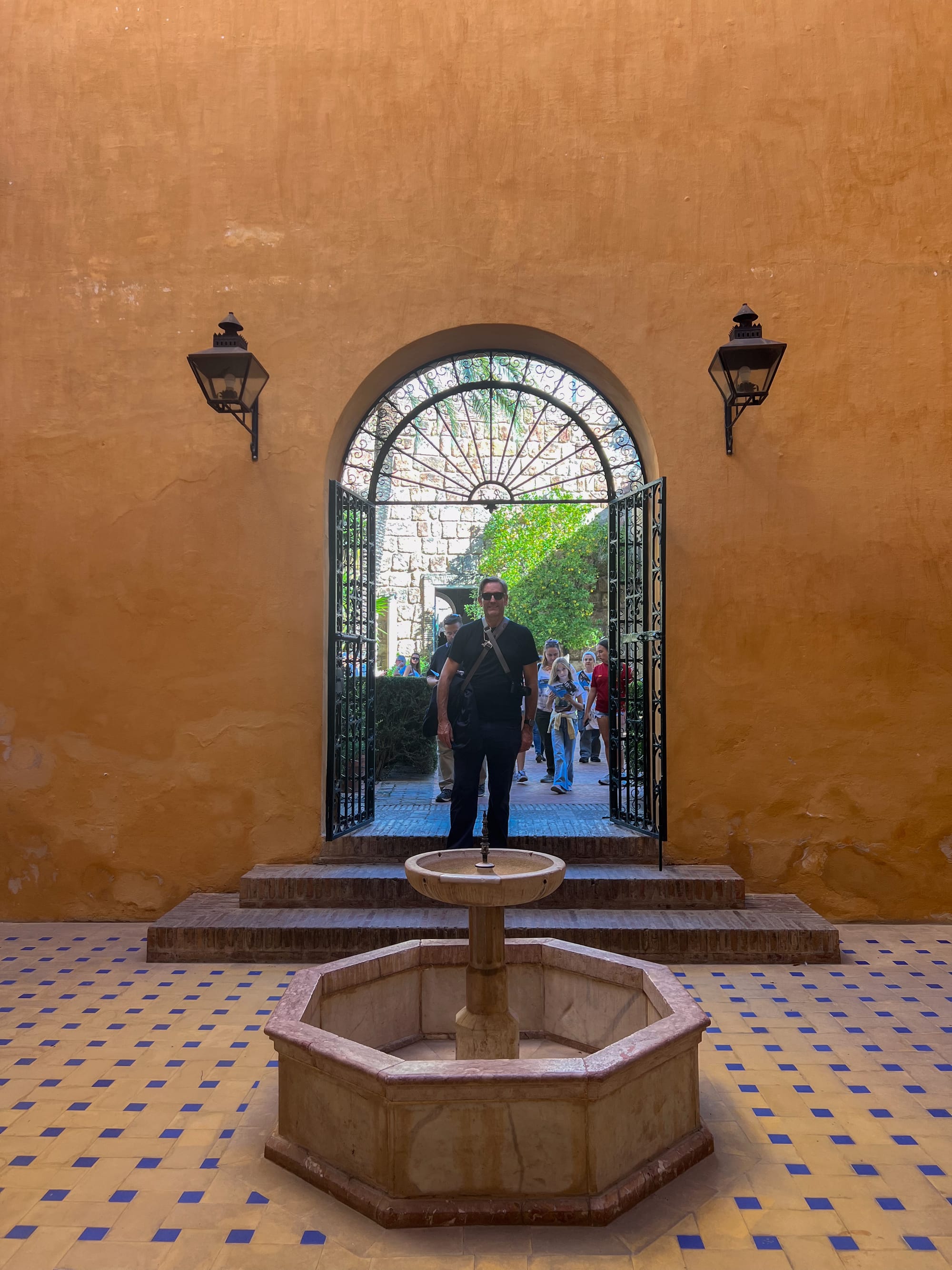
By the time we got through the entirety of the Alcázar, we were quite famished....so we headed to Bar Postigullo for some Sangria and tapas. Located next to Reales Atarazanas, the medieval shipyard of Seville, the restaurant is housed in the former palace of the Marquis of Torrenueva from the 18th century. Years later it became a fish market; the space still contains Roman columns and arches, with walls scathed by time and a large collection of the remnants of bullfights past.
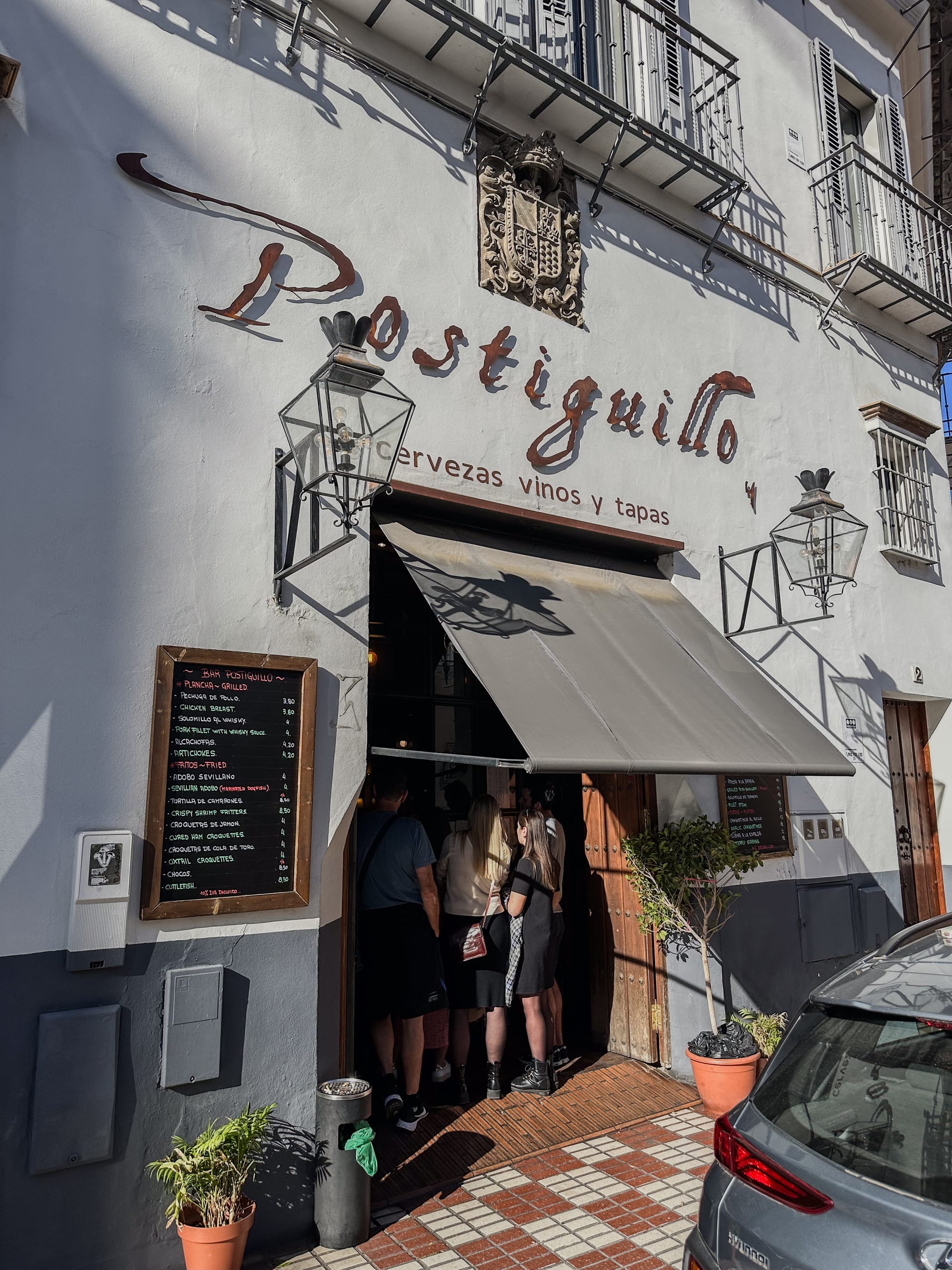
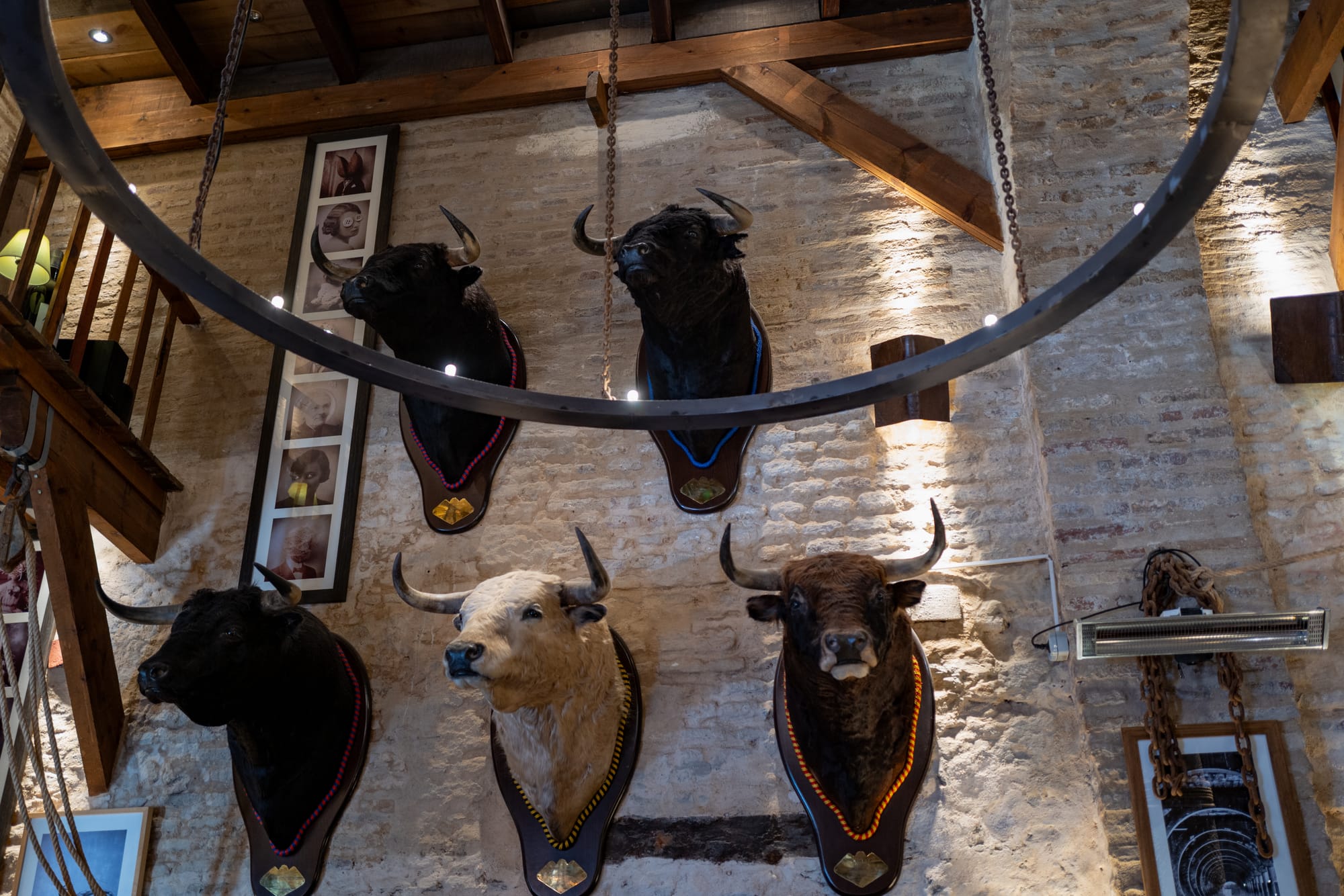
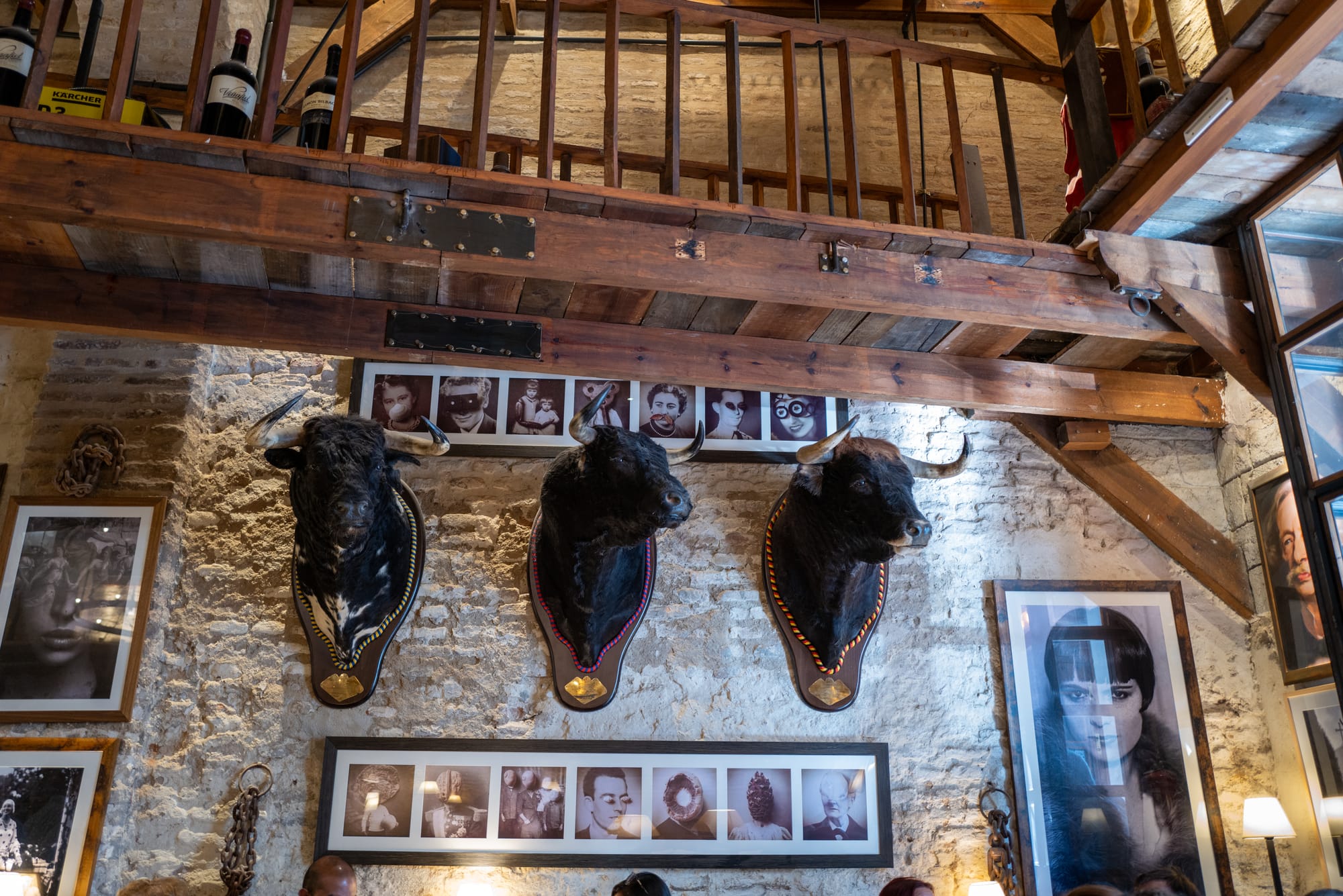
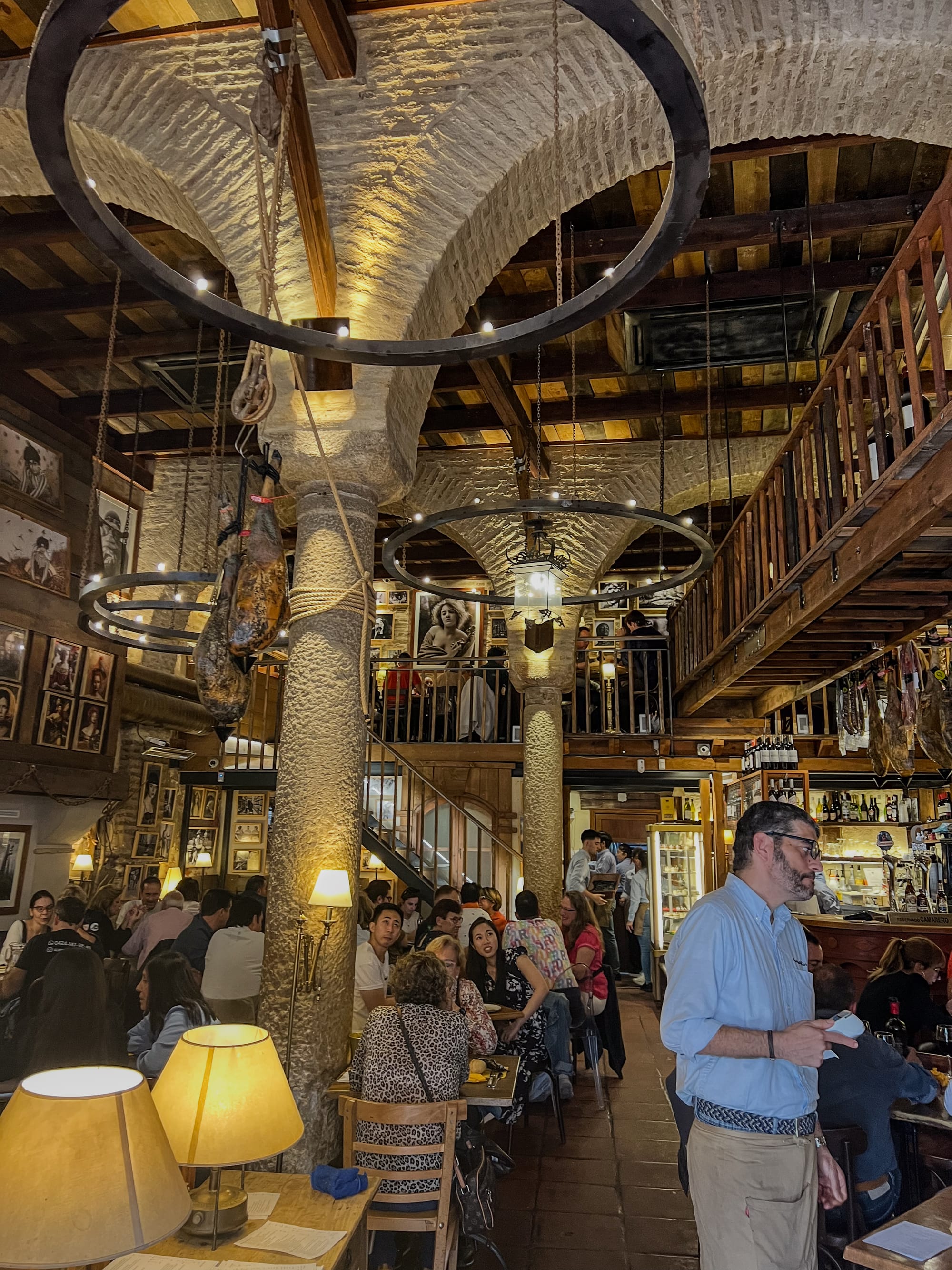
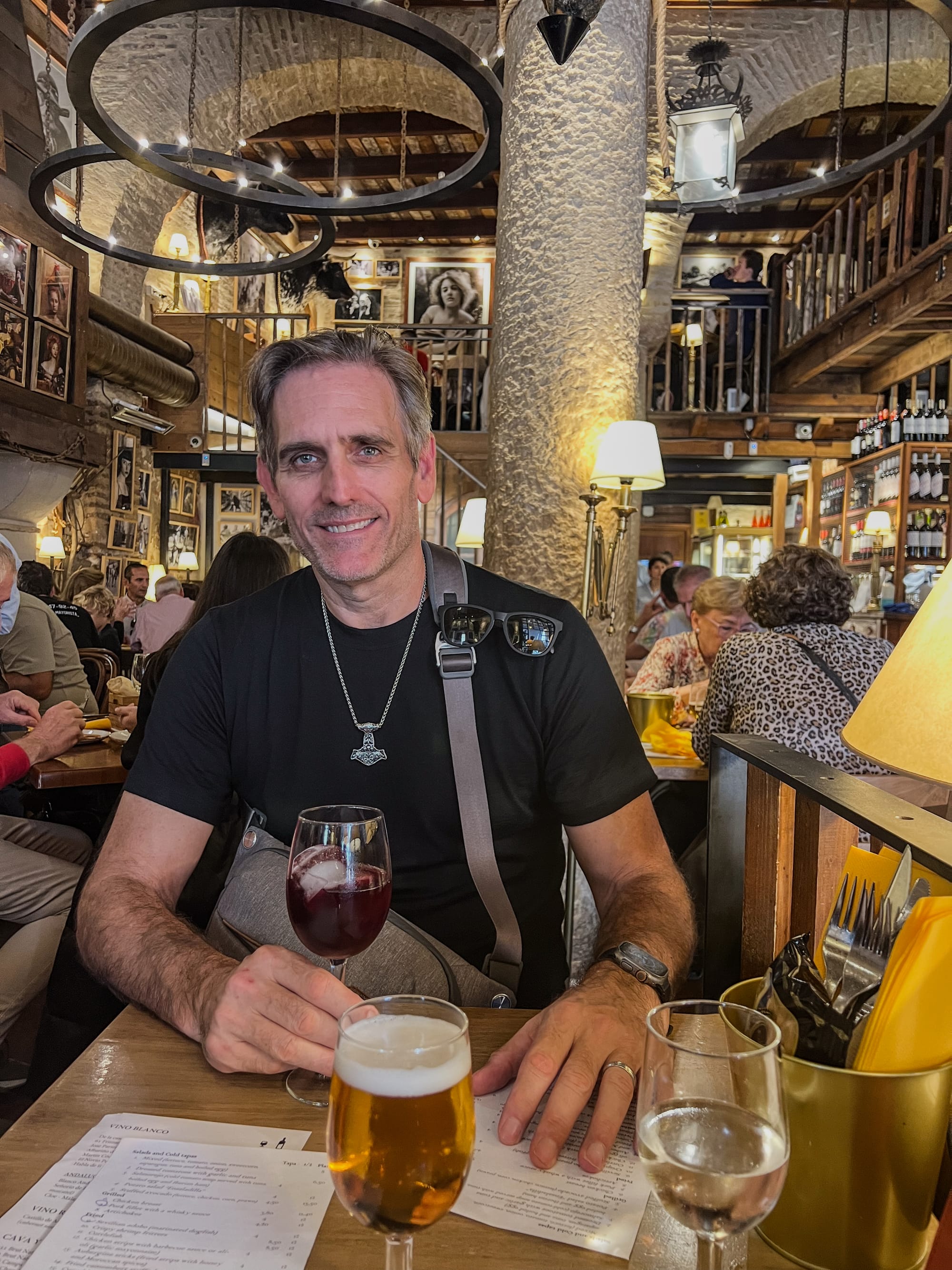
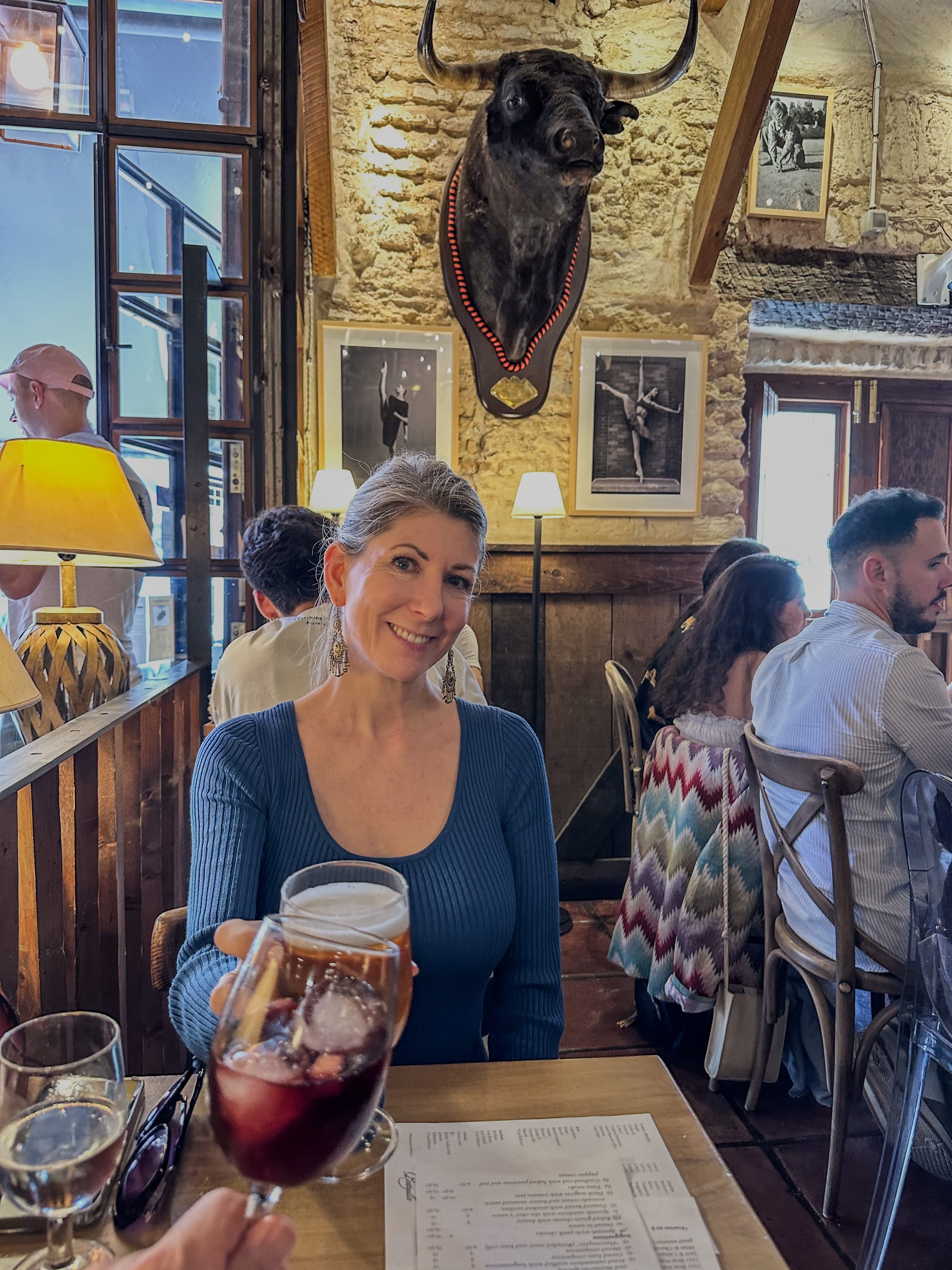
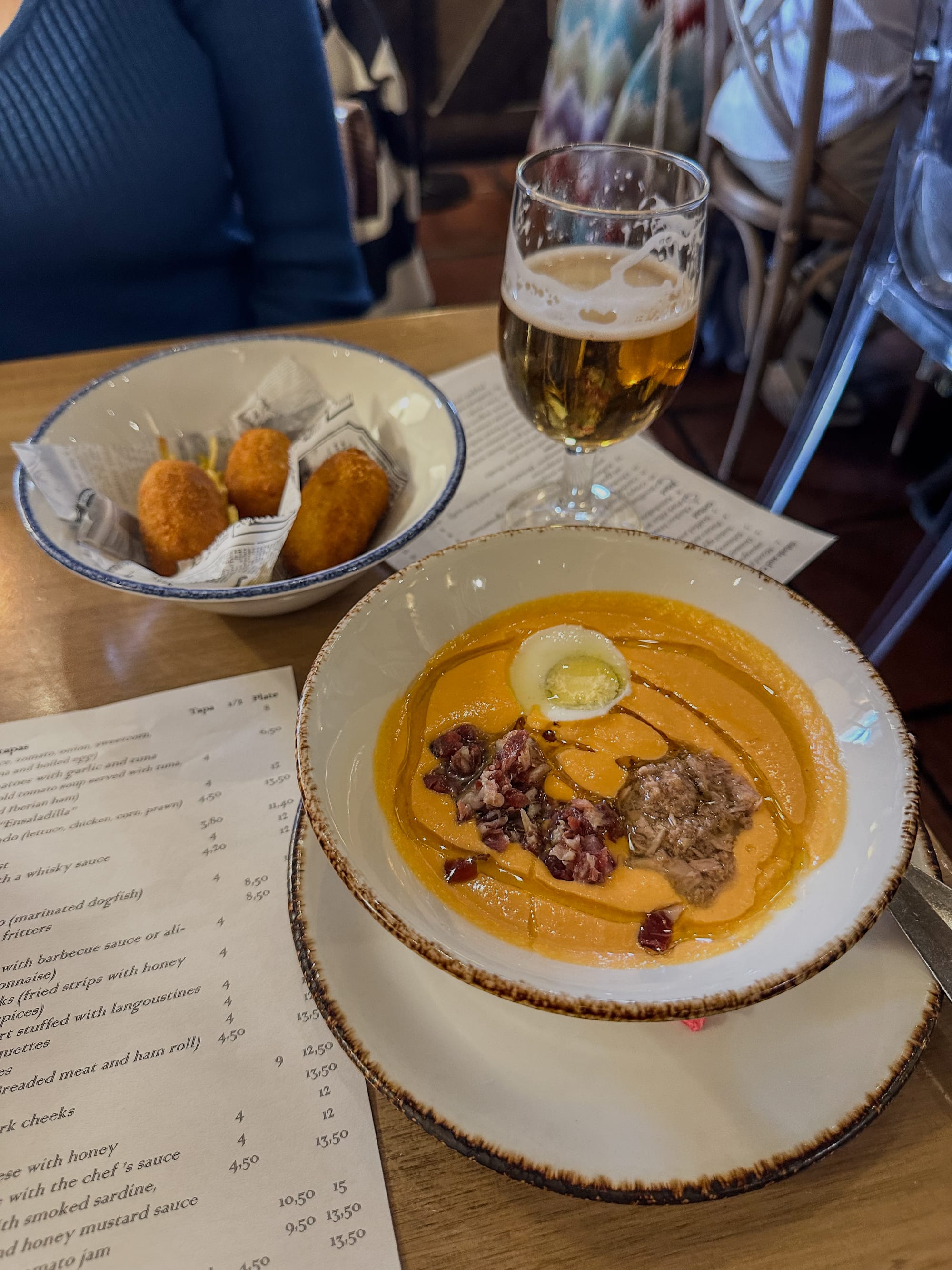
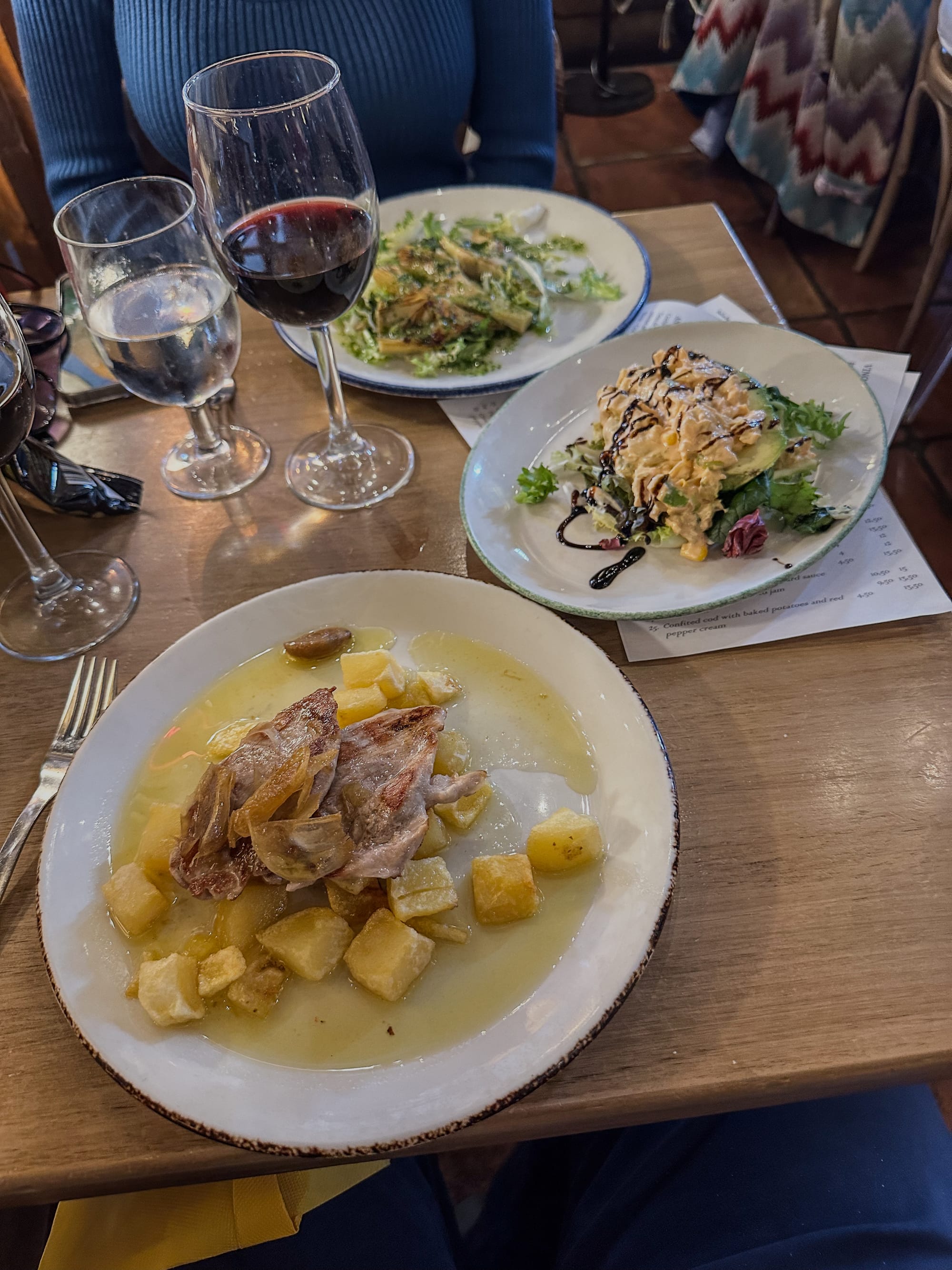
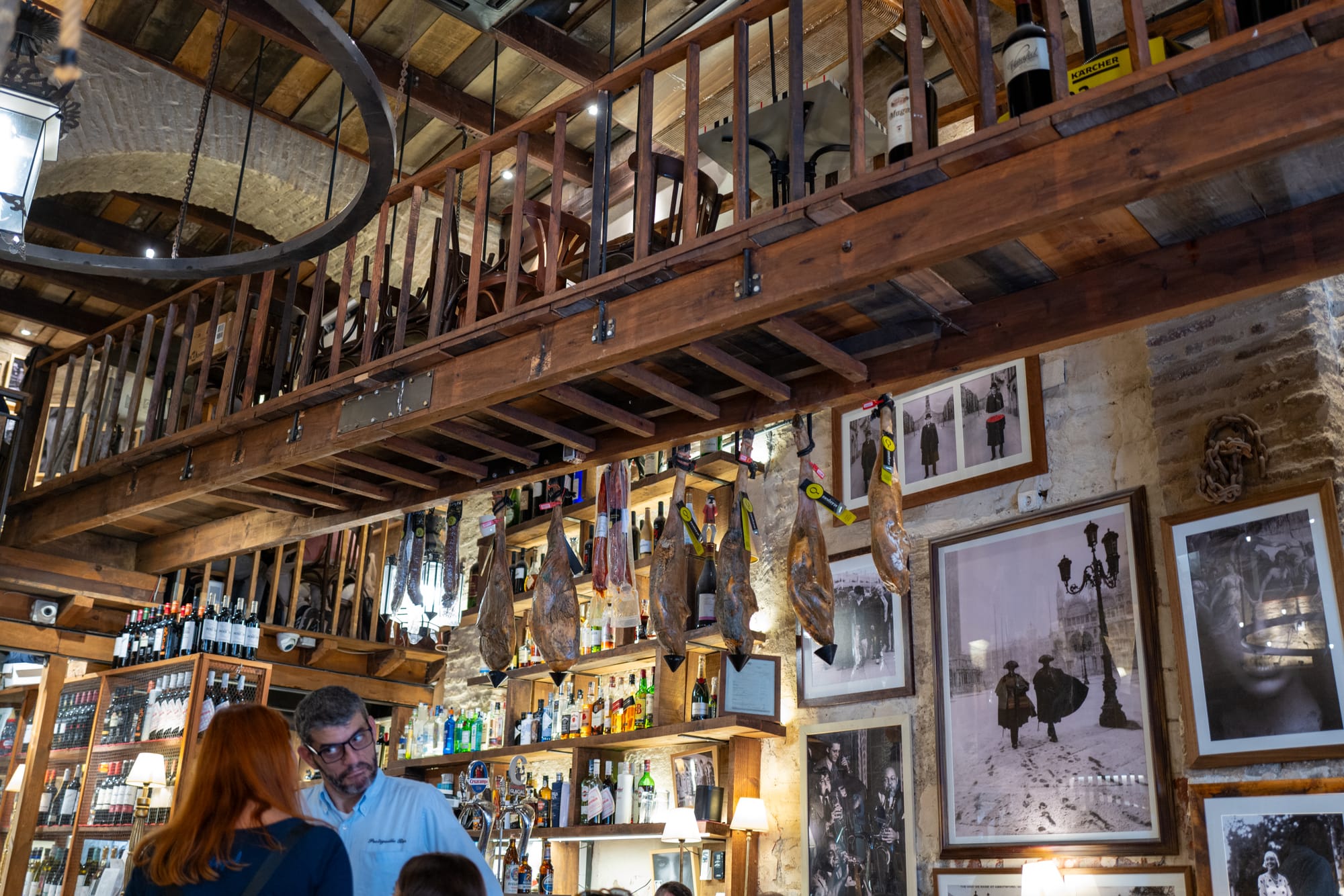
The food here was delicious. I particularly enjoyed the Salmorejo; a Spanish cold tomato soup. It’s made from ripe tomatoes, bread, garlic, sherry vinegar, and olive oil. It’s traditionally topped with Spanish cured ham (Serrano or Iberico) or tuna, and a chopped boiled egg, as well as fresh bread on the side. You’ll find it’s quite distinct from its cousin, Gazpacho.
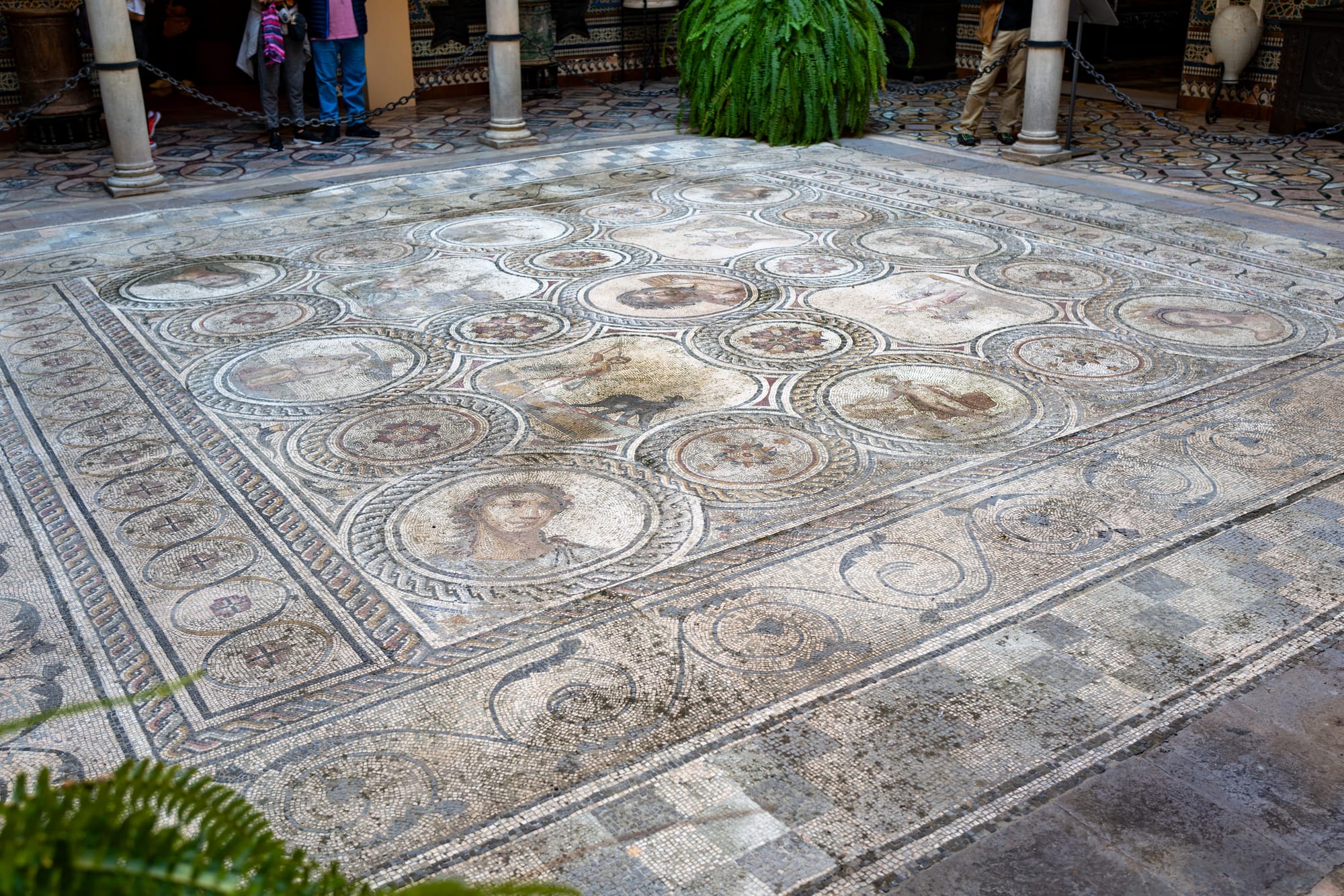
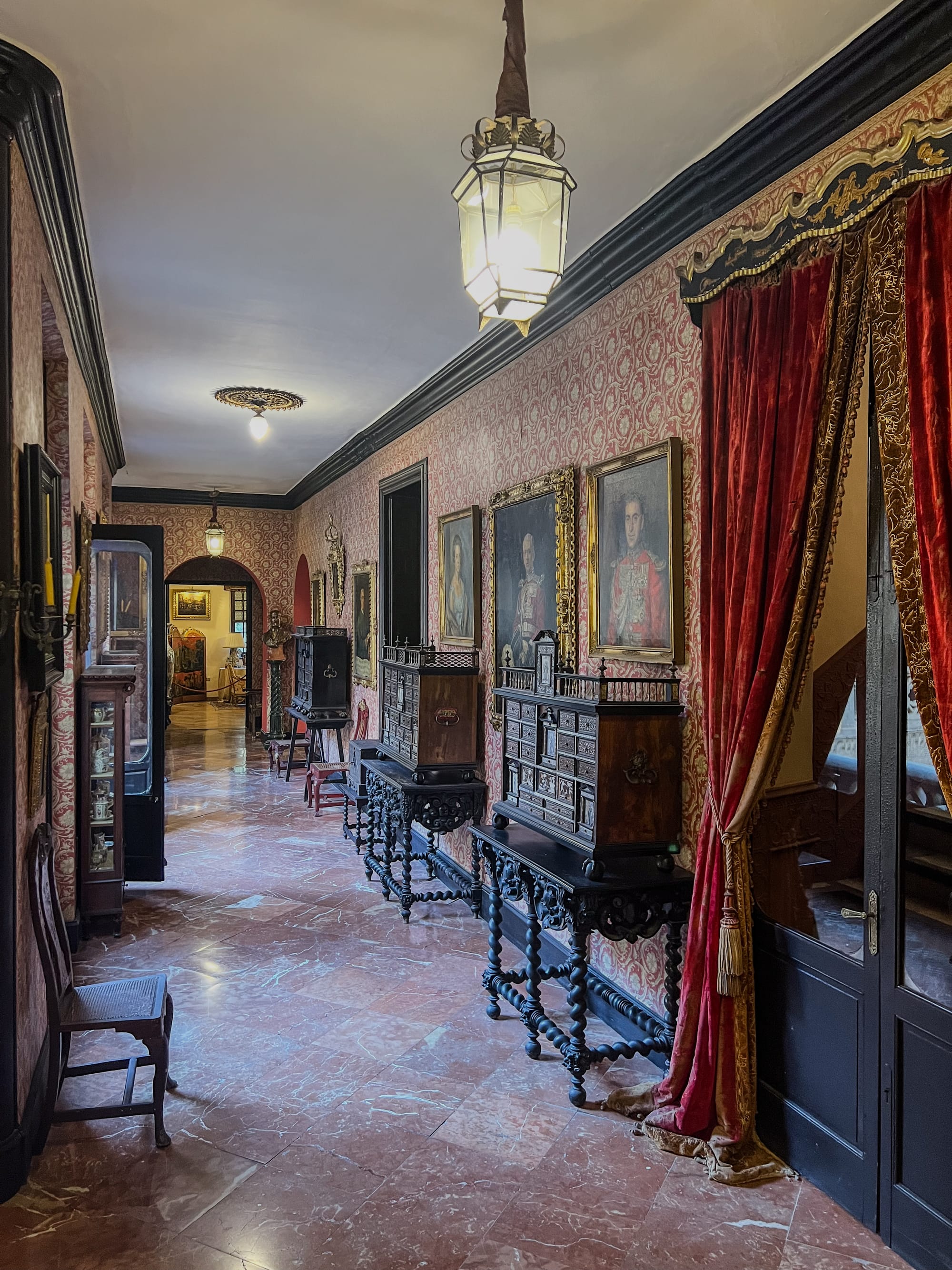
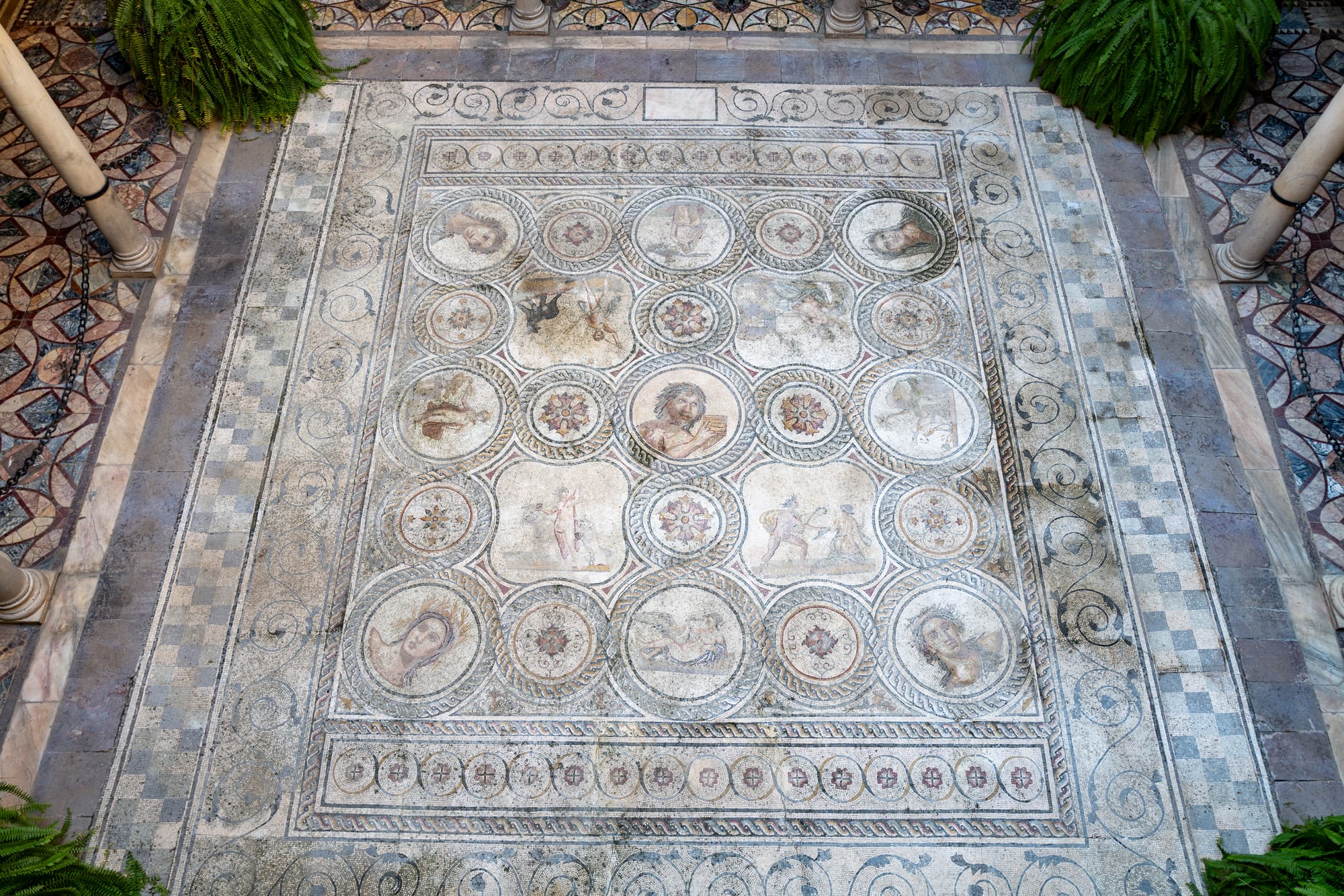
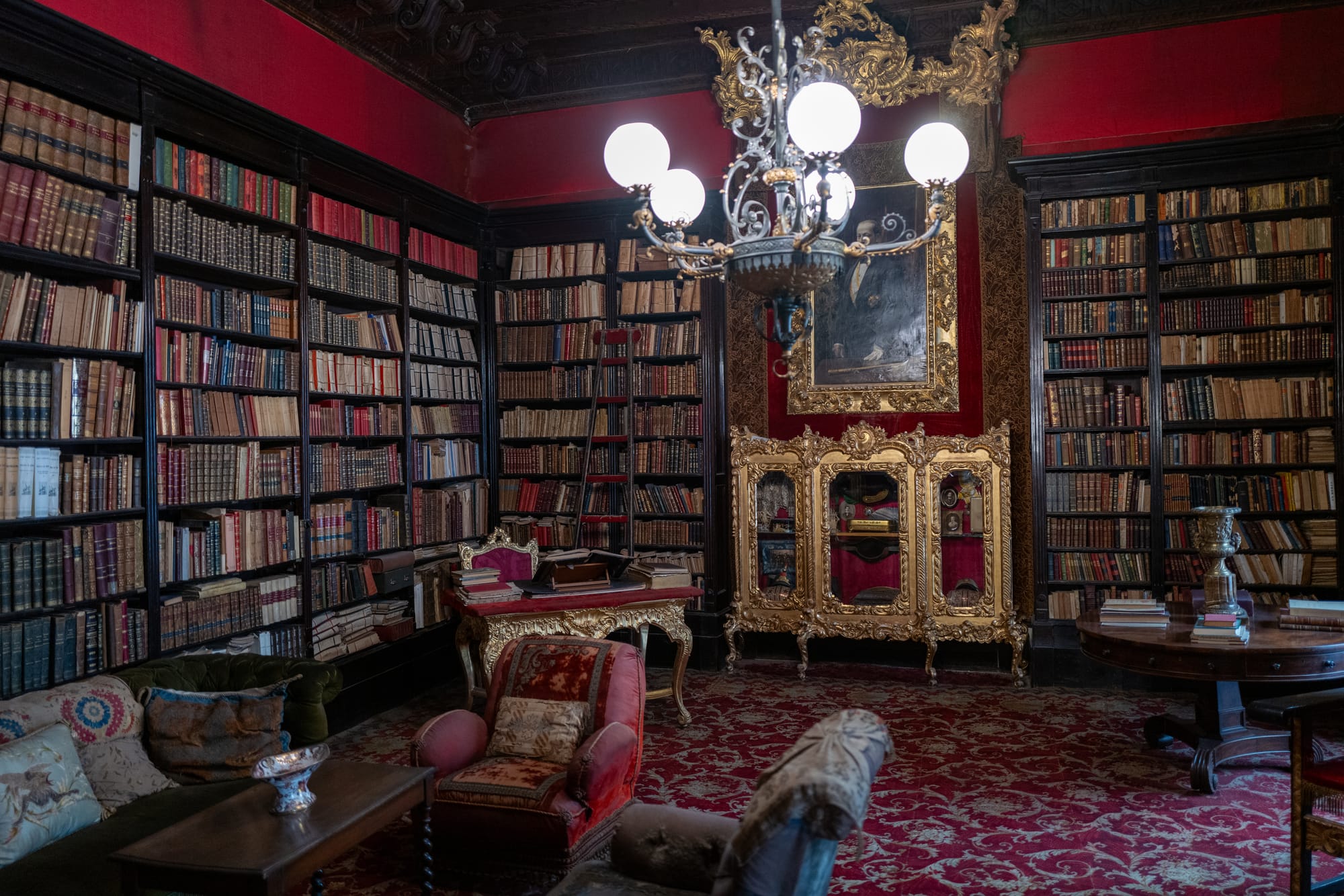
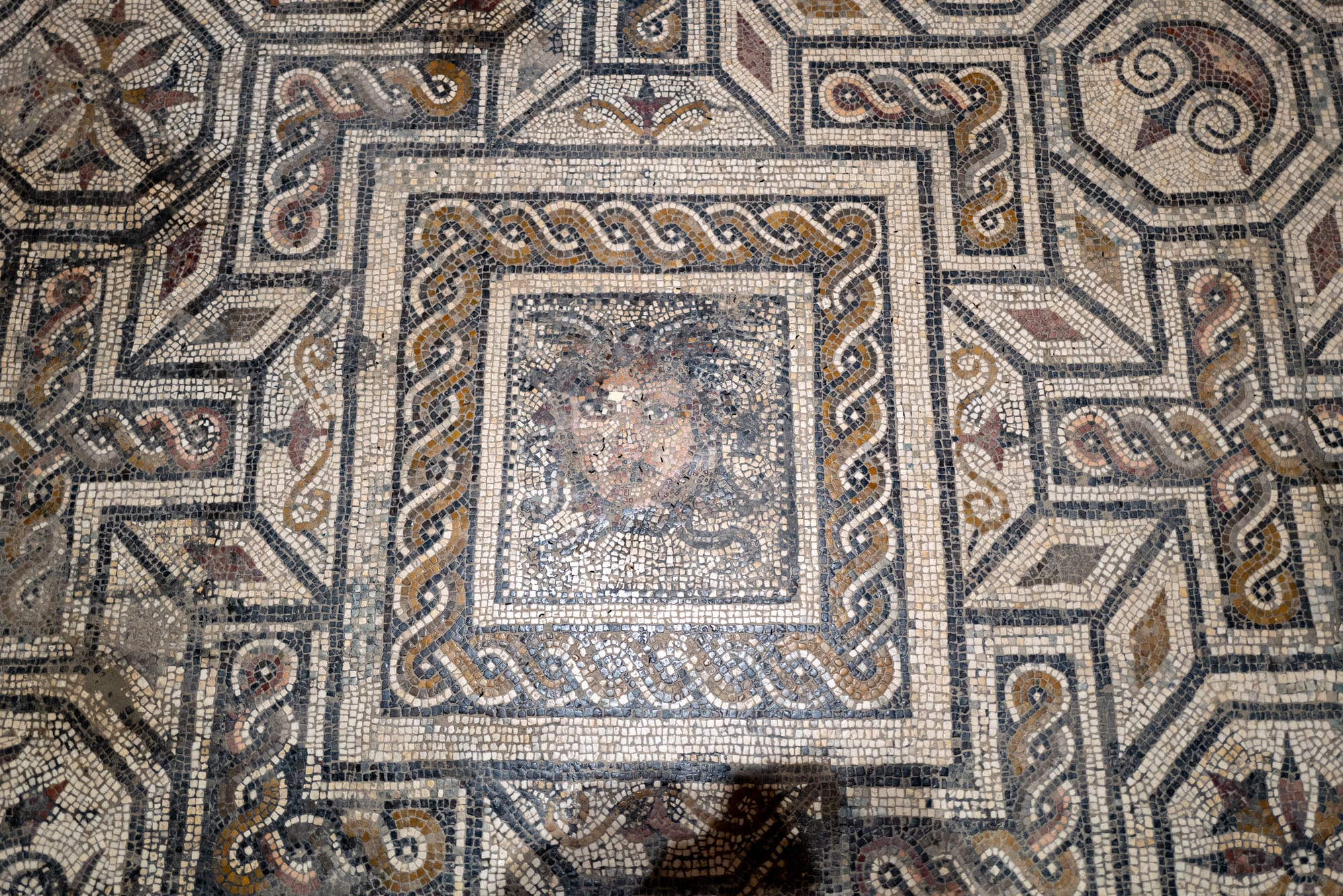
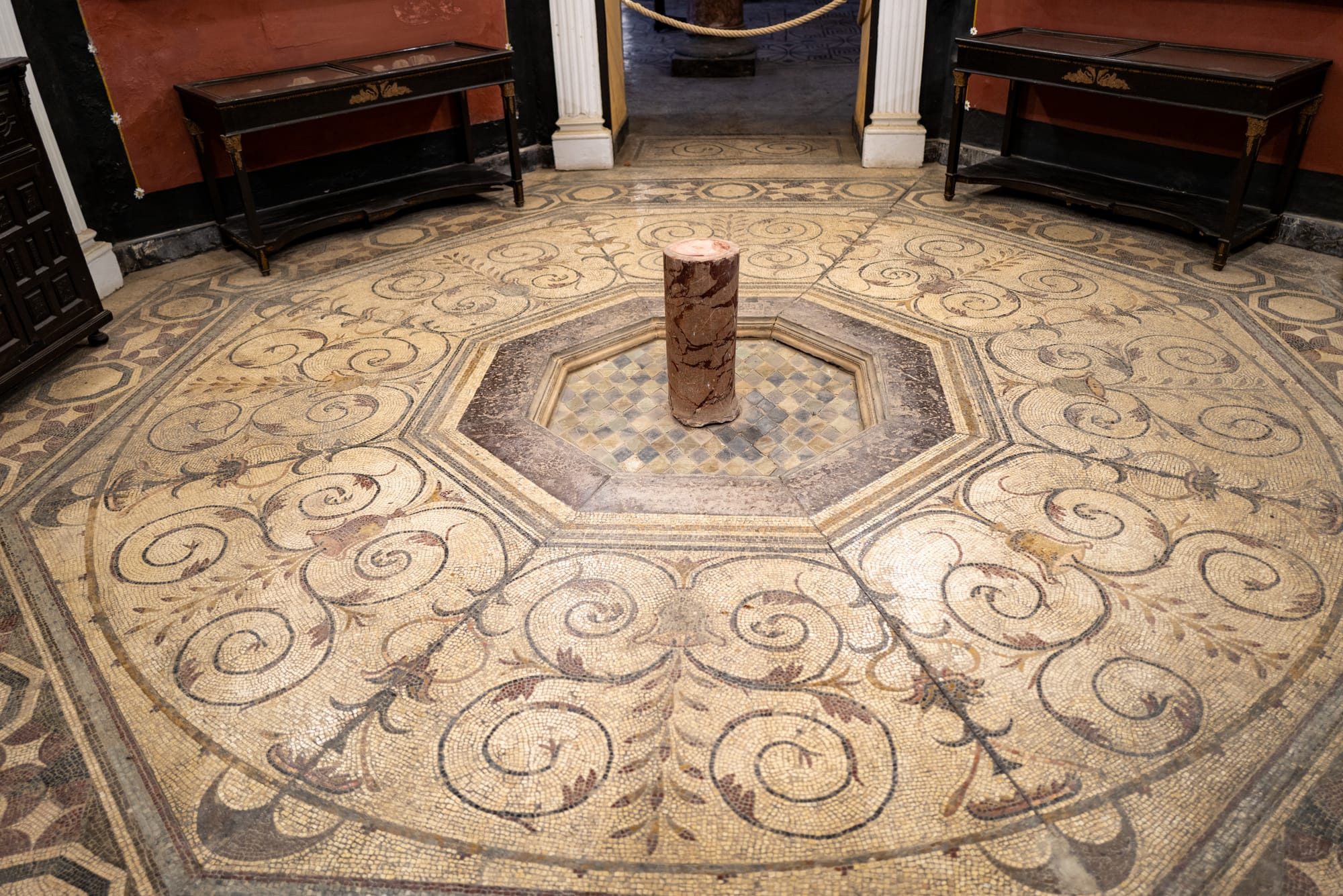
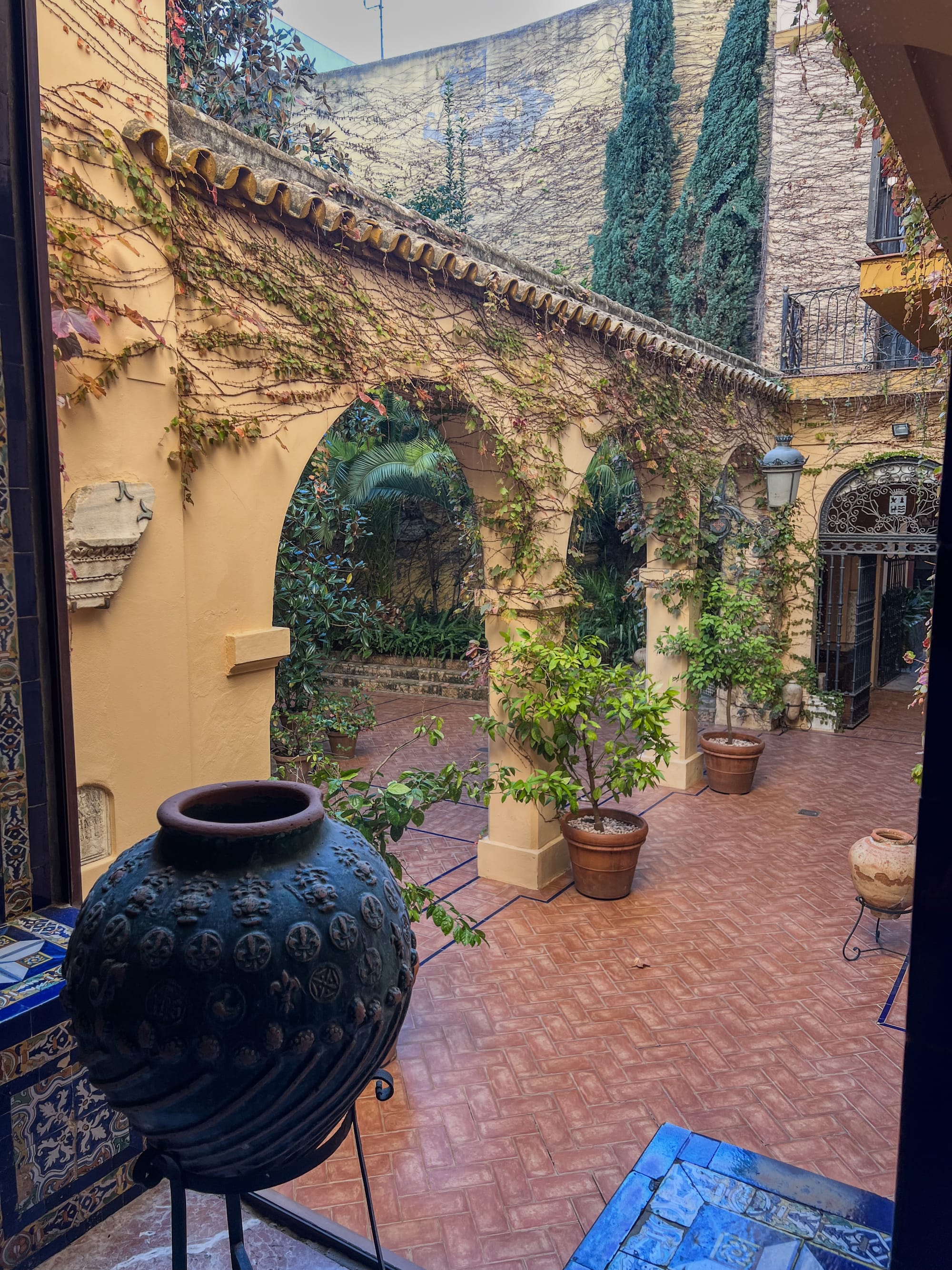
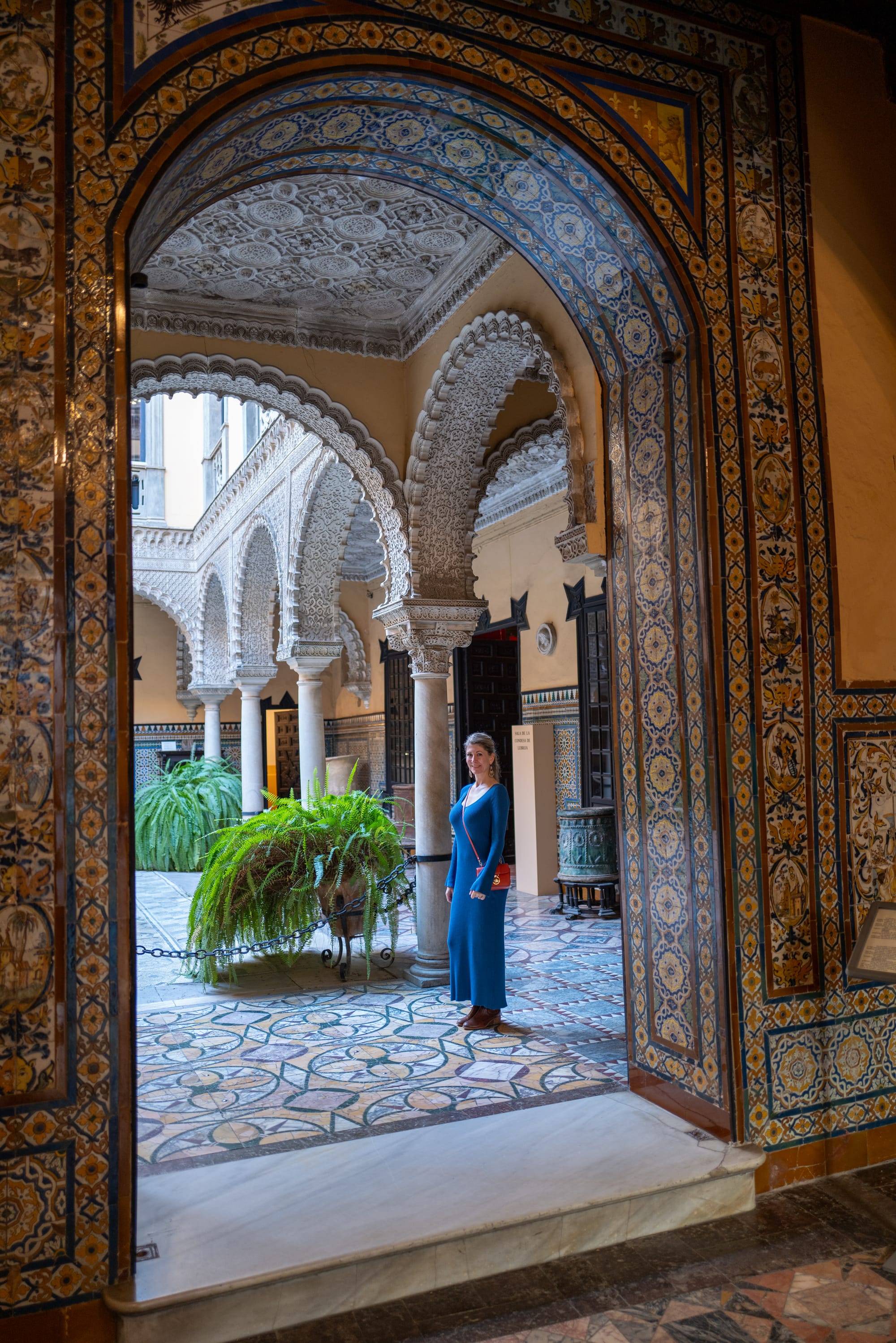
Next up: We toured Palacio de la Condesa de Lebrija, a palace dating from the 16th century with Roman mosaic tile, azulejos, patios, various art work, and archeological items. The palace was extensively re-modeled by the Condesa during the late 19th and early 20th century and reminded me of the Isabella Stuart Gardner museum in Boston; it had that same kind of vibe.
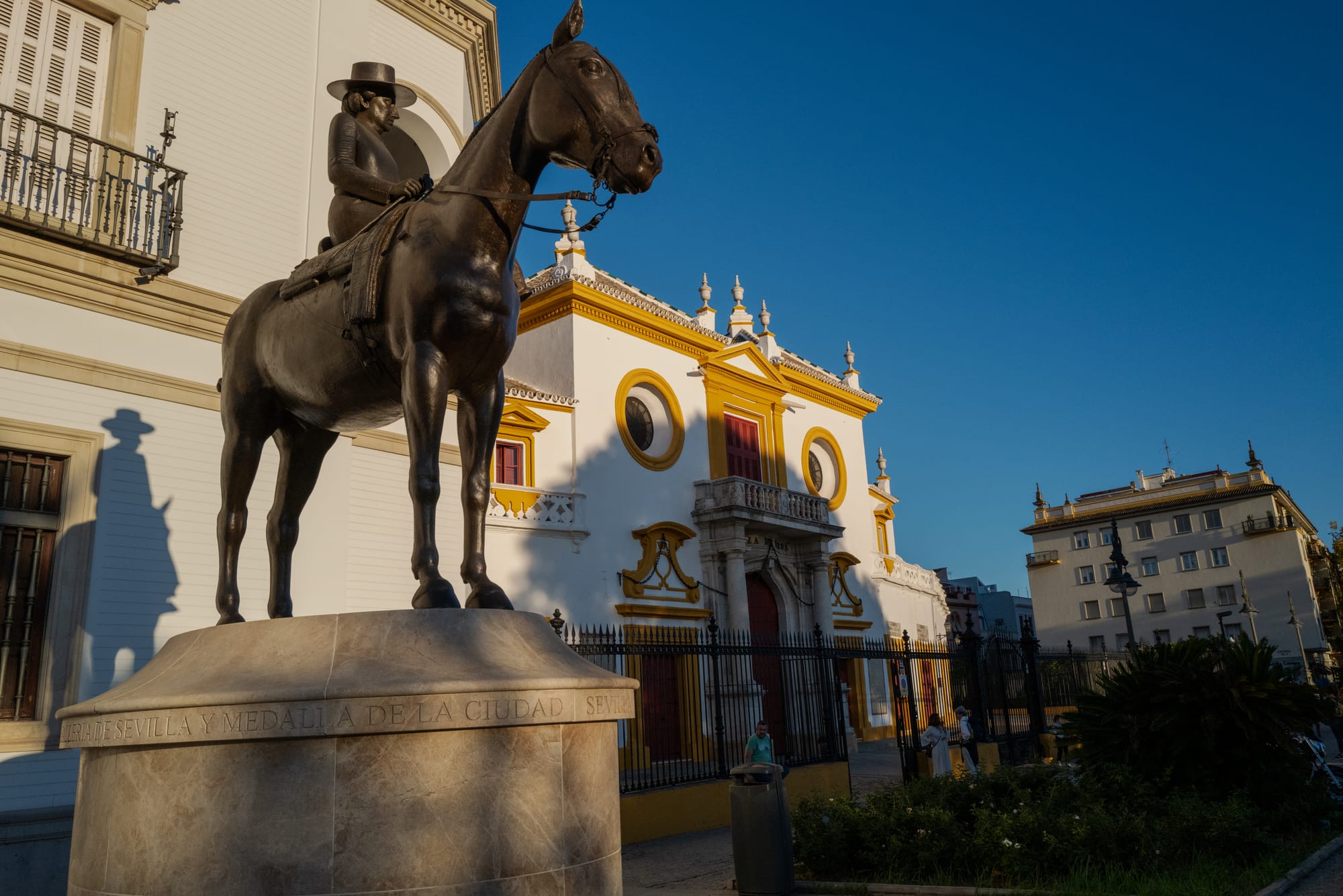
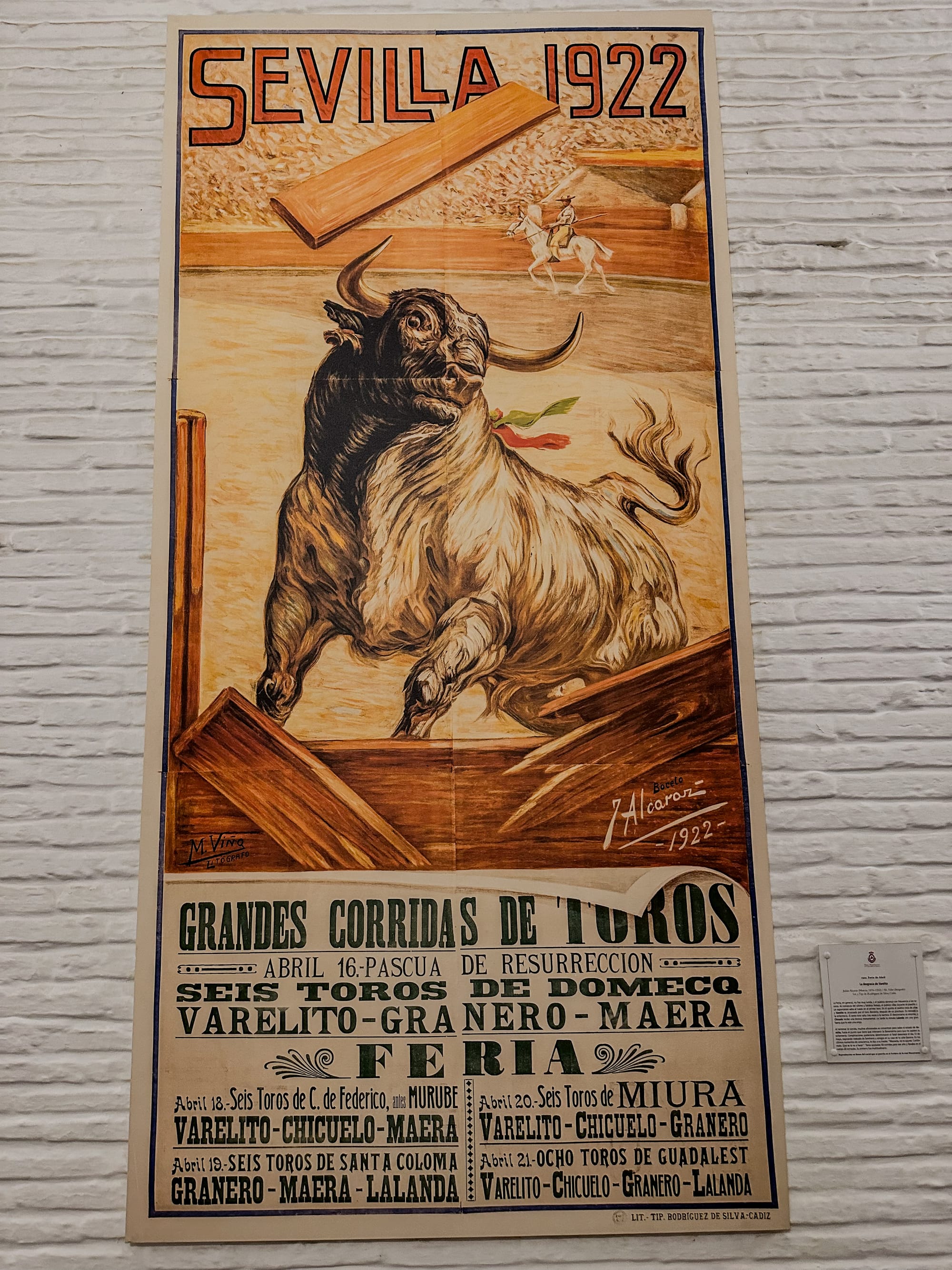
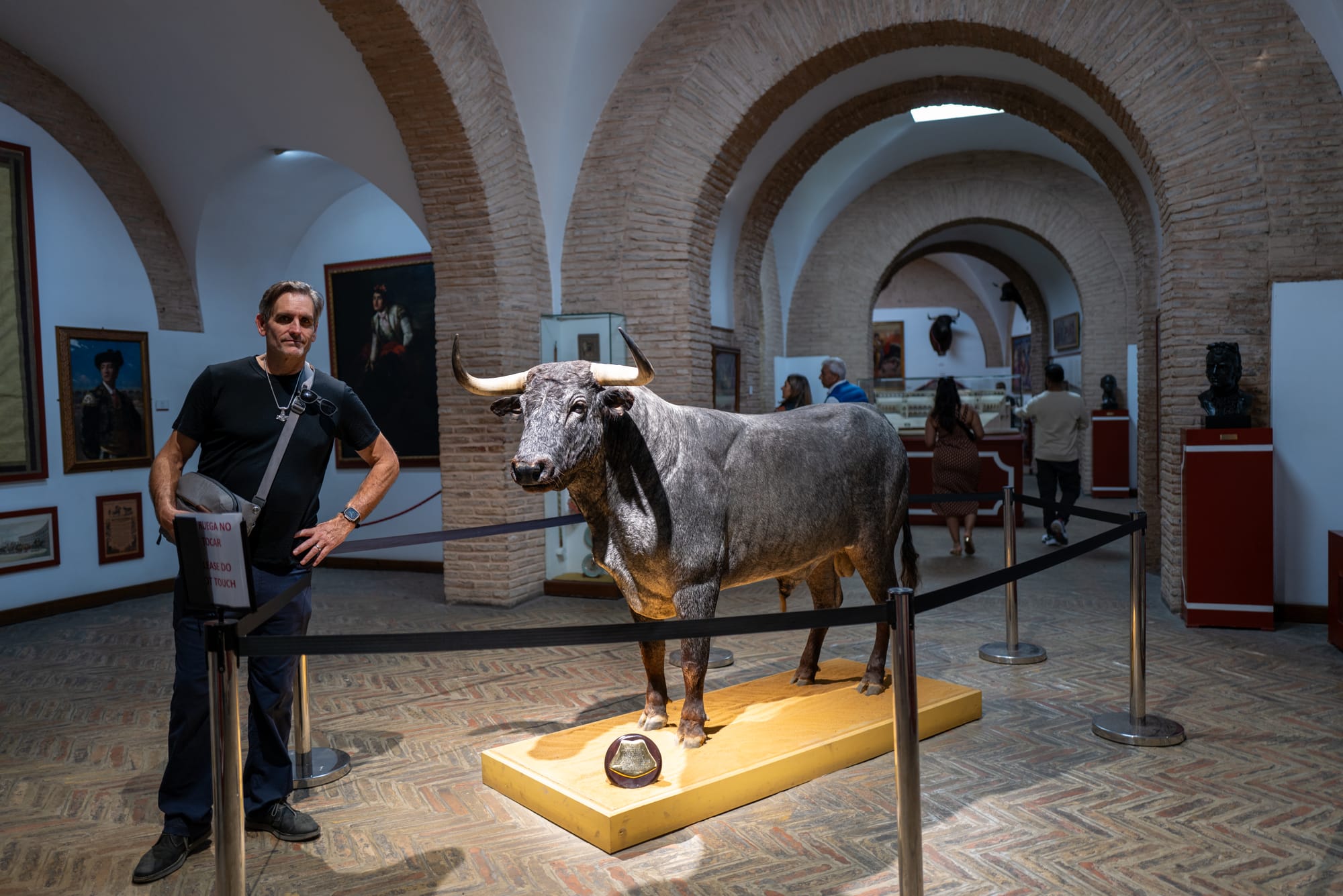
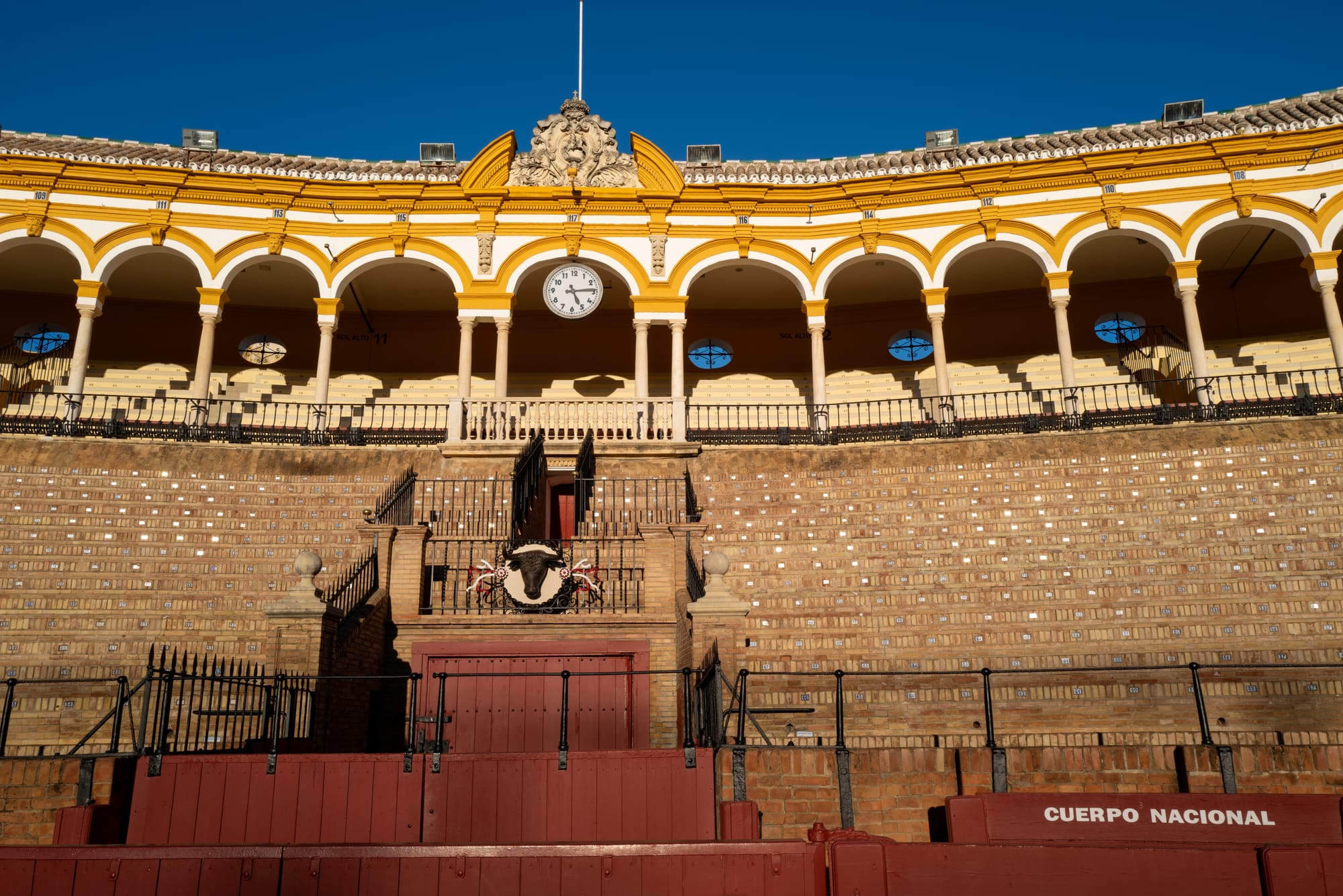
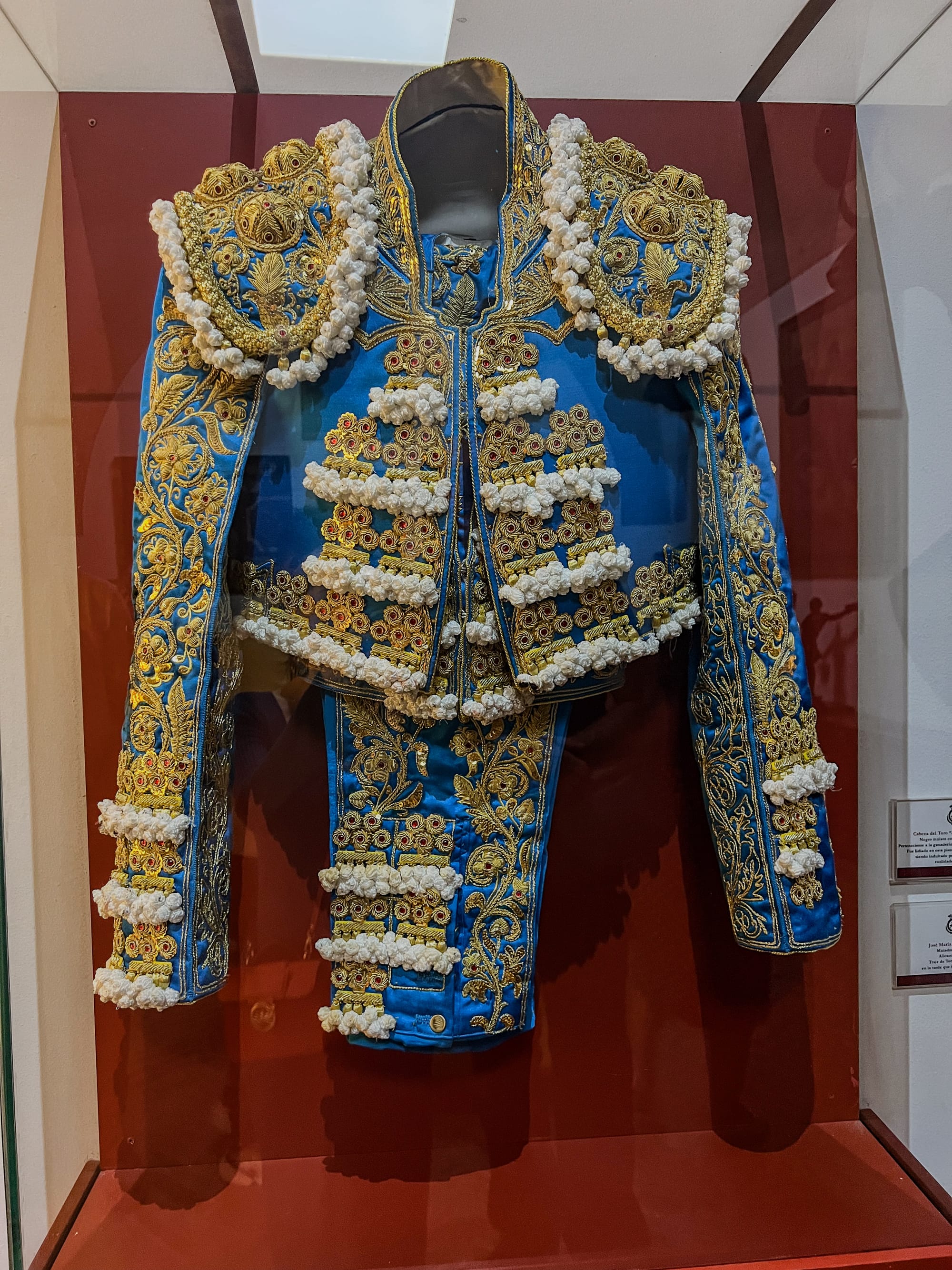
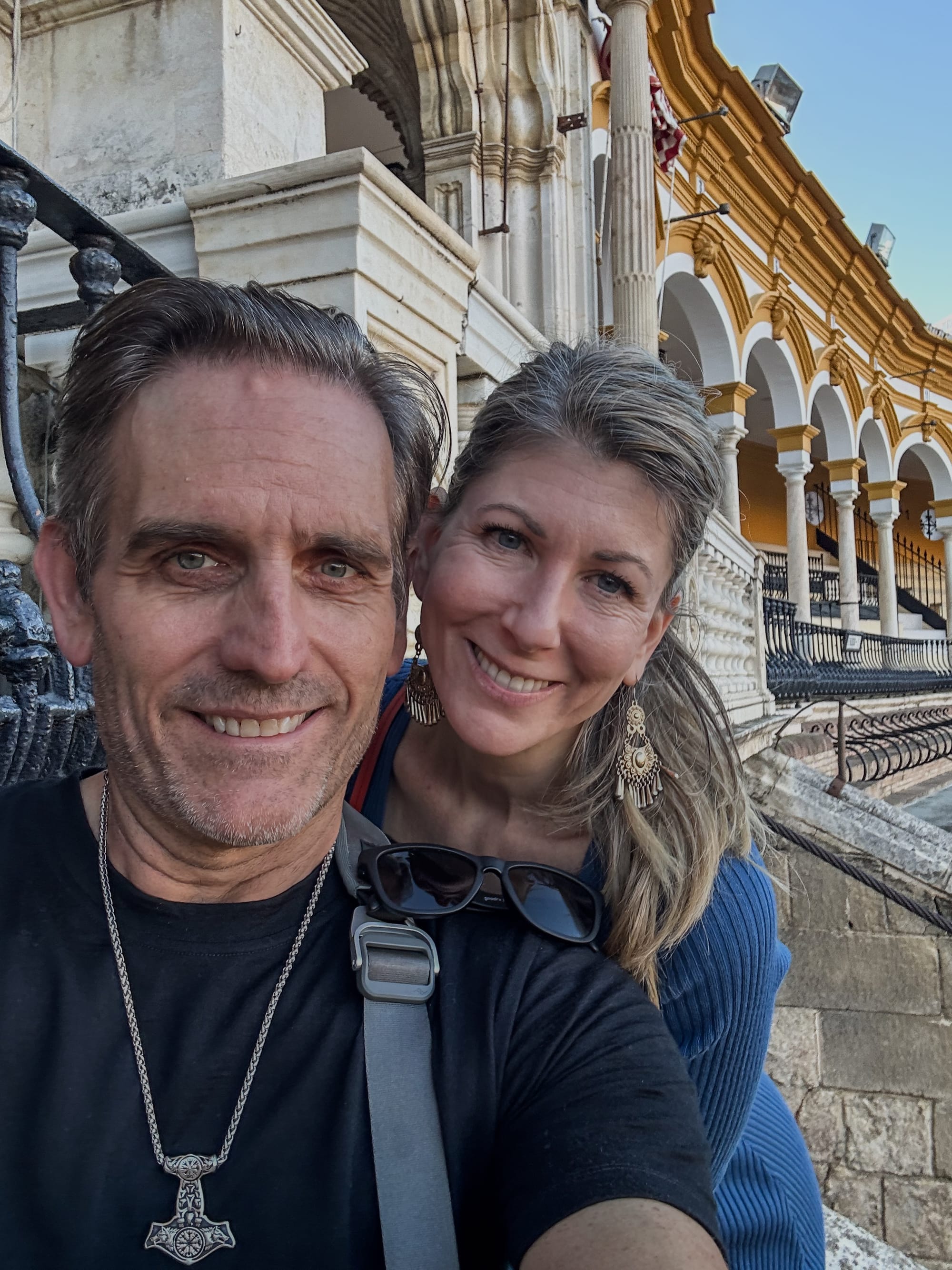
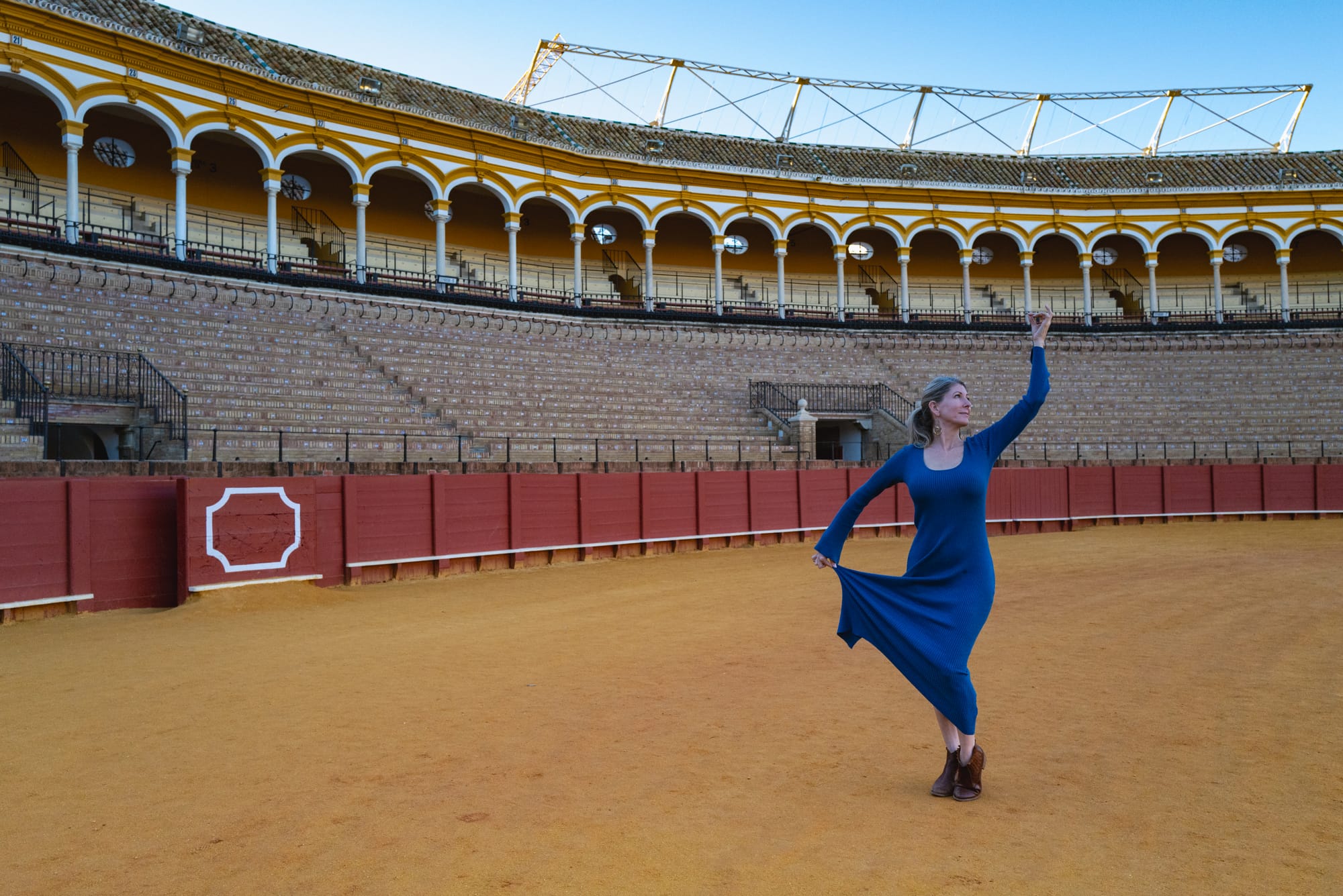
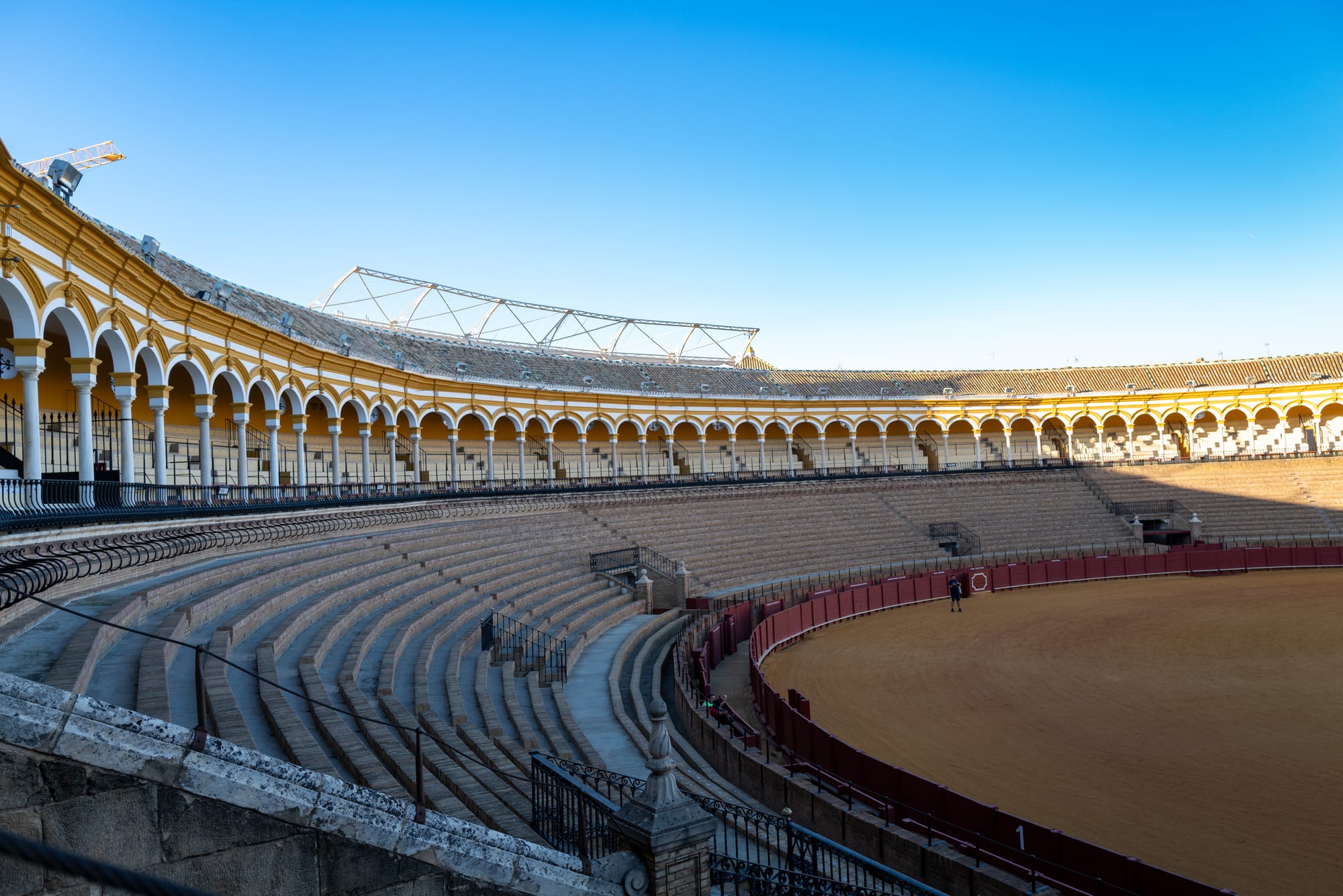
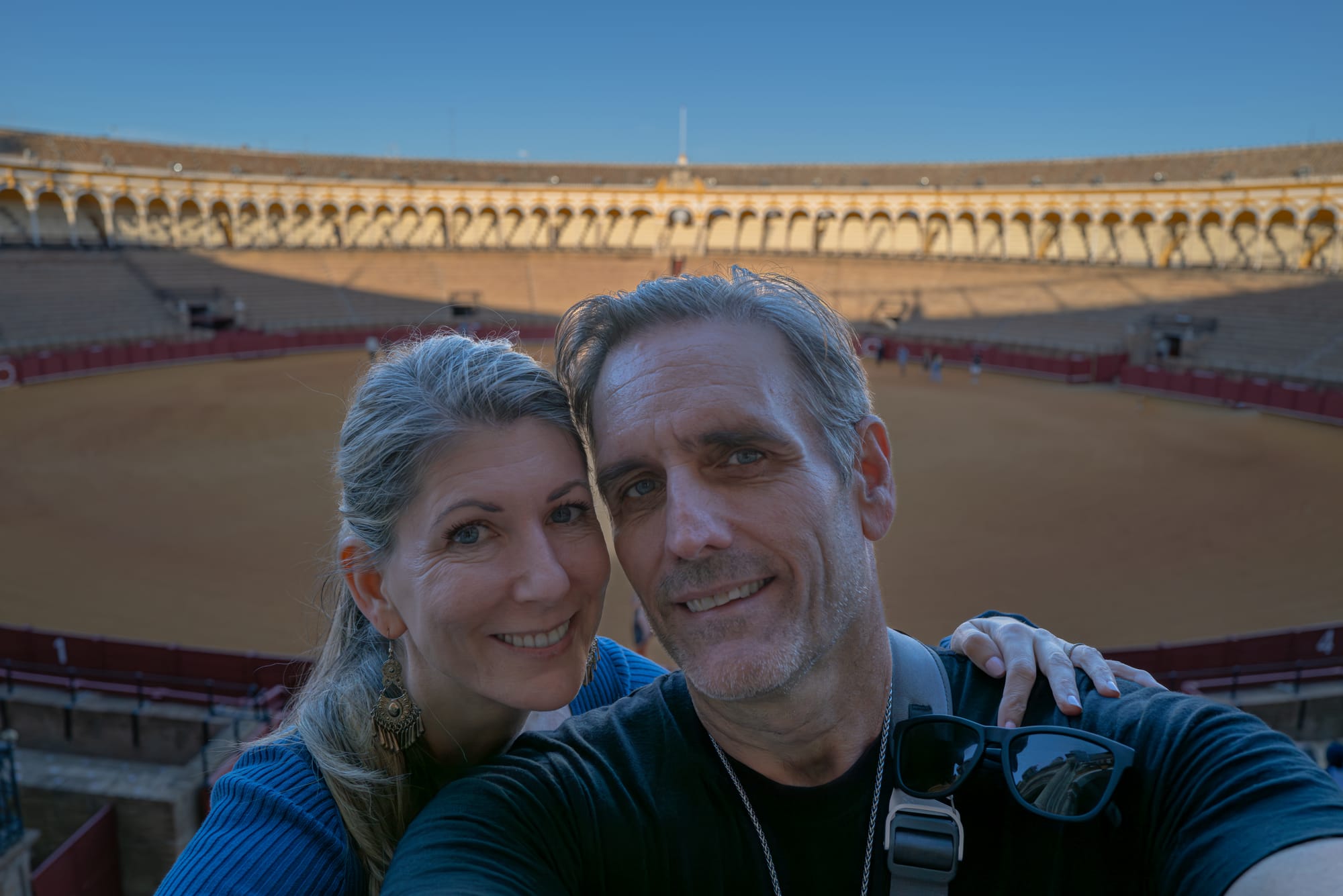
Plaza de toros de la Real Maestranza de Caballería de Sevilla
After the palace, we toured the main bullfighting area in Seville: Plaza de toros de la Real Maestranza de Caballería de Sevilla. There was a small museum section inside with various bullfighting artifacts and the area itself was quite impressive. The Arena was built between the 18th and 19th centuries in a late-baroque style, characteristic of the second half of the 18th century. Michele couldn't resist the urge to give the imaginary crowd a spirited: OLE'!
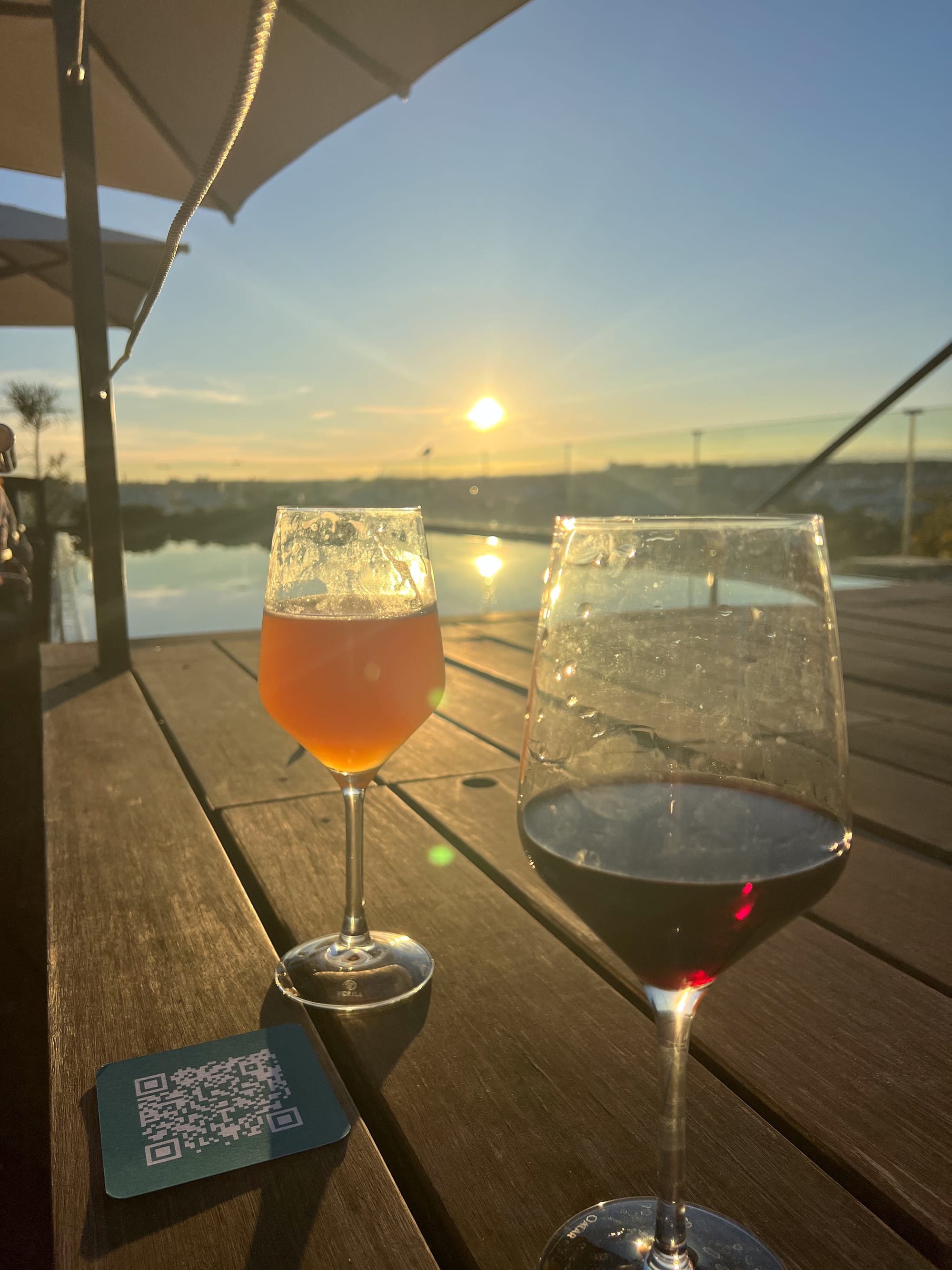
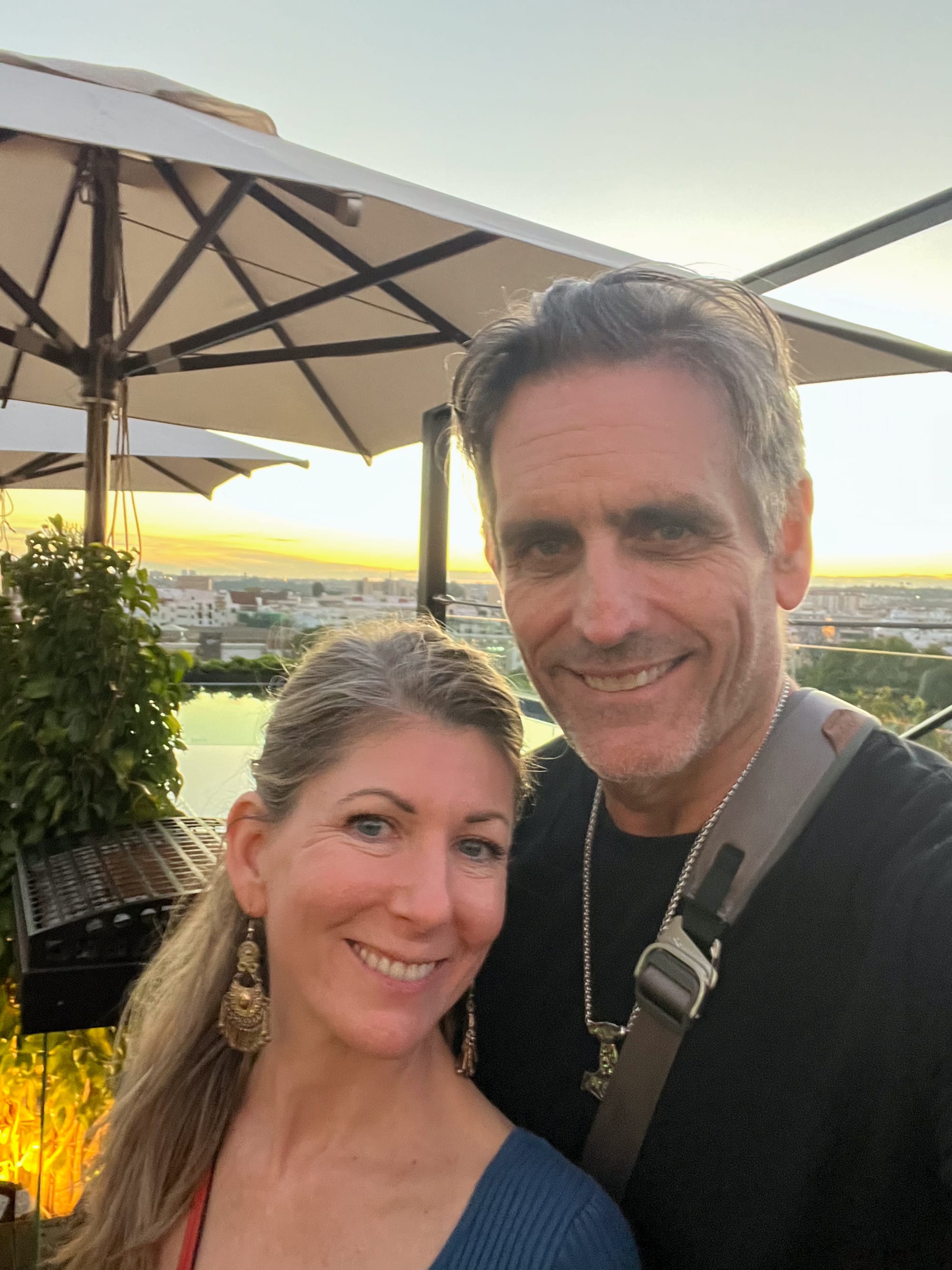
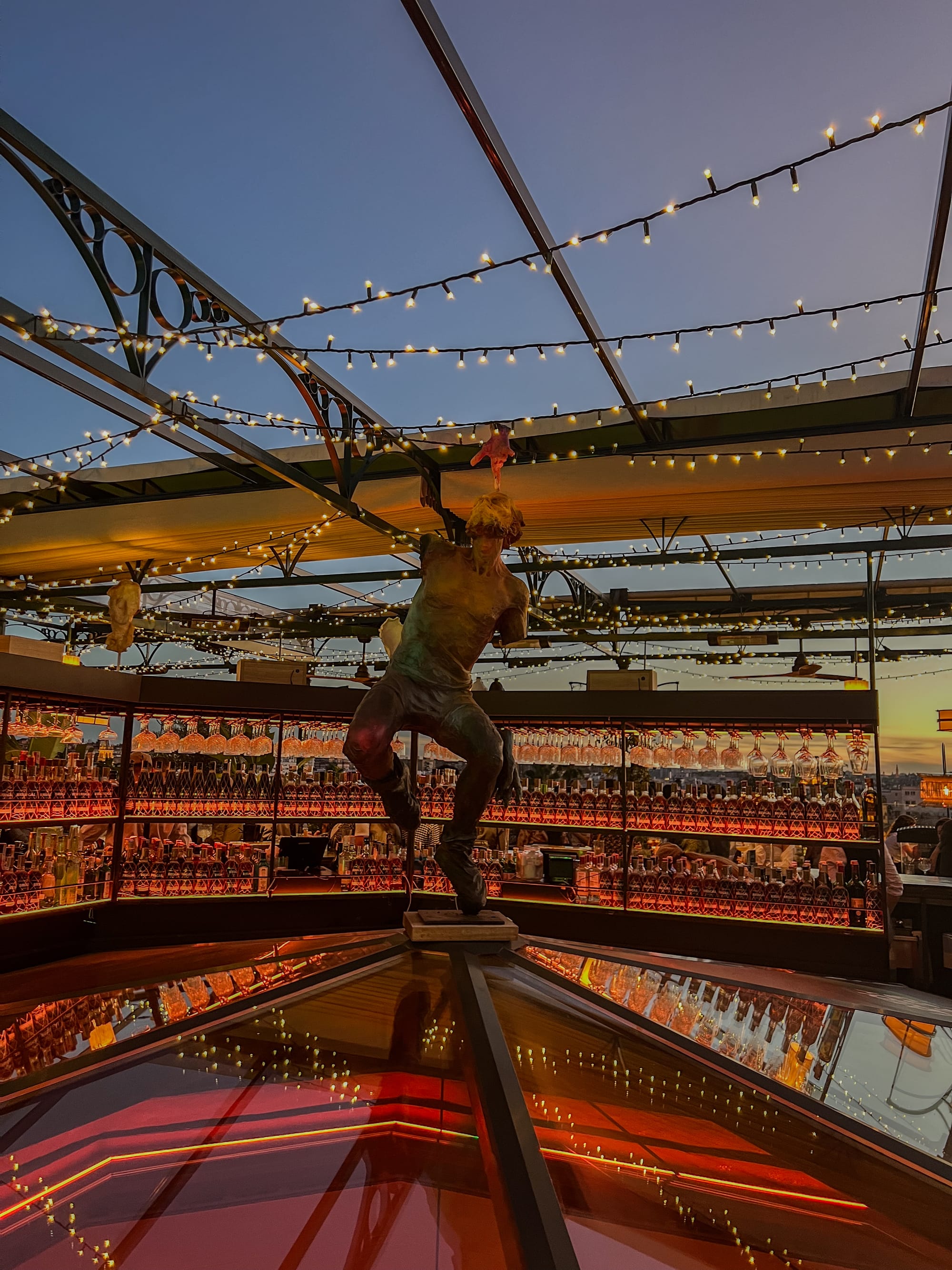
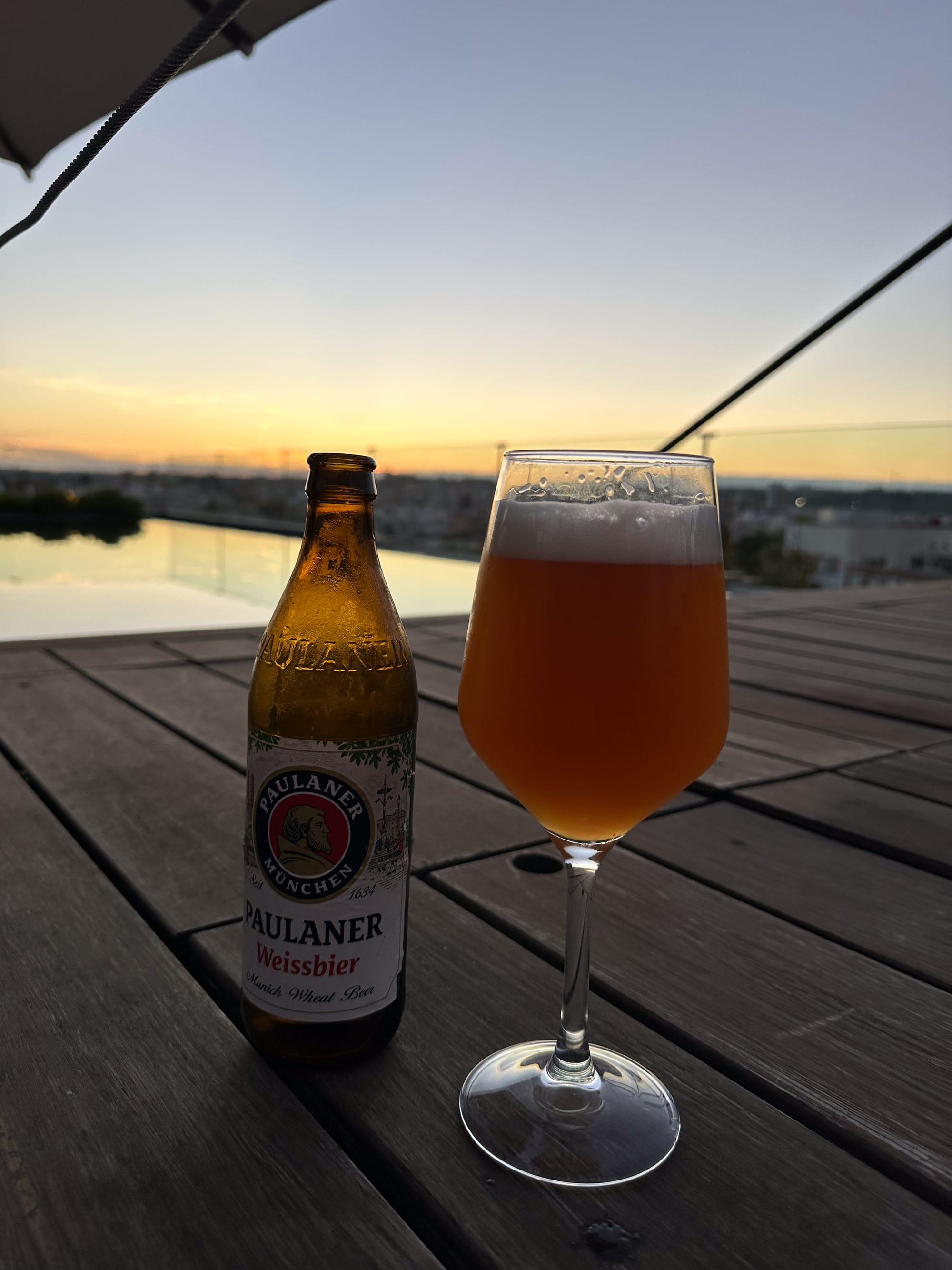
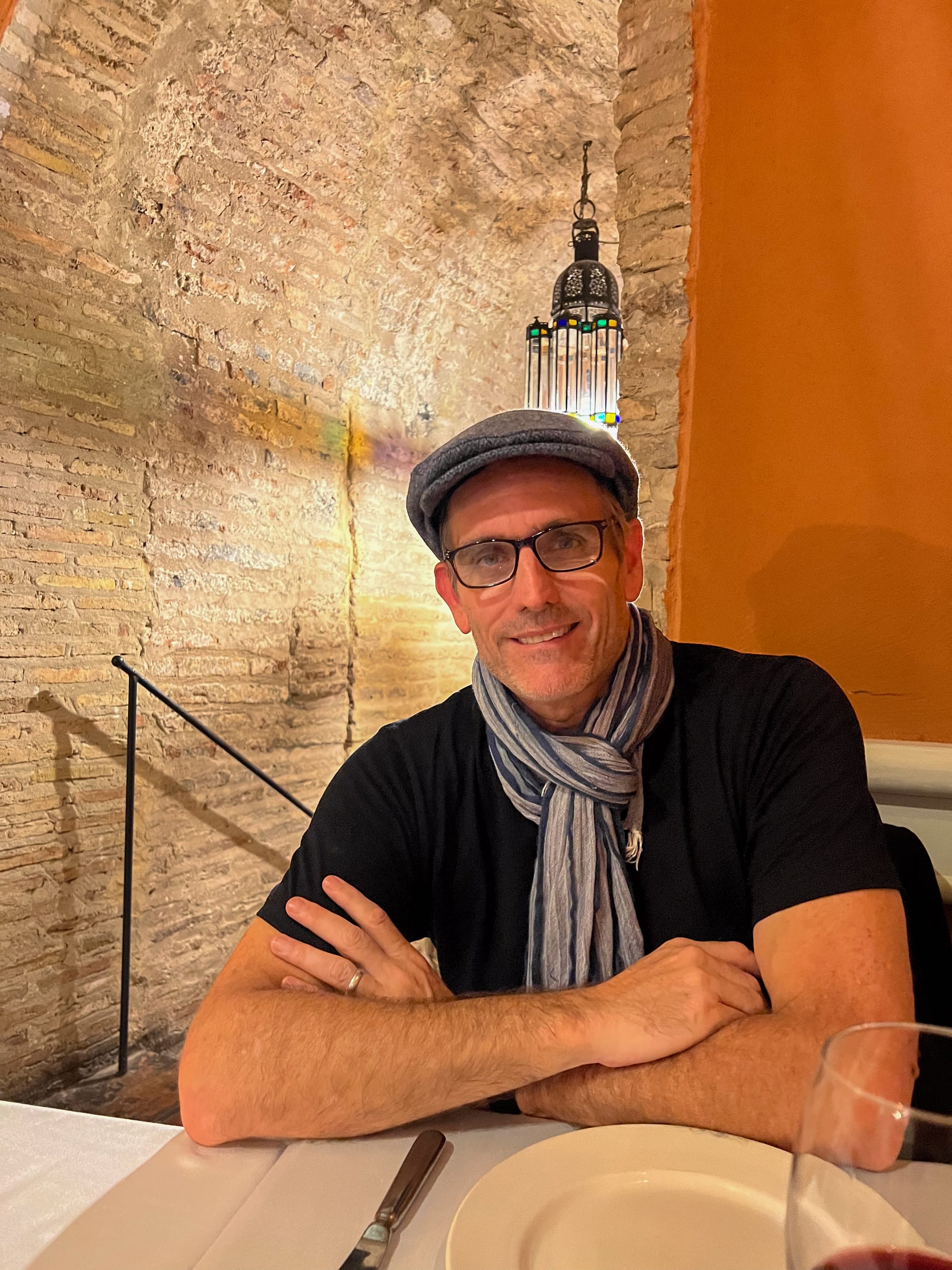
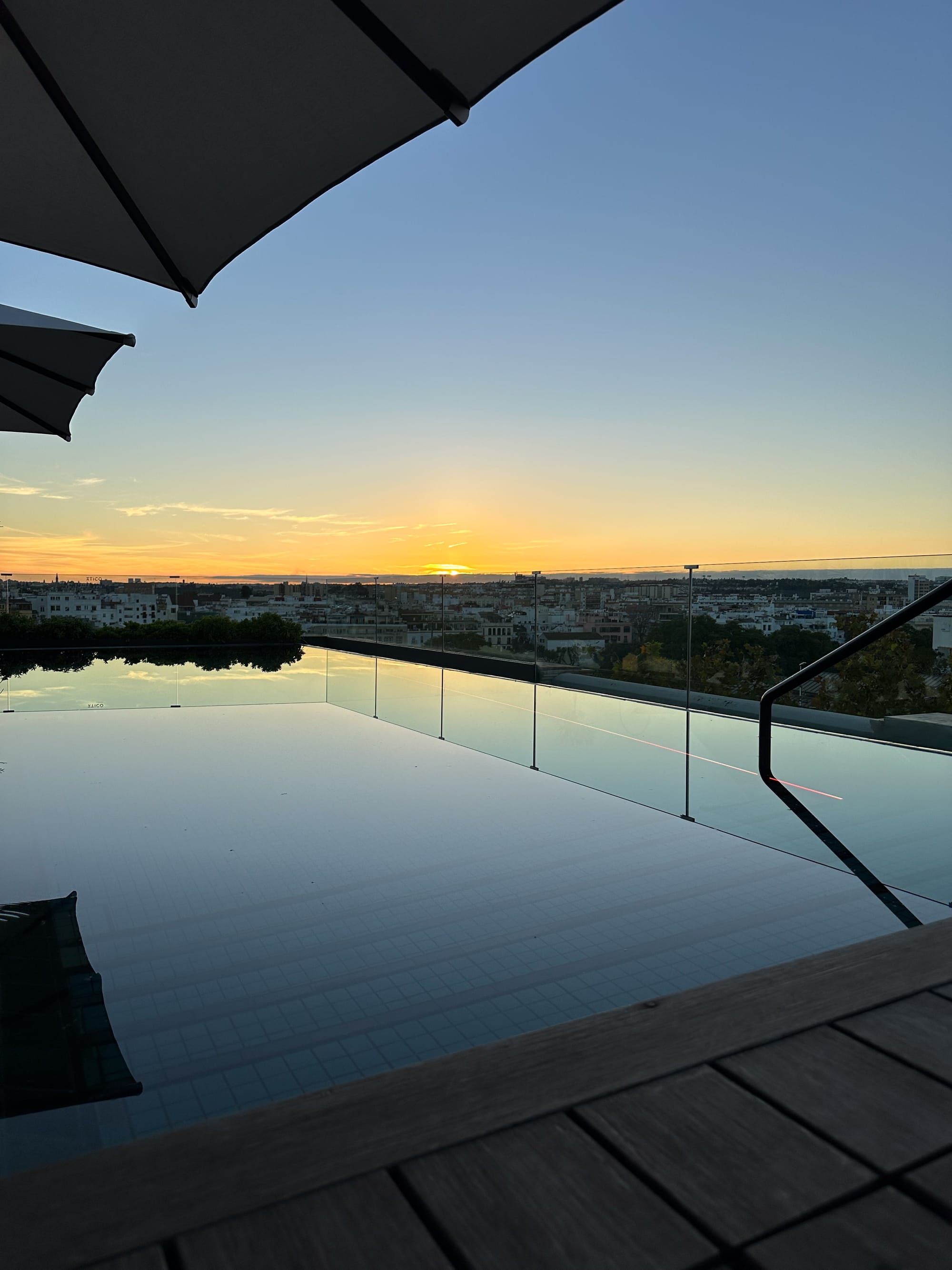
By now evening was upon us, so we headed for a rooftop bar for some drinks and to enjoy sunset over Seville. Afterward, we made our way to La Carbonería, a low key bar in an old coal warehouse. They have a simply outstanding (and free with drink) Flamenco 💃 show. Unfortunately they didn’t allow photos or video of the show, but trust me when I say this was the one of the most visceral, impactful, passionate, and impressive things I've ever seen in my life. We met a lovely young couple that was nice enough to share their front row table with us, and we hope to see them again someday the next time we are in Paris. After the show we had a late dinner at Restaurante San Marco Santa Cruz to finish our evening. It was an absolutely magical way to conclude our time in Seville.
Stay tuned for Part Four of the series, covering Cordoba.
